
Public Schools of North Carolina
State Board of Education
Department of Public Instruction
Public Schools of North Carolina
Facilities Guidelines
Revised January 2019
In compliance with federal law, including the provisions of Title IX of the Education Amendments of 1972, NC
Department of Public Instruction administers all state-operated educational programs, employment activities
and admissions without discrimination because of race, religion, national or ethnic origin, color, age, military
service, disability, or gender, except where exemption is appropriate and allowed by law.

Foreword
Facility Guidelines (January 2019) ii
The responsibility for providing public school facilities in North Carolina rests with the counties and the special chartered
school districts within them. State support for school construction has been provided through state bond issues in 1949,
1953, 1963, 1973, and 1996, when it became apparent that local resources could not keep pace with growing facility needs.
In 1987, the Public School Building Capital Fund was created to use a portion of Corporate Income Tax revenue for school
construction. Additional State support for school construction has been provided through the NC Education Lottery since
2006. Local boards of education, which are the legal owners of school facilities, are responsible for planning and erecting
appropriate facilities to support instructional programs.
The “Finance Act of 1987” established the North Carolina Public School Facilities Standards. In August, 1996, the North
Carolina General Assembly enacted legislation which directed that these facility standards become facility guidelines. It
further directed the State Board of Education to appoint the Public School Facilities Task Force to review and make
recommendations for revision of the guidelines, which define and describe minimum facilities to ensure educational
program appropriateness and long-term cost efficiency. The Task Force was comprised of educators, facilities management
professionals, design and engineering professionals, representatives of the North Carolina County Commissioners and
School Boards associations, and representatives of the State Treasurer’s office.
This publication reflects the work of the 1996 Public School Facilities Task Force. The original edition was approved by the
State Board of Education in January, 1997. Revisions, updates and additions have been made to the facility guidelines
within this publication periodically since then to comply with subsequent legislation enacted by the General Assembly, to
maintain relevancy with respect to changes in public school needs, and to continue to ensure educational program
appropriateness and long-term cost efficiency of school facility design.

Table of Contents
Facility Guidelines (January 2019) iii
Summary.............................................................................................................................. v
Long-Range Planning ........................................................................................................... 1
School Sites .......................................................................................................................... 3
Regular Classrooms ............................................................................................................. 5
Science ................................................................................................................................. 8
Small-Group Resource Rooms ........................................................................................... 10
Exceptional Children .......................................................................................................... 11
Arts Education – Music ...................................................................................................... 13
Arts Education – Visual Arts .............................................................................................. 15
Arts Education – Theater Arts ........................................................................................... 16
Arts Education – Theater Arts – Auditoriums .................................................................... 17
Arts Education – Dance ..................................................................................................... 19
Career and Technical Education ........................................................................................ 20
Media Centers ................................................................................................................... 23
Technology Infrastructure ................................................................................................. 26
Physical Education ............................................................................................................. 27
Administration ................................................................................................................... 29
Student Support Areas ...................................................................................................... 30
Staff Support Areas............................................................................................................ 31
Commons, Circulation and Entries .................................................................................... 33
Child Nutrition – Cafeterias ............................................................................................... 36
Building Support Areas ...................................................................................................... 39

Table of Contents
Facility Guidelines (January 2019) iv
Specialized Construction:
Pre-Engineered Metal Building Systems…………………………………………………………..40
Mobile / Modular Buildings and Modular Construction ...................................... 40
Fieldhouse, Concession and Other Smaller Construction Projects ...................... 41
Outdoor Bleachers................................................................................................ 43
Designing Safer Schools ..................................................................................................... 44
High Performance Buildings .............................................................................................. 47
Plumbing and Mechanical ................................................................................................. 48
Electrical and Lighting ........................................................................................................ 54
Appendix:
General Statute 115C-521. Erection of School Buildings ................................................ 58
Feasibility and Cost Analysis, as Required by GS 115C-521 ............................................. 61
Class Sizes and Teacher Allotments ................................................................................. 62
Stairwell Sign for Multi-Story Elementary Schools .......................................................... 64
General Design Information ............................................................................................ 65
Deviation from the North Carolina Public School Facilities Guidelines .......................... 69
Deviation from the North Carolina Public School Facilities Guidelines Form ................. 70
Recommended Lighting Systems, with Illumination Levels ............................................ 71
Projects Reviewed & Not Reviewed by School Planning ................................................. 73
Project Review Transmittal Form .................................................................................... 74
Definitions and Abbreviations ......................................................................................... 76
1996 Public School Facilities Task Force Members….…………………………………………………..77

Summary
Facility Guidelines (January 2019) v
In July, 1987, the North Carolina General Assembly enacted legislation to provide funds for public school
construction, to assist county governments in meeting their capital building needs, and to provide additional
funds for selected counties with the greatest critical school facility needs. The legislation follows the state’s Basic
Education Program, which assures every child in North Carolina “a program of instruction which is fundamentally
complete and which will provide a thorough grounding in … the arts, communication, media and computer skills,
second languages, healthful living, mathematics, science, social studies and vocational education.”
At the direction of and in accordance with subsequently enacted legislation (see Forward), the Public Schools of
North Carolina Facilities Guidelines have been developed to provide school systems and designers consistent and
reliable information to use as a basis for the design of new school buildings, additions and renovations. These
guidelines define and describe the educational spaces needed to support a modern, comprehensive educational
program and sets minimum guidelines for types of spaces and for sizes of spaces. They were developed to
enhance the ability of Administrators, teachers and lay persons within local school systems, as well as design
professionals, to plan effective and efficient facilities that maximize instructional opportunities for students.
Facilities Guidelines are intended to provide strong direction for school design while maintaining local control of
the design process.
Facilities Guidelines are also intended to enhance the performance of the following tasks:
(1) evaluating the functional adequacy of existing facilities;
(2) determining facility needs; and
(3) developing sound, long-range building and capital improvement plans.
Facilities Guidelines do not replace the need for educational specifications. Educational specifications should be
developed by school planners to adequately describe the educational program to be implemented for a school
or school facility. Instructional staff should be involved in the development of educational specifications and the
review of facility design. By using the specifications, planners should be able to determine the unique spatial
needs required to support individual programs as well as which spaces can serve multiple activities or functions.
Although intended to ensure adequacy, some Facilities Guidelines may pose a challenge with regards to the
efficient design of a facility. To avoid this situation, the guidelines allow for minor deviations in spatial
requirements where design efficiency dictates. There may be other circumstances for which various guidelines
are not appropriate or cannot be met, such as atypical school programs or special facility conditions. The
guidelines have enough flexibility to accommodate these circumstances and still ensure adequacy of program
and facility design. While such flexibility is essential to good design, it must not minimize the value and use of
the guidelines.
Some Facilities Guidelines regarding space utilization may not be practical or possible for small schools to meet,
especially schools with multipurpose spaces that serve specialized needs such as dance, theater arts, or Career
and Technical Education labs. The intent of the guidelines is to ensure that adequate space is provided for
classes and activities that make up instructional programs, as recommended by the North Carolina Standard
Course of Study. As such, multipurpose spaces must have the size, furniture, equipment and storage needed to
be compatible with the programs intended for those spaces. Where single spaces can adequately provide for
multiple uses, the Facilities Guidelines will be considered met.
Numerous older school facilities are not in compliance with many of the Facilities Guidelines. Efforts to achieve
partial or full compliance for such facilities may not be economically feasible with a single new construction or
renovation project. Consequently, phased construction is often necessary and acceptable. Whenever a new
construction or renovation project is undertaken and spaces required to support the program per the Facilities
Guidelines are not provided in that phase of construction due to lack of funding or for other reasons, those
spaces should be shown or noted on the construction documents as being part of a future phase of construction.

Summary
Facility Guidelines (January 2019) vi
Continued from Previous Page
Facilities Guidelines are recommended minimums and should neither be construed as averages nor as standards,
except as required for science rooms. They are not intended to supersede or take precedence over existing laws
and codes that are defined and enforced by other agencies.
If the program developed for a facility differs substantially from the Facilities Guidelines, then a permanent
record of deviations must be prepared for that facility. Copies of this record are to be forwarded to the local
Board of Education, the project Designer, and the State Board of Education, where it is to be placed in the
permanent file for that facility. The information provided by the record of deviation is subject to quarterly
review by the State Board of Education.
Program planning for and the design of permanent school buildings and facilities must be reviewed by the School
Planning Section of the North Carolina Department of Public Instruction. The purchase, placement and use of
modular, mobile or otherwise relocatable classroom units must be reviewed AND approved by the School
Planning Section. Per NC General Statutes enacted in 2009, plans for science laboratory areas in middle school
and high school buildings must be reviewed AND approved by the School Planning Section as being compliant
with all State Board of Education policies related to science laboratory safety.
General design information for various types of school buildings and facilities is provided in the Appendix of this
publication, as is a listing of the types of projects reviewed by DPI School Planning. Information regarding the
development of construction documents for such projects is provided in related publications entitled “Design
and Construction Procedures” and “Engineering Checklist for Public School Facilities,” both of which are posted
on the DPI website (https://www.schoolclearinghouse.org). Contact information for members of the School
Planning Staff is also posted on the DPI website.
Construction documents for new building and renovation projects must be submitted for review, approval and
permitting by appropriate state and local agencies and Authorities Having Jurisdiction, including the following:
State Dept. of Insurance/ Office of State Fire Marshal
Compliance with life safety regulations of the State Building Code
NC Department of Health and Human Services
Approval of kitchen sanitation
NC Department of Environmental Quality (formerly NC Department of Environment and Natural Resources)
Approval for new on-site water systems
Approval of on-site waste water systems
Approval of soil sedimentation and erosion control plans, where one acre or more is to be disturbed
(Note: For projects in larger municipalities, the local authority may have jurisdictional approval rights)
US Army Corps of Engineers
Approval of wetlands development (NOTE: NC DEQ should be contacted first)
State Department of Agriculture
Approval of propane gas installations
NC Department of Transportation
Driveway approval
State Board of Education
G.S. 115C-521, Erection of School Buildings (see Appendix)

Long Range Planning
Facility Guidelines (January 2019) 1
The School Facilities Finance Act of 1987 requires local boards of education to develop long-range organizational and facility
plans. Specifically, the legislation states, “Local boards of education shall submit their long-range plans for meeting school
facility needs to the State Board of Education by January 1, 1988 and every five years thereafter.” In preparation for the
1996 State Bond Issue, the cycle for submitting facility needs plans was changed to Fiscal Year 1995-96 and every five years
thereafter.
The School Planning Section of the Department of Public Instruction (DPI) provides assistance to local boards of education
as needed to conduct Facility Needs Surveys. DPI’s assistance does not, however, include conducting comprehensive
surveys of local school systems. Such surveys can be conducted by private consultants or by the school system’s own staff
(with guidance from School Planning) and can provide an evaluation of and recommendations for school organization and
facilities.
To develop a long-range plan that includes efficient utilization of existing facilities, priorities for new construction and
renovation, cost estimates, and estimates of available resources, a board of education must address the following five
questions:
• How many schools are needed?
• Which grades will they serve?
• How many students will they accommodate?
• Where will they be located?
• Which students will they serve?
In the past, schools in most rural school systems were organized to serve grades 1-12, or grades 1-8 and 9-12, while schools
in urban school systems were generally organized to serve grades 1-6, 7-9 and 10-12. In recent years there has been a
significant movement statewide toward a middle school organization plan. The most common middle school organization
plan has schools that serve grades K-5, 6-8 and 9-12. Organizational plans with schools that serve grades K-4, 5-8, 9-12, or
K-6, 7-8 and 9-12 are, however, not uncommon.
While the movement toward a middle school organization plan has been significant, other organizational plans exist and
will continue to be appropriate in some school systems because of their existing facilities, natural geographic boundaries,
sparsity of students, road patterns, travel times and distances to school facilities. It is the view of the Department of Public
Instruction and the State Board of Education that a three-tier organization plan, one that allows a program specifically
designed for students in the middle grades, is most desirable, and that an organization plan with schools serving grades K-5,
6-8 and 9-12 is preferable. The State curriculum and the Basic Education Program are designed around this type of
organization plan. Local boards of education should continually evaluate their organizational plans and work toward this
structure whenever and wherever feasible.
Many school systems in North Carolina have programs for three- and four-year-old children. For some school systems these
programs are best located on the campuses of neighborhood schools. For others, programs for pre-school children may be
more appropriately located in neighborhood centers. As local boards of education develop long-range plans for possible
reorganization and new facilities, they need to consider where programs for three- and four-year-old children should be
located.
Some school systems have early college programs and/or dual enrollment programs that are provided in facilities on a
community college or university campus, or in other locations. Resources required at such remote sites should be
considered by local boards of education as they develop long-range plans.
Local boards of education are urged to keep abreast of educational trends that affect the design of school facilities.
Following are examples of such trends:
• Providing center-oriented instruction for upper elementary grades as well as middle school grades.
• Implementation of various team organization plans for each grade level in middle schools.
• Dividing high school students into academic houses or pods.

Long Range Planning
Facility Guidelines (January 2019) 2
Continued from Previous Page
Local boards of education are also encouraged to consider optimal school size in their long-range planning. The
Department of Public Instruction and the State Board of Education share the view that schools with membership sizes that
fall within the following ranges can offer excellent educational programs with comprehensive curriculum while providing
the most efficient use of space and personnel at a reasonable cost per student:
• Elementary schools: 450 to 700 students
• Middle schools: 600 to 800 students
• High schools: 800 to 1,200 students
Some studies regarding school climate and safety suggest that schools with smaller membership sizes may have certain
advantages over schools with larger membership sizes. Those studies cite a positive relationship between smaller school
size and a number of variables associated with school climate and order. Some researchers suggest that ideal school
membership sizes for improved safety and violence reduction are as follows:
• Elementary: 300 to 400 students
• Middle: 300 to 600 students
• High: 400 to 800 students
Each local board of education must ultimately determine school sizes that best serve their purposes. School size selection
must take into consideration factors such as existing facilities, areas of population density, natural geographic barriers, road
patterns, transportation times and distances, objectives for student achievement, student and staff safety, effective and
efficient utilization of fiscal resources, and local preferences. Size selection often becomes a compromise among all these
factors. For example, multiple small schools of all grade levels, placed within a single large facility, may provide a
satisfactory compromise. The primary planning goal should be to have schools that are large enough to provide
comprehensive programs and student services, yet small enough to offer a personal, caring atmosphere, all at a reasonable
cost.

School Sites
Facility Guidelines (January 2019) 3
Guidelines
Grades
Developable
Acreage
Notes
K - 6
10 + 1/100 ADM
5 - 8
15 + 1/100 ADM
7 - 9
20 + 1/100 ADM
9 - 12
30 + 1/100 ADM
A high school may need an additional area of 10 acres or more if a stadium and
spectator parking are anticipated
ADM denotes Average Daily Membership
The above guidelines assume a rural or suburban area with a one story building, room for expansion, desirable outdoor
play areas and all parking, queuing and buses located on site. Urban sites and areas that follow the tenets of "smart
growth" may find creative solutions on substantially smaller sites. This may involve off-site parking, bus loading only (no
bus parking), limited play areas, multi-story construction and sharing of certain facilities with other adjacent entities. In
these cases, innovative solutions for parking, physical education facilities and other site amenities may be required.
School Planning will assist representatives of the local school unit in determining if the site will be safe and functionally
adequate.
Traffic
Drives that completely circle a building or have to be crossed when going from building to building or playground are
hazardous and should be avoided. Parent auto traffic and bus traffic should be separated once they are on the school
site. Student auto traffic and parking should be separated from all other traffic and parking and easily supervised. Fire
lanes around the building should be closed off from maintenance and other traffic with "break-away" bollards and,
preferably, hardened surface with grass sown above. Consultation with the local fire marshal may be required.
Hazards
Avoid locating facilities near electric power transmission lines and environmental hazards. All site functions (except entry
drives) and facilities should observe the clearances noted in The School Site, Land For Learning.
Site Evaluation
Size (number of acres)
Plant Life (trees; bushes)
Road frontage (two or more roads are best)
Noise/Air Pollution (airport; traffic; industrial)
Shape (rectangular 3:5 ratio preferred)
Utilities (availability)
Topography Drainage (Useable acreage)
Television Signals (ETV; school TV)
Access (to separate traffic types on size)
Security/Protection (emergency access; lighting)
Traffic (busses; cars; pedestrians)
First Cost (cost per acre)
Soil Conditions (foundations; waste disposal)
Developed Cost (actual cost)

School Sites
Facility Guidelines (January 2019) 4
Comments and Recommendations
The acreages refer to usable land (land that can be developed). Additional acreage should be purchased to account for
areas that cannot be built upon, such as steep slopes, wetlands, rights-of-way, easements, setbacks, buffers or poor soils, as
well as oddly-shaped tracts. If on-site water or sewer is required, substantial additional acreage may be needed.
Pre-kindergartens and kindergartens should have a separate shared play area. Fencing may be necessary for safety or
control for kindergarten play areas. Fencing is required for licensed Pre-K by the NC Child Care Standards. If the fence or
wall height exceeds 32" the gate may only be latching (not locking). Special attention should be paid to selection of
equipment and surfacing. Solid resilient surfacing is recommended for ADA accessibility, for ease of cleaning/maintenance,
and to avoid the regular replenishment, sifting and cleaning of mulch or other loose-fill surfacing. ADA accessibility
guidelines for Play Areas, available on http://www.access-board.gov (the United States Access Board website) should be
considered when planning such play areas. Assistance with selection and installation of play area equipment can be
provided by a "Certified Playground Safety Inspector" through the playground safety program of NC State University’s
Recreation Resources Service (http://cnr.ncsu.edu/rrs/).
All grade levels should have paved activity areas. The number and types of physical education fields depend on the size and
grade structure of the school. Guidelines for athletic fields may be found in The School Site Planner, Land for Learning
publication (https://www.schoolclearinghouse.org/pubs/SchoolSitePlanner.pdf). Small schools should have, at a minimum,
a rectangular, soccer-sized, multi-purpose, grassy field. Care should be taken in the selection of artificial turf for playfields
because, per the Center for Disease Control (CDC), certain fibers used in artificial turf may release lead as the turf ages
(http://www.cdc.gov/nceh/lead/tips/artificialturf.htm).
Clear sight lines should be provided for visual supervision of facility features such as site entrances, parking lots,
playgrounds, athletic fields, field houses, courtyards and building perimeters. Handicapped accessibility to all site functions,
including athletic facilities, is required by the NC State Building Code and the Americans with Disabilities Act (ADA).
Natural features of a new school site should be considered for their potential contributions to the teaching of science.
Natural areas suited to the teaching of biology, earth science and related career and technical courses should be preserved
and shown in a landscape plan. Landscaping should be used to define boundaries and to soften hard edges. Trees should
be pruned up to allow visual surveillance. Shrubs should be pruned down and away from structures to allow for visual
surveillance and to reduce hiding places.
Signage, covered walkways, bicycle racks and other site elements should be provided as needed to define entry points
without obstructing visual surveillance. External alcoves and niches should be avoided. Site elements such as canopies,
fences, walls, mechanical equipment, dumpsters, etc., should be arranged and designed to prevent climbing and
unauthorized access.
Provide appropriate separation between different types and directions of vehicular traffic including passenger vehicles,
buses, service vehicles and emergency vehicles. Pedestrian traffic in auto and bus areas should be carefully studied. Safety
on the school site will carry the same importance as building safety in the review process. Provide separation between
pedestrian traffic and vehicular traffic including traffic calming and raised and/or marked crosswalk when necessary to cross
vehicular ways.
Parking spaces for all staff and itinerant specialists should be provided on-site, as well as 10-20% additional parking spaces
for visitors. Student parking should be provided at high schools for at least one-third of the student population.
Noise generated by on-site mechanical equipment or by nearby industries or transportation systems can interfere with
communication or create a hazard to hearing and should be avoided. To reduce potential injury from industrial accidents,
avoid locating schools near industries that utilize hazardous materials or processes or that generate hazardous by-products
or discharges. Consideration should be given to hazards associated with proximity to rail lines, highways, poor air
emissions, contaminants, compromised water, power plants and other utility facilities, as well as potential terrorist targets.
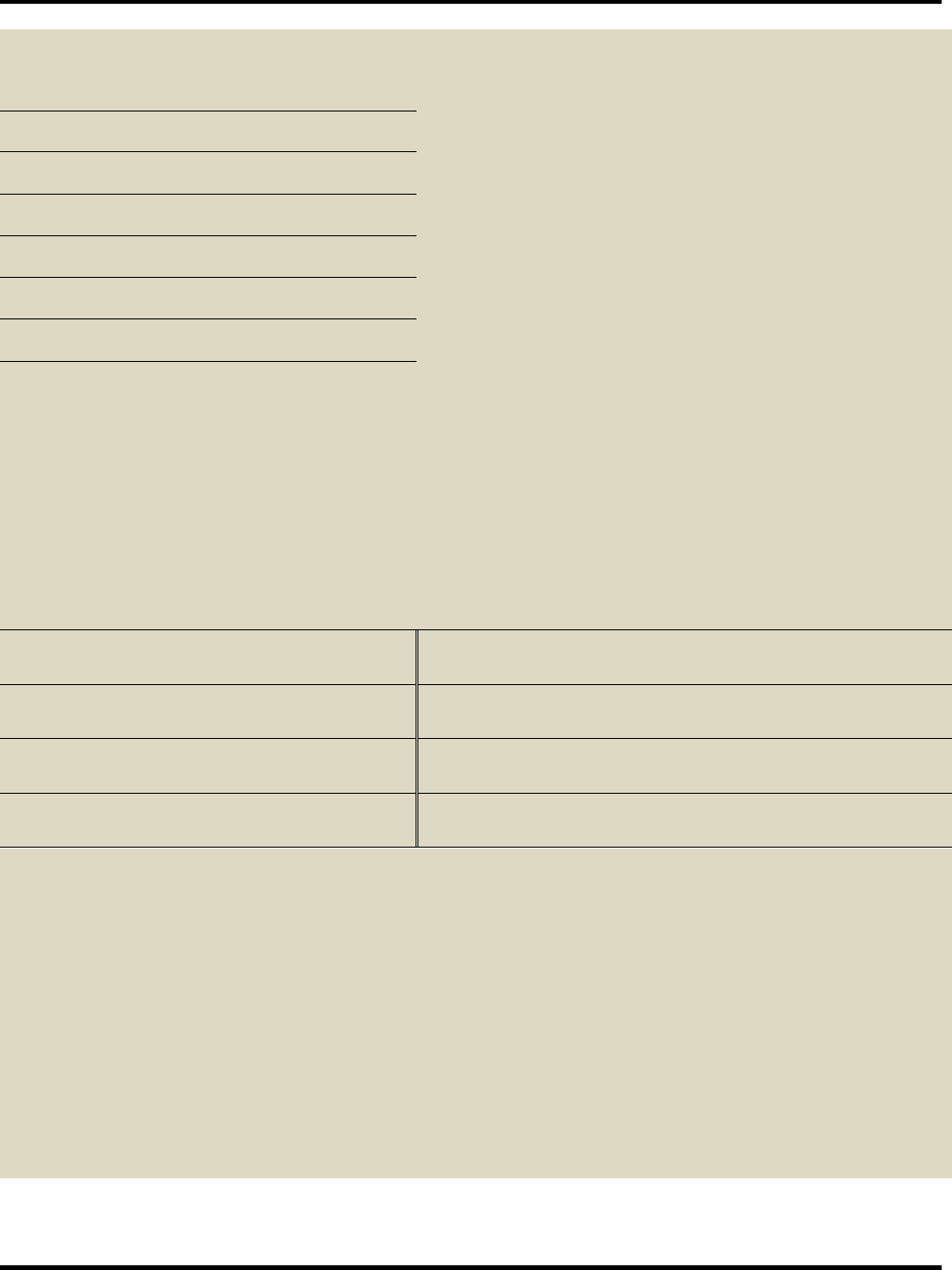
Regular Classrooms
Facility Guidelines (January 2019) 5
Guidelines
Room Sizes
Grade
Net Square Footage
Pre-K (3 & 4 Yr. Olds)*
1,200 – 1,400
K
1,200
1 – 3*
1,000 – 1,200
4 – 8
850 – 1,000
9 – 12
750 – 850
For classrooms less than 1,000 square feet, include an additional 15-20 square feet for each separate desktop computer
workstation provided within the classroom.
*For reduced class sizes (18 children or less), it may not be appropriate to include as many learning centers within the
classroom. School Planning will assist local administrative units to evaluate spatial needs for these situations. Because of
the need for shared program space and instructional amenities within each classroom, square footage-per-student ratios
are not useful.
Ceiling Heights
Windows
Room Size
Ceiling Heights
Grade
Notes
850 SF or less
9’-4”
K – 5
Classrooms should have windows equal to or
greater than 8% of the floor area
851 SF or more
10’-0”
6 – 12
Classrooms should have windows equal to or
greater than 6% - 8% of the floor area
Mobile Classrooms
8’-0”
9 – 12
No more than 20% of the total number of
teaching stations should be windowless
Every room or space used for classroom or other educational purposes shall have at least one outside window for
emergency rescue and ventilation. Such window shall be opened from the inside without the use of tools and shall
provide a clear opening of not less than 20 in. in width, 24 in. in height, and 5.7 sq. ft. in area or 5.0 sq. ft. for grade-floor
openings. The bottom of the opening shall be not more than 32 in. above the floor for Grade 5 and younger pupils and 44
in. above the floor for Grades 6 through 12. Exceptions for windowless classrooms and other special exit provisions may
be found in the NCSBC Section 1030. See also GS 115C-521.
"Rooms for first grade children and younger shall be located on the level of exit discharge. Rooms used for second grade
children shall be located not more than one story above the level of exit discharge" (NCSBC Section 430.3).
School Planning recommends that a sign similar to the one shown in the Appendix be posted in the stairwells of all multi-
level schools serving first grade children and younger. On sloping sites where both floors of a 2 story building may have
exit discharge at grade level, both floors must have grade level discharge at each end.

Regular Classrooms
Facility Guidelines (January 2019) 6
Comments and Recommendations
Classroom Size
The net square footage of a Pre-K room should not be less than 1,200 sq. ft. The net square footage of a kindergarten or
first grade classroom should not be less than 50 sq. ft. below the guidelines. Recessed doors, toilets, coat closets, offices,
and storage rooms are not included in the net instructional area for Pre-K through first grade. To avoid the expense of a
second exit door, 1st-3rd-grade classrooms may be 980 net sq. ft. This does not include storage rooms, teacher offices or
wall thickness.
Classrooms smaller than 1,000 square feet should not exceed a 3:2 length-to-width ratio. Because of problems with sight
angles and distances, the minimum classroom width should be 24 ft. Individual toilets for Pre-K-1 classrooms may be paired
with adjoining classrooms to provide a boys’ toilet and a girls’ toilet. Individual toilets for the first grade may be used to
provide flexibility.
Computers
Classrooms should be equipped with computers or conduits for future computer installation. Classrooms should be
equipped with a two-way communication system for informational and emergency use.
Appliances
In Pre-K through grade 5 classrooms heat-producing appliances, such as ovens or ranges, are hazardous and should not be
installed. A separate cooking center (local option) will not be included in the classroom net square footage. Heat-
producing appliances and counter outlets in instructional kitchens should be on a “kill switch” with a power-on light,
located out of reach to students.
Ceilings
Twenty percent (20%) of a room’s ceiling may be lower than guidelines, provided the North Carolina State Building Code
minimum is met.
Windows
State legislation requires the local board of education to consider the placement of windows to take advantage of the
climate of North Carolina for both light and ventilation.
Cabinets
Cabinetwork should include file drawers, box drawers, wide drawers for poster paper, vertical slots, some open-front bins
and a minimum of “kitchen” type cabinets. Wall units should be 60% open shelving for books and displays and 40% door
cabinets. Tall reach-in cabinets are preferred for teaching supplies. Provide one section for hanging teacher coats.
Wet Areas
A wet instructional area is required by the instructional program in all classrooms for grades K-3 and for grades 4-6 if
science is taught in the classroom. Wet areas are also recommended for middle grade classrooms.
Wet areas should include a sink mounted in a countertop for instructional use. The location of the sink should allow
maximum student participation. The Pre-K educational program requires warm water, and warm water is recommended for
kindergarten.
Pre-Kindergarten, After-School and Pre-School programs
Session Law 2009-123 provides that a public school that voluntarily applies for a child care facility license may use an
existing or newly constructed classroom in a public school for three- and four-year-old preschool students without
modifications to the classroom or building if the classroom:

Regular Classrooms
Facility Guidelines (January 2019) 7
Continued from Previous Page
(1) Has at least one sink for hand washing and one toilet;
(2) Meets kindergarten standards for overhead light fixtures;
(3) Meets kindergarten standards for floors, walls, and ceilings; and
(4) Has floors, walls, and ceilings that are free from mold, mildew, and lead hazards.
Otherwise Licensed Pre-kindergarten, after-school and before-school programs have special requirements because they are
classified as "child care" and are licensed and funded by the NC Division of Child Development. Some key provisions include
providing hot water to the classroom (with temperature limits), a higher toilet ratio of 1:15 children (Pre-K), the use of
protected (usually lensed) light fixtures, enhanced play area surfacing, maintenance requirements and other issues.
Additional information can be found in a document entitled “Chapter 9 – Child Care Rules,” a link to which is posted on the
DPI website (https://www.schoolclearinghouse.org):
• Publications & Guides > School Planning: Facilities Guidelines, Publications, Planning Guides, Space Profiles > Rules
for Child Care Facilities
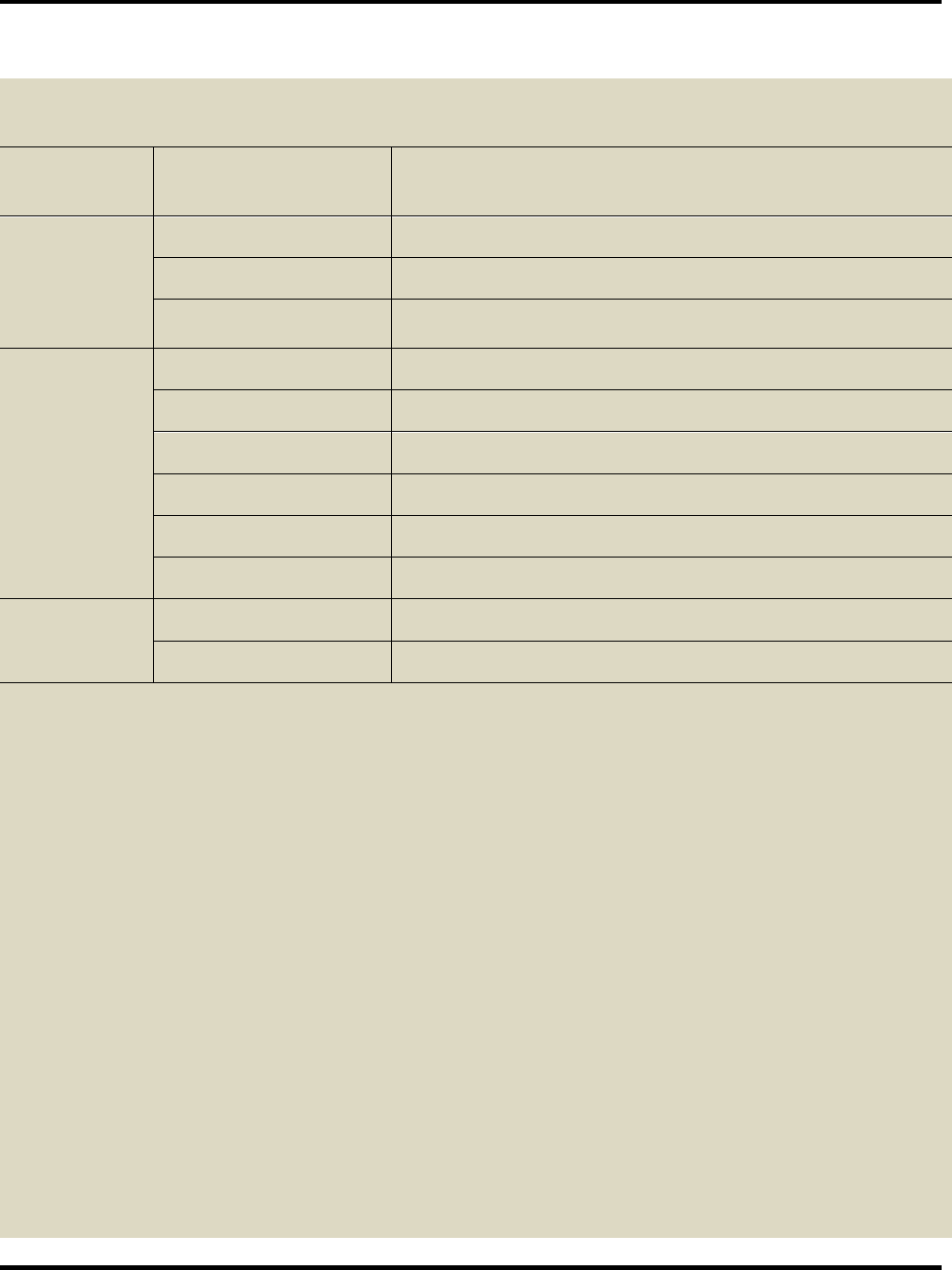
Science
Facility Guidelines (January 2019) 8
Standards / Requirements*
Science
Grade
Rooms
Square Footage
6 – 8
Science
1,000 (with Limited Lab Equipment
Combination Math/Science
1,000 (with Teacher Demo Table only)
Storage/Prep Rooms
250 (may Be Shared up to 4 labs)
9 – 12
Physical Science
1,200
Biology
1,200
Physics
1,200
Earth Science
1,400
Chemistry
1,500
Multipurpose Science
1,500 (if required)
9 – 12
Storage/Prep Rooms
250 (may be shared by 2 labs)
Chemical Storage Room
80
*Revisions per House Bill 42, Session Law 2009-59 Science Safety in the Public Schools creating G.S. 115C-81.4. Science
Safety Requirements and G.S. 115C-521(c1) (approval required by State Board of Education)
The State Board of Education must approve all Middle and High School science facility plans for safety prior to
occupancy. The minimum areas shown must be met unless the required scaled floor plans show adequate circulation and
teaching space to ensure safe instruction with all the required and proposed equipment and furniture.*
Sinks: For work stations requiring sinks provide at least one sink per 4 students in each lab.
Demonstration Table: A teacher demonstration table shall be provided in each lab and science classroom.
Preparation/Storage Middle School: A preparation/storage room shall be provided within 150ft maximum of Middle
School science rooms
Preparation/Storage High School: Preparation/storage rooms shall be adjacent to High School science rooms
Hazardous Chemicals: Hazardous chemicals stored in preparation rooms or chemical storage rooms are required to be in
commercial, specially designed storage cabinets (separate cabinets each for acids, flammables and corrosives).
Gas Outlets: Do not provide gas outlets in science rooms where not required by the program.
Eye Protection/Safety Showers: Classroom/lab areas Safety goggle cabinet.
Hoods: Chemistry labs shall be equipped with fume hoods vented to the exterior.

Science
Facility Guidelines (January 2019) 9
General Safety: Fire extinguishers shall be located in each laboratory area.
Communication: Classrooms and labs shall be equipped with a 2-way communication system for informational and
emergency use.
For additional requirements related to these items see School Science Facilities Planner, including Appendix A and
Checklist for Science Safety Requirements.
Windows K-12 Project and science rooms should have windows
Ceiling Height 10’-0”
Ceiling height should be minimum 10’-0”. Twenty percent (20%) of the room’s ceiling may be lower than 10’-0” provided
the North Carolina State Building Code minimum is met.
Comments and Recommendations
NC General Statutes require that the NC Board of Education (through DPI School Planning) approve public Middle and High
school science plans for safety. These requirements can be found in the “School Science Facilities Planner” on the DPI
website https://www.schoolclearinghouse.org.
When a middle school grade level has paired teams for language arts/social studies and math/science, there should be a
50% mix of each type of room for that grade level. For four-teacher teams (language arts, social studies, math and science)
one-fourth of the classrooms should be science rooms
A multipurpose science room is appropriate in small high schools where the enrollment does not justify separate specialized
science rooms.
Storage and teacher preparation rooms can be shared (square footage is not included in minimum size (lab areas above).
Darkrooms, if required, could be shared with the art and career and technical education (vocational) programs. A 1,500-
square-foot chemistry room includes a lecture area and work stations.
Access to a large-group instructional area, auditorium or teaching theater with AV capability is needed for special lectures.
To enhance supervision and prevent accidents, science laboratory classes should have no more than 24 students.
To enhance safe movement during power interruptions, daylight or battery-powered lighting sources should be provided in
locker rooms and in laboratories containing hazardous equipment.
Fire extinguishers shall be located in all laboratory areas.

Small-Group Resource Rooms
Facility Guidelines (January 2019) 10
Guidelines
Area and Ceiling Heights
Description
Square Footage
Ceiling Heights
4 – 12 Student Remediation & Resource Labs
450
9’ – 4”
1 – 4 Student Testing, Speech and Guidance Rooms
200
8’-0” min.
Windows: Windows are required by the North Carolina State Building Code for all rooms subject to student occupancy
to the same extent as for regular classrooms.
Comments and Recommendations
One or more small-group classroom(s) should be provided for remediation, conferencing, guidance, testing, etc., for groups
of up to twelve. Some smaller rooms may also be needed in addition to the 450-square-foot rooms for smaller group
activities.
Storage space for various instructional materials and equipment should be provided. Lockable cabinets keyed differently
are desirable, especially where more than one teacher shares the same space.

Exceptional Children
Facility Guidelines (January 2019) 11
Guidelines
Exceptional Children Self Contained
Rooms Square Footage: Typically 8 to 12 students will require a minimum classroom size of 100 sq. ft. for each student.
Additional support spaces may be necessary, depending upon the program (see Comments and Recommendations).
Exceptional Children Resource: (See Small-Group Resource Rooms.)
Guides for detailed information can be found in the Exceptional Children Facilities Planner available on the School
Planning website.
Wet Areas: Wet area requirements are the same as for regular classrooms except certain programs will require an
instructional area with water in both classrooms and resource rooms
Ceiling Heights
Room Size
Ceiling Heights
851 SF or more
10’-0”
850 SF and less
9’-4”
Mobile Classrooms *
8’-0”
**Mobile classrooms for Exceptional Children programs are not recommended.
Comments and Recommendations
Exceptional children’s classrooms should be located on the level of exit discharge (preferably with a door to the exterior) for
safety of those with limited mobility and to facilitate emergency evacuation with limited staff.
Programs for exceptional children vary greatly, depending on local factors. Spaces should be planned to accommodate
programs identified in educational specifications. Local factors often result in spaces which are larger than the minimum
guidelines.
Spaces for exceptional children should be integrated into planned areas for other programs.
If resource rooms are clustered around a shared common area, they may be smaller.
Care should be taken to ensure that the characteristics of fluorescent lighting (especially with magnetic ballasts) do not
adversely affect children with certain disabilities. Fixtures with electronic ballasts are recommended.
Certain programs serving exceptional children may also require specialized support spaces, such as cooking areas, toilets,
bath/shower rooms, laundries, space for changing tables, and observation rooms, and special equipment to accommodate
certain disabilities. The type and extent of these support spaces will vary significantly, depending upon the exceptionality of

Exceptional Children
Facility Guidelines (January 2019) 12
Continued from Previous Page
the children being served. Minimum requirements for handicapped accessibility outlined in the North Carolina State
Building Code may not be adequate for special education programs.
Wet areas should include a sink mounted in a countertop for instructional use. Warm water is required. The location of the
sink should allow maximum student participation. Storage designed for instructional supplies and student projects should
be in this area. Coat and book storage may be located elsewhere.
Classrooms for hearing impaired programs will require special acoustical treatment of the finishes, the mechanical system
and possibly the lighting ballasts.
Classrooms should be equipped with a two-way communication system for informational and emergency use.
Heat-producing appliances or receptacles where countertop appliances could be connected should be avoided in
elementary schools and should be controlled via a “kill switch” with pilot light in middle and high schools.
If seclusion or isolation time-out areas are part of a facility please refer to the Exceptional Children's Facility Planner and to
GS 115C, 391.1 as modified by NC Session Law 2005-205 (House Bill 1032) Placing Students in Seclusion. Seclusion is
defined as the confinement of a student alone in an enclosed space from which the student is physically prevented from
leaving by locking hardware or other means, or not capable of leaving due to physical or intellectual incapacity. The Law
allows for special locking mechanisms for seclusion rooms provided there is release or disengagement in an emergency.
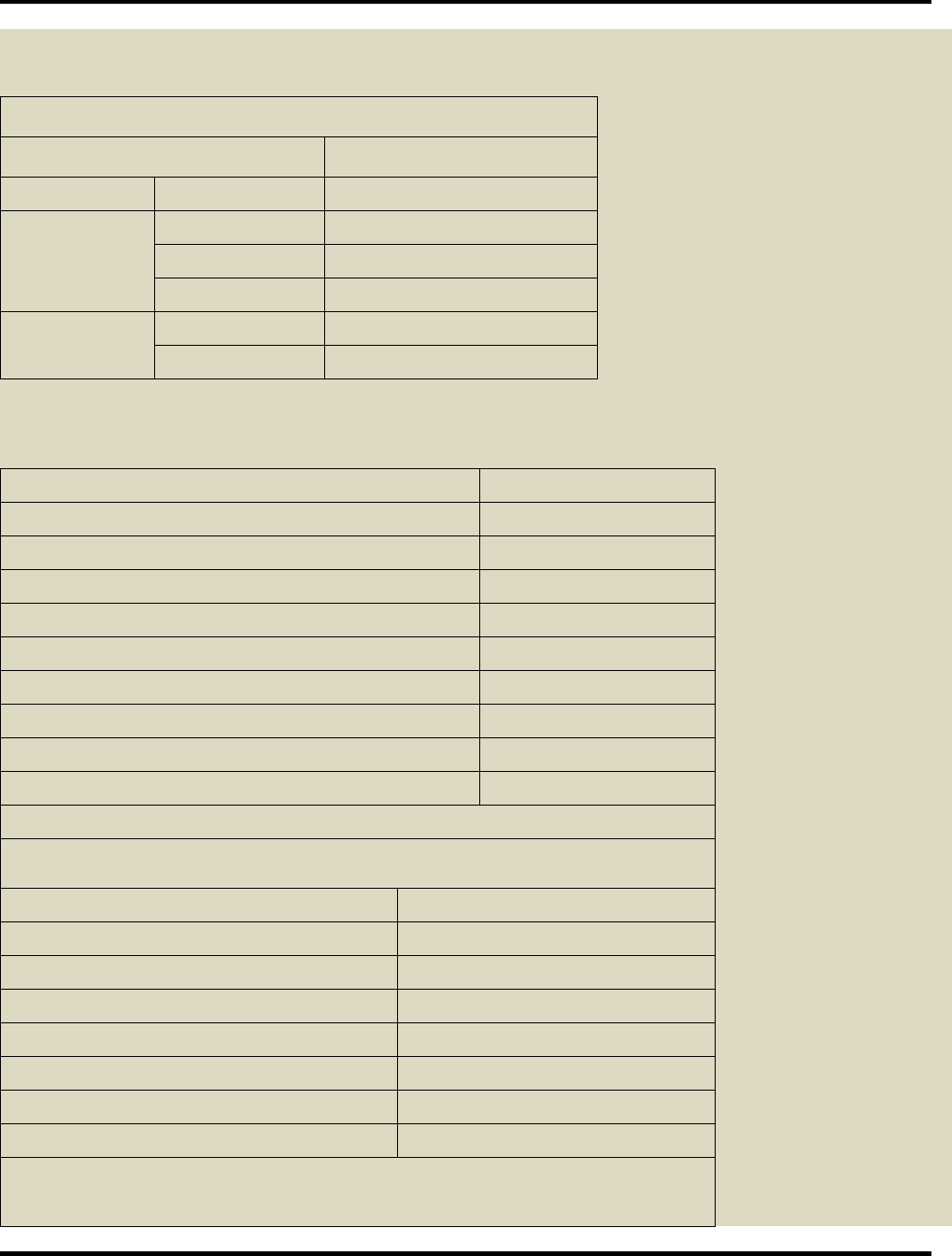
Arts Education - Music
Facility Guidelines (January 2019) 13
Guidelines
Music Rooms
Grades
Guidelines Square Footage
K – 6
General Music
850 – 1,000
6 – 8
General Music
850 – 1,000
Vocal
1,000 – 1,200*
Instrumental
1,000 – 1,600*
9 – 12
Vocal
1,000 – 1,500*
Instrumental
1, 600 – 1,800
* This space may be small; study carefully. Some references recommend 10-18 square feet per singer for vocal rooms
(more if choreographed) and 25-35 square feet per student for instrumental rooms. Class sizes for these programs are
often large; 40-80 students or more are not unusual.
Support Spaces
Square Footage
Instrument Storage Room (varies with enrollment)
400 – 600
Instrument Lockers along Music Room wall (Increases Main
Room – no separate Storage Room)
200-300
Music Library
200
Instrument Repair
150
Office (each)
150
Uniform Storage
Varies
Practice Room
55 – 60
Ensemble Practice Room
150 -200
Wet Areas
A utility sink adequate for cleaning brass instruments is required by middle and high school
band programs.
Ceiling Heights
Room Size
Ceiling Height
Less than 900 SF
9’-4”
900 – 1,000 SF
10’-0”
1,000 – 1,200
12’-0”
1,200 – 1,800
14’-0” to 18’-0”
Over 1,800
16’-0” to 18’-0”+
High ceilings in music spaces dramatically improve acoustics.
Guides for detailed information can be found in the Arts Education Facilities Planner.

Arts Education - Music
Facility Guidelines (January 2019) 14
Comments and Recommendations
The elementary music room should be designed to accommodate general, vocal and instrumental music. Acoustical
treatment is essential, and windows are recommended. In smaller elementary schools, spaces to accommodate music plus
other programs may be combined into a multipurpose area.
A single music room of designated size is appropriate for small middle schools. Separate rooms for band and chorus may be
required as enrollment increases and when programs are offered simultaneously.
The room sizes indicated here do not include program support rooms, such as offices and storage. These areas are listed
separately.
Band instrument and orchestra instrument storage areas should be separate.
Rooms should be equipped with a two-way communication system for informational and emergency use.
Acoustical treatment for vocal and instrumental rooms should be provided. Some flexibility for adjusting the extent of
absorptive and reflective surfaces should be provided. Many schools have had good success with acoustic control by
providing a “Cash Allowance” in the construction contract for acoustic treatment to be installed after the room has been
constructed.
The minimum ceiling heights relate to flat-floor rooms. Risers are not necessary, but rooms with risers will need ceiling
heights adjusted to the highest riser so that appropriate ceiling height and room volume are achieved.
Risers, if used, should be portable for use on the stage or other space as well. Many instructors prefer a flat floor for
flexibility.
If instrument storage cabinets are used in the main room instead of a separate instrument storage room, they should be
the open mesh door type or with acoustical panel facing.
At least one handicapped station within a row of regular seating should be provided in accordance with the North Carolina
State Building Code.
Provide an oversized door or pair of doors into the music classroom and instrument storage room.
Designs for areas in which there will be large congregations of students, such as music or band rooms, should support visual
supervision of an entire area by one individual.
A drinking fountain should be adjacent to local and instrumental music classrooms.
Provide adequate electrical accommodation to support electric keyboards, amplifiers, speakers and other equipment.

Arts Education – Visual Arts
Facility Guidelines (January 2019) 15
Guidelines
Art Rooms Grades
Square Footage
K – 8
1,000 – 1,400
9 – 12
1,200 – 1,500
Support Spaces
Square Footage
K – 12
Kiln/Clay Storage*
40 – 60
Art Material Storage
80 – 150
*For fire safety and air quality, place kilns in a separate room with proper ventilation and exhaust. Do not locate in a
storage room other than one used for clay products and projects.
Ceiling Height
K – 12
10’ – 0”
Windows
K - 12
An Art Classroom should have windows and direct access to an
outdoor art patio is encouraged.
Incandescent task and display lighting should be switched separately to avoid use as general illumination.
Guides for detailed information can be found in the Arts Education Facilities Planner.
Comments and Recommendations
During the preliminary design phase, furniture and equipment plans should be developed showing studio and lecture
relationships. Storage cabinets and shelving with flexibility are needed for a variety of supplies and projects.
In small elementary schools, the visual arts program may be in a project room, i.e., art, science, crafts, etc.
The ceiling heights may vary; however, the average height should not fall below the minimum guidelines. The minimum
ceiling height may be reduced if the art room is the only space in the building or addition requiring more than a 9'-4"
ceiling.
Light sources may vary from daylighting to artificial sources. Artificial light sources should provide full color spectrum and
task-level illumination. Skylights, clerestories, light shelves and rooftop light monitors are possible alternate daylight
sources. Outside work patios adjacent to classroom exterior windows and doors are recommended. Fluorescent fixtures are
recommended; however, incandescent may be used for critical tasks where color is important. Provisions for darkening part
or all of the room may be a design consideration.
Kilns have special electrical and ventilation requirements that should be provided for, even if the equipment
is not in the contract. Paint spraying and hazardous material storage will be subject to the North Carolina State Building
Code. Do not locate kilns within storage areas for paper or other flammable materials. To reduce fire and toxic hazards,
kilns should be located in separate rooms with adequate exhaust and ventilation.
Rooms should be equipped with a two-way communication system for informational and emergency use.

Arts Education – Theater Arts
Facility Guidelines (January 2019) 16
Guidelines
Grades
Square Footage
Ceiling Heights
K – 12
1,800 – 2,000
10’-0”
Comments and Recommendations
The K-6 theater arts room should be a large, open space which is carpeted and acoustically treated. A small raised space
with simple, individually controlled directional lighting is required for the presentation and viewing of special projects.
Design features such as built-in furniture should be avoided in order to provide maximum flexibility.
The middle and junior high theater arts room should be similar to the elementary room. If no other performing facility is
available in the school, then this space may be designed as a small teaching theater where both instruction and
performance can take place. I n either case, there should be a small, raised performance area with simple, individually
controlled directional lighting.
In smaller elementary schools, spaces to accommodate theater arts plus other programs may be combined into a
multipurpose area. Multipurpose spaces for middle and junior high schools should be evaluated on an individual basis.
The high school theater arts room should be a large, open space for activity-based instruction. It should have a small, raised
space with individually controlled directional lighting. The raised space is not essential where an adequately equipped
performing facility is nearby and accessible during theater arts instructional time. If a small teaching and performing facility
is available for all theater arts instruction, then a separate theater arts room may not be necessary.
Large assembly areas, such as auditoriums, should provide clear sight lines and easy traffic flow. Niches along walls should
be avoided and folding partitions should recess fully into walls to eliminate barriers behind which people can hide.
Consider lockable storage for books, audio, video, and computer equipment, audiovisual materials, art supplies, classroom
props, costumes, student projects, etc.
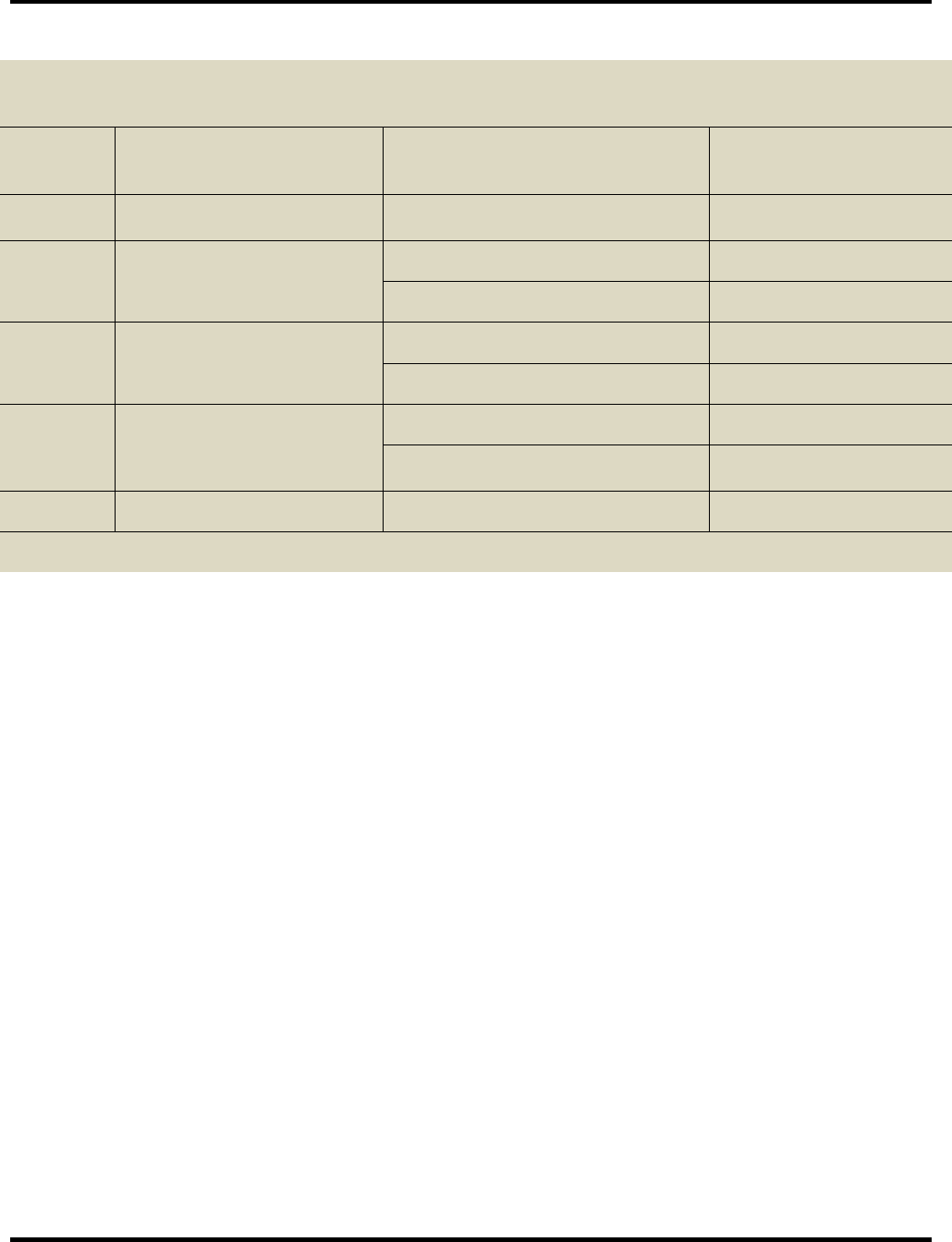
Arts Education – Theater Arts - Auditoriums
Facility Guidelines (January 2019) 17
Guidelines
Grades
Seating Capacity
Auditorium Support Spaces
Square Footage
K – 5
Fixed Seat Auditorium is Not
Recommended
Locate stage in Cafeteria or Gymnasium
800 – 1,200 (stage)
6-8
Fixed Seat Auditorium optional
1/4 to 1/3 ADM
(or use Gym or Cafeteria)
Stage, Storage, and Dressing Rooms
1,200 – 3,000 SF (stage)
Light-lock Vestibule, Lobby, Concessions
800 – 1,500
9 - 12
1/4 to 1/2 ADM
Stage, Storage, and Dressing Rooms
3,000 – 5,000
Light-lock Vestibule, Lobby, Concessions
800 – 2,000
Support
Spaces
Toilets
As Required by Code
Scene, Costume Shops
Provide where extensive
drama program is offered
Guides for detailed information can be found in the Arts Education Facilities Planner
Comments and Recommendations
By locating band, chorus and drama classrooms adjacent to backstage areas, these spaces can serve double duty as staging,
green rooms, dressing and set-up areas during large performances. Consideration should be given to allow re-lamping
and/or changes in lighting levels and types without major effort or reconstruction. Stage lights are costly, and the amount
and types needed vary by the types of performances. Consider the purchase of minimal lights, with circuits and grid for
installation of rental units. Rooms should be equipped with a two-way communication system for informational and
emergency use. Electrical and lighting controls for an auditorium should be located in a locked panel or room.
If the board of education chooses to build a high school auditorium, consideration should be given to seating the largest
class (ADM) x 8 sq. ft. plus about 4,000 square feet for the stage, storage and a small lobby. The auditorium should be
planned as a theater, with suitable acoustical design, lighting system, sound system, storage, and support facilities such as
make-up and scenery construction spaces. The entire facility should be designed for theater arts instruction, although this
will be a multipurpose space. Adjacent study and work spaces should be available to provide and support instruction in
theater history, literature, design, construction, acting, directing and performance. These support spaces could be
unscheduled regular classrooms.
Large, joint school/community-use auditoriums are discouraged. Large auditoriums are much costlier per square foot due
to increased volume, structural spans and special building code requirements. Generally, multiple performances to smaller
groups are more successful than single performances to a large group.
Handicapped accessibility to the stage that does not require a person to leave the auditorium is highly desirable. The need
for a separate control booth has diminished in recent years. Handicapped accessibility to these spaces may be difficult and
costly. Provisions should be made to set up a sound/light control board in the middle of the seating area.

Arts Education – Theater Arts - Auditoriums
Facility Guidelines (January 2019) 18
Continued from Previous Page
Orchestra pits are strongly discouraged for safety reasons and because members of a student orchestra are a part of the
performance and should be visible to the audience. As an alternative, provide several rows of removable seats at the front
of the auditorium to provide space for an orchestra.
Generous side stage areas are encouraged for prop, scene storage and staging. Area should be 1/2 the proscenium opening
minimum. Fly lofts and working stages are discouraged due to very costly building code requirements and hazardous
conditions for children handling heavy weights and working at great heights unsupervised. Consideration should be given
to providing overhead or oversized doors from a loading area to the stage and scene storage areas for moving large props
and scene sets. Stage curtains can be left open to allow visual surveillance.

Arts Education – Dance
Facility Guidelines (January 2019) 19
Guidelines
Grades
Square Footage
K – 8 Combined Dance/Drama
(Include 100 SF Storage/Program)
1,800 – 2,000*
9 – 12
(Include 100 SF Storage)
1,800 – 2,000**
*In smaller elementary schools, spaces to accommodate dance plus other programs may be combined into a multipurpose
area. Multipurpose spaces for middle and junior high schools should be evaluated on an individual basis.
**In small high schools, theater arts and dance may be combined, provided the design and additional support space required
demonstrate functional adequacy.
In high schools, dressing rooms and access to showers is desirable. Where located close to the gymnasium locker rooms, this
space can be combined. Otherwise, provide 200-400 square feet for this function adjacent to the dance room.
Ceiling Heights
10’-0”
Minimum
12’-0” Recommended
(High ceilings are necessary where dancers perform lifts)
Windows: Recommended where possible.
Guides for detailed information can be found in the Arts Education Facilities Planner.
Comments and Recommendations
The dance classroom should be a large, unobstructed space with either a suspended wooden floor or a floor covered with a
portable or permanent dance surface which provides a resilient surface. Many wooden gymnasium floor systems are not
resilient enough for thin dance shoes or socks. Dance classrooms should not be carpeted or have only a concrete and/or
tile floor. It may be desirable to have mirrors on one wall which are of a shatterproof material or mounted to prevent
shattering. An adjustable-height dance barre may also be desirable. The classroom should be soundproofed or located so
that music and other noises associated with dance instruction do not conflict with adjacent classrooms. There should be
storage and/or closet space for students to use to store their personal belongings during the class. A separate lockable
storage space for the teacher to store materials, equipment, recordings, props and other related items should be easily
accessible. Bulletin boards and markerboards are needed. Storage should be provided for mats or cushions that students
sit on while viewing films or during other instructional activities. It is desirable to locate the rooms near toilets and water
fountains.
At the middle and high school levels, dressing room space is needed for students to change clothing.
Rooms should be equipped with a two-way communication system for informational and emergency use.
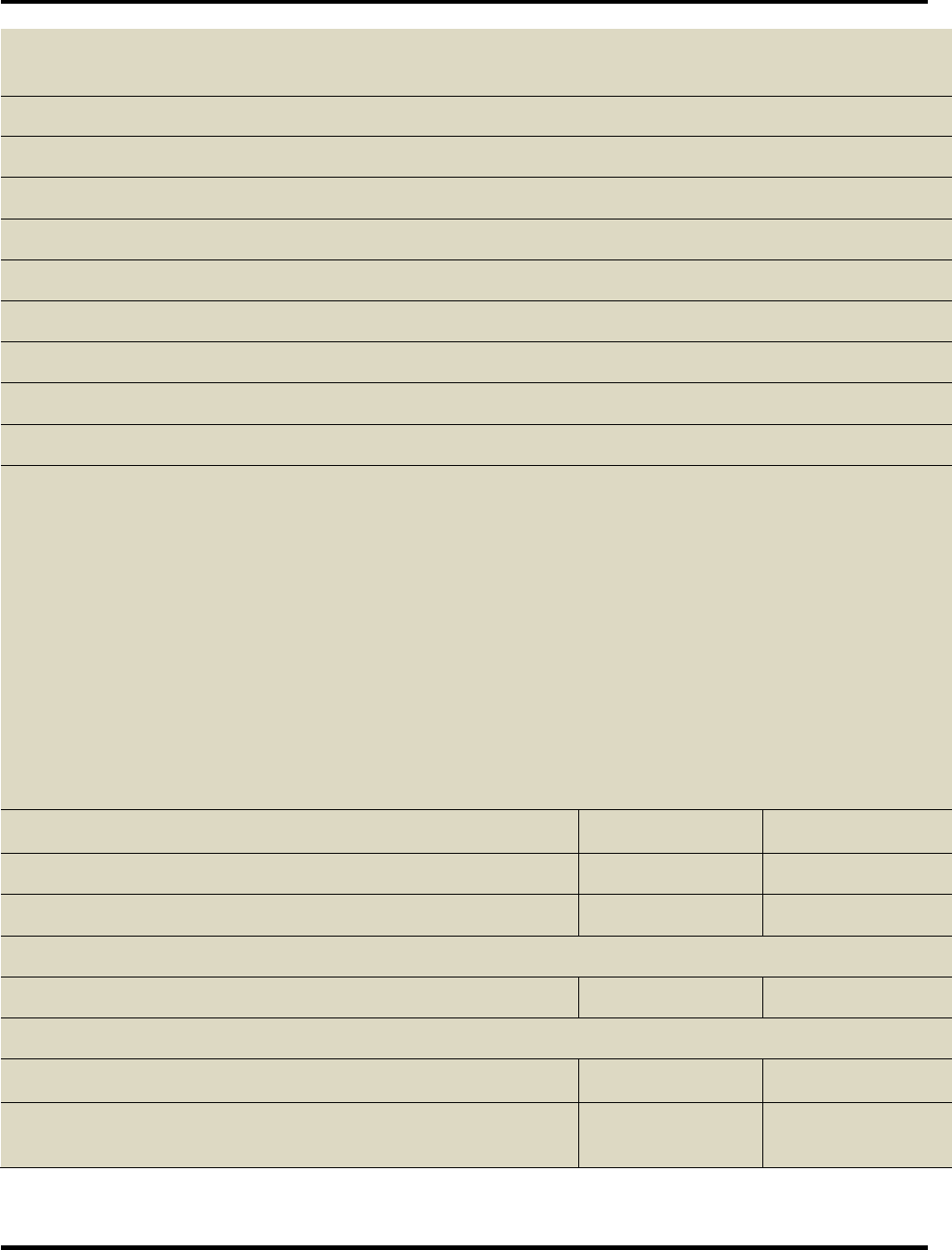
Career and Technical Education
Facility Guidelines (January 2019) 20
Guidelines*
Career and Technical Education (Grades 6–8)
Square Footage
(Exploratory Programs)
Exploring Career Decisions
1,300 – 1,600
Exploring Life Skills
1,400 – 1,600
Exploring Technology Systems
1,400 – 2,000
Exploring Business Technologies
1,200 – 1,400
Exploring Biotechnology
1,400 – 2,000
Skill Development Program
Keyboarding
1,200 – 2,000
Business Computer Technology
1,200 – 2,000
Career and Technical Education Guidelines (Grades 9–12)
Facilities for high school Career and Technical Education programs are often large, extensively equipped and much more
expensive than regular classrooms, paralleling the facility needs found in industry. Because of these factors, school systems
should be careful when selecting programs to offer.
Spatial needs vary significantly from one program to another. The table below gives general guidelines for initial planning
and programming of spaces. Square footage indicated in the Guidelines column are sizes of spaces that have historically
been provided for their respective programs and have been approved by the State Board of Education. Square footage
indicated in the Desirable column is as proposed by curricula development staff and Career and Technical Education faculty
to provide a comprehensive or magnet program in an optimal space.
For many of the programs listed below, space in addition to that indicated is needed for office, storage, vocational classroom
or other support areas. Some of these could be shared spaces.
Program and Courses
Guidelines Square
Footage
Desirable Square
Footage
Agricultural Education (All Courses)
2,500 – 3,000
2,600 – 3,200
Business and Information Technology Education
1,200 – 1,400
1,600 – 2,500
Career Development Education
Career Management, Exploring Career Decisions
N/A
1,400 – 1,600
Family and Consumer Sciences Education
Parenting & Child Development, Early Childhood Education,
Advanced Studies, Teen Living, Life Management, Personal Finance
1,400 – 1,600
1,400 – 1,600
Apparel Development, Housing & Interiors I & II, Foods I, Food
Science, Foods II Technology, Foods II Advanced, Culinary Arts &
Hospitality
1,600 – 2,000
2,000 – 2,500

Career and Technical Education
Facility Guidelines (January 2019) 21
Guidelines* continued
Programs and Courses
Guidelines Square
Footage
Desirable Square
Footage
Health Occupations (All Courses)
2,000 – 1,500
2,400 – 2,600
Marketing Education (All Courses)
1,000 – 1,200
(Plus Store)
1,500 – 2,000
(Including Store)
Technology Education
Fundamentals of Technology
N/A
1,800 – 2,200
Principles of Technology, Manufacturing Systems, Communication
Systems
N/A
1,300 – 1,600
Transportation Systems, Structural Systems, Scientific & Technical
Visualization
850 – 1,000
1,000 – 1,200
Trade and Industrial Education
Trade and Industrial Work Development, Digital Media,
Networking
850 – 1,000
1,000 – 1,200
Cabinetmaking, Drafting, Electrical Trades, Electro-Mechanical
Technology, Welding Technology, Printing Graphics, Electronics,
Network Engineering Technology, Computer Engineering
Technology
1,600-2,000
1,800-2,800
Automotive Service Technology, Collision Repair Technology,
Masonry, Construction Technology, Cosmetology, Metals
Manufacturing Technology
2,500-3,000
2,000-3,240
Ceiling Heights
1,200 – 2,000 SF
2,000 SF and above
See Regular Classrooms for Career and Technical Education and
light-equipment laboratories up to 1,200 square feet
12’ – 0”
14’ – 0”
Windows
See regular classrooms for Career and Technical Education classrooms and light-duty laboratories. Laboratories with
hazardous equipment should have windows, skylights, or some other daylight source.
*Guidelines are subject to revisions/updates as needed to reflect changes in Career and Technical Education curriculum.
Comments and Recommendations
For middle school programs, local school districts may select from Exploratory Program courses, Business Computer
Technology and Keyboarding. Smaller schools may combine certain programs in multi-use labs.
The Standard Course of Study based on the Basic Education Program expects that Career and Technical Education (Grades
9-12) will be available to all students, but not necessarily required. Courses based on essential standards are offered in
eight program areas, with each area having school-based, work-based, or community-based learning opportunities. A basic
high school vocational education program will include offerings in at least three of the following eight areas:

Career and Technical Education
Facility Guidelines (January 2019) 22
Continued from Previous Page
• Agricultural Education • Health Occupations Education
• Business and Information Technology Education • Marketing Education
• Career Development Education • Technology Education
• Family and Consumer Sciences Education • Trade and Industrial Education
Many high schools offer all eight programs. The number and types of laboratories will depend on courses offered locally.
More than one laboratory for a program such as family and consumer sciences may be necessary in larger schools. Career
centers serving several schools will affect the types and number of facilities needed at a high school.
Many Career and Technical Education programs are moving away from the large and extensively-equipped trade and
industrial shops. School Planning will review facilities based on new and innovative programs, as described in the
educational specifications developed by the LEA.
Multipurpose laboratories may be necessary in small high schools. A lab-type facility, for example, could serve electrical
and metals programs. Multipurpose laboratories should also have a detailed layout to establish functional adequacy. In
addition, a multipurpose laboratory should meet the requirements outlined in the Purpose section of this guide.
A larger darkroom or digital imaging room with additional storage could serve Art and Science, as well as Career and
Technical Education programs.
A student conference area, office and storage area should be provided for cooperative method programs (Agriculture,
Business, Marketing, Family and Consumer Sciences, and Trade & Industrial Education).
Laboratories that generate excess dust or other airborne pollution must have an exhaust system, as required by code,
health and OSHA regulations. Dust producing activities such as woodworking shall be physically separate from activities
involving ignition sources such as welding or grinding.
Career and Technical Education classrooms without an exterior wall may be windowless if they have windows into a shop or
laboratory which has an ample daylight source.
Classrooms and laboratories should be equipped with a two-way communication system for informational and emergency
use.
Circuits for hazardous machines and tools in shops or laboratories should be controlled via “kill switches” with pilot lights.
Space should be arranged for maximum flexibility and ease in teacher supervision of multiple activities. An area for teacher
planning, record keeping, consultation, and administration is recommended
Consideration should be given to provisions for maintaining service systems and equipment in good working condition.
Facilities should have adequate provisions for the safety and health of students and teachers and should meet relevant
requirements of the Environmental Protection Agency (EPA) and Occupational Safety and Health Act (OSHA).
Facilities should be designed or modified to accommodate students with disabilities.
The School Planning publication entitled Workforce Development Facilities Planner (May 2000) provides detailed
information regarding specific Career and Technical Education programs. Contact the School Planning Section of NCDPI for
a copy of this publication.
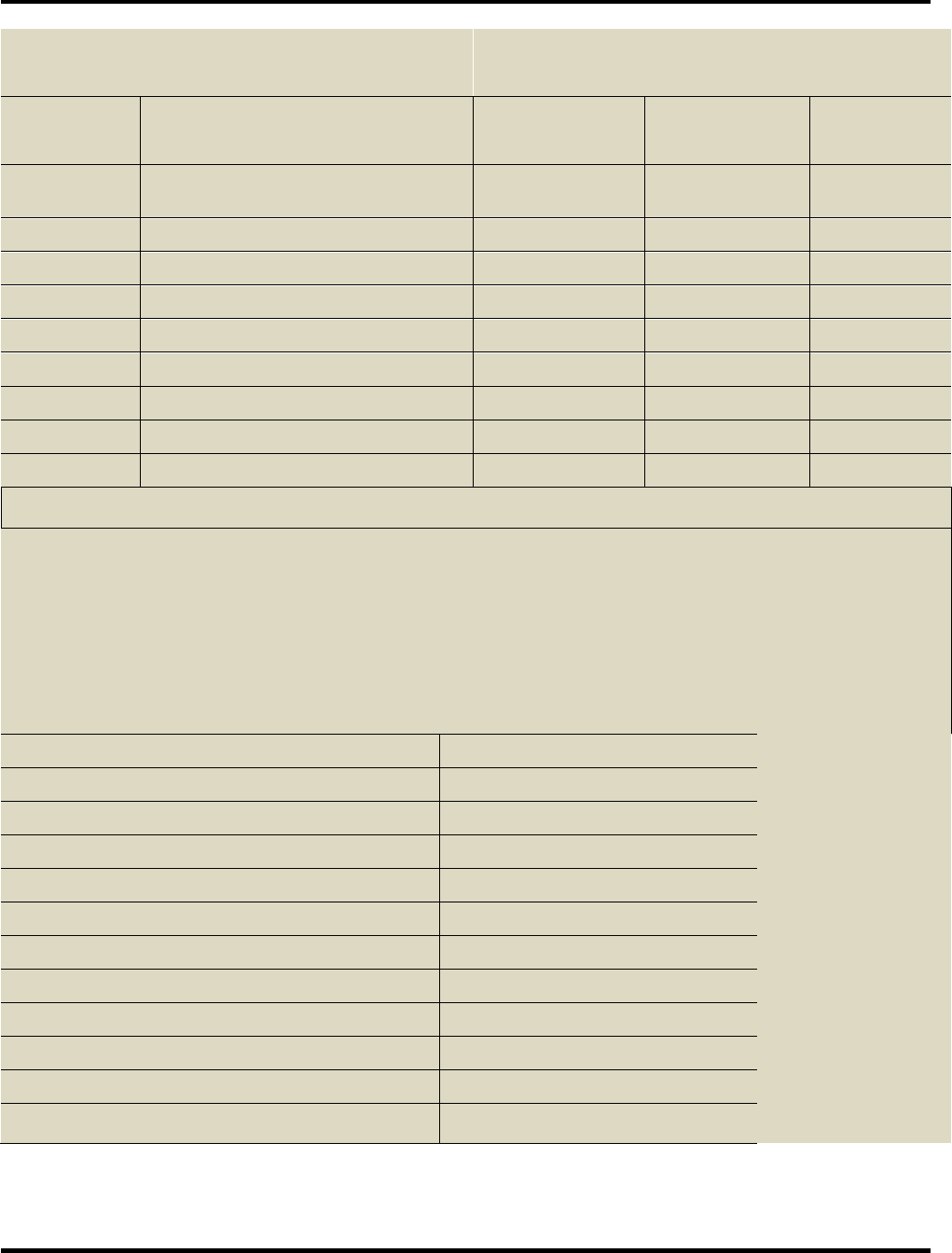
Media Centers
Facility Guidelines (January 2019) 23
Guidelines
Grades
Spaces
Guideline
Square Footage
Desirable
Square Footage
IMPACT
Square Footage
K - 12
400 students minimum
4 – 6 SF/student
over 400 Students
K – 5
Main Room
1,600 minimum
2,400 minimum
2,800 minimum
6 – 8
Main Room
1,600 minimum
2,400 minimum
3,400 minimum
9 – 12
Main Room
1,600 minimum
2,400 minimum
3,600 minimum
K – 5
Support Areas (See Below)
1,200 minimum
6 – 8
Support Areas (See Below)
1,800 minimum
9 – 12
Support Areas (See Below)
2,000 minimum
*Optional. Not provided at all schools.
Capacity: 40 students or 10% of the membership (ADM), whichever is greater.
Ceiling Heights: Main Room 12’-0” minimum / Support Areas 9’-4”
The sizes and types of various support spaces needed are dependent upon the size and grade level of the school.
Additional information can be found in IMPACT: Guidelines for North Carolina Media and Technology Programs,
Instructional Technology Division, NCDPI. Some of the typical support areas and their recommended sizes include:
Space
Guidelines Square Footage
Media Office/Administration
200 plus 50/add’l staff
Workroom
400 – 600
Professional Area
150
Conference/Collaboration
150
Production/Creation
400 - 600
Video Production
Studio
400
Control/Editing
260
Storage
80
Equipment Storage
175
Computer Lab
See Technology Infrastructure

Media Centers
Facility Guidelines (January 2019) 24
Comments and Recommendations
The school’s media center should be located on the ground floor, single story and convenient to all learning areas of the
school. For Pre-K through 2
nd
Grade classrooms a location on the same floor is preferred. Pre-K through 1
st
Grade children
are not allowed on upper floors and must be located on the level of exit discharge. 2
nd
Grade rooms cannot be located
higher than one floor above the level of exit discharge.
The plan arrangement should not result in the main media center becoming a major thoroughfare for student traffic.
Convenience to an outside entrance with access to restrooms allows the center to operate after hours and facilitates the
delivery of materials and equipment. The media center’s location should not preclude future expansion of the facility.
A proposed furniture and equipment plan should be developed during the early design development stage, in order to
determine functional adequacy. Modern library media centers must be flexible, multipurpose spaces for instruction,
creation activities, collaborative projects, independent study, etc. Easily mobile furniture adds flexibility to the space. The
minimum media collection should be equivalent to that for a school serving 400 students.
Minimum support areas include offices, workrooms, conference rooms, equipment storage and spaces for a professional
collection. Equipment storage rooms should have a second door leading into a corridor, for the convenience of teachers
checking out equipment for their classrooms.
Video production areas are sized for consumer-grade equipment.
The media center frequently houses head-end equipment and network wiring to serve computers located in the classrooms
or other labs. See the Technology section of this publication for guidelines on computer labs and infrastructure.
Elementary schools should have a group storytelling area for 29 pupils. Removable risers (carpeted) are often used.
Storytelling pits are discouraged due to inflexibility, safety hazards and problems with waterproofing.
Varied ceiling heights in the main room are desirable as part of an aesthetic, acoustical and lighting strategy.
HVAC System
The HVAC system should be separately zoned from those parts of the building that are not mechanically conditioned year-
round. Special attention must be given to adequate ventilation and humidity control to prevent mold and mildew year-
round. Computer hardware and software must be protected from temperature and humidity extremes.
Windows
Windows are recommended in the main media center room but are not recommended for electronic equipment storage
rooms. They are recommended in the support areas but are not necessary if there are windows into the main room. Office
windows providing for line of sight supervision of the main room are recommended.
Wet Areas
A large, single, deep-bowl sink is needed for many tasks performed in the workroom.
Other planning data is available from:
• School Planning
• Digital Teaching and Learning Division
Lighting controls should be convenient and capable of darkening or dimming specific areas. The main room should have a
switch at the entry to control some general lighting. Use fluorescent lighting in most areas. Metal halide lighting may be
used in the main area. Incandescent fixtures should be limited to special-effect lighting if necessary. Electrical outlets (some
with surge protection) and network technology connections should be coordinated with the furniture and equipment plan.

Media Centers
Facility Guidelines (January 2019) 25
Continued from Previous Page
Modern library media centers must support numerous devices especially in 1:1 and “Bring Your Own Device” environments.
Therefore, computer and electronic equipment will require data outlets and more electrical outlets than required by code
Windows should neither admit distracting light nor hinder space utilization and should be equipped with draperies or
darkening shades.
Intercom speaker(s) should have independent volume control(s).
Handicapped access to the media center must meet the requirements of the North Carolina State Building Code, except
that the 32" clear spacing for existing shelving will not apply to renovated or remodeled public schools. The spacing
between movable furniture must allow for handicapped access.
Provisions should be made to support numerous devices especially in 1:1 and “Bring Your Own Device” environments. This
will require flexibility in power and data wiring to various locations around the media center as well as adequate wireless
access.
Provisions should be made for a large group instruction area big enough to accommodate the largest class. It should be
provided with audiovisual and networked multimedia computer equipment with data and video projection capabilities
including internet access for laptops. Recommend interactive whiteboard with ceiling mounted data projector or
comparable instructional technology such as large screen TV with HDMI + casting in the instructional area.
Control points and the maintenance of clear sight lines in the media center should be used to maximize safety and security.
The reception area or circulation desk should be located to facilitate the monitoring of student traffic into and out of the
facility. Interior media stacks should be a maximum of four feet in height, well-spaced, and parallel to staff lines of sight to
aid in visual control and eliminate hiding places for persons or stolen goods.
Review data and electrical outlet locations and cable management for safety. Provide secure equipment storage for media
and technology areas.

Technology Infrastructure
Facility Guidelines (January 2019) 26
Guidelines
Spaces
Square Footage
Regular/Science Classrooms
Add 15 – 20 SF per full sized computer workstation for classrooms less
than 1,000 SF
K – 5 Computer/Keyboarding Labs
850 SF
6 – 8 Computer/Keyboarding Labs
1,000 – 1,400 SF
9 – 12 Computer/Keyboarding Labs
1,200 – 2,000 SF
See Business Labs
(Career and Technical Education)
Main Head – End Room
450 – 800 SF
Wiring Closet
15 – 120 SF
Comments and Recommendations
Personal computers have a significant impact upon regular classrooms in terms of needed instructional space, additional
electrical capacity, much higher air conditioning loads, and narrow range of temperature and humidity for optimal
operation.
Many school systems no longer associate computer labs with the media center. When computers are placed within the
classroom, separate computer labs are used primarily for teaching keyboarding (usually in middle school), programming
language, or business applications (Career and Technical Education).
The main head-end room contains the main connections to the outside, as well as the hubs, routers, file servers and other
equipment to serve the school network. Racks for VCRs, Laser disk players, CD towers, DVD players and other new or legacy
media equipment may be located here, or portions of this equipment may be located in a support area of the media center.
It may be more cost effective to reduce or eliminate wiring closets for regular classrooms by running fiber-optic cable from
the main head-end room to a multi-station hub located on the computer wall or above the ceiling of each classroom.
Wireless routers allow the use of multiple laptop computers with minimal hard wiring if provisions are made for storage,
battery charging and network security. Fiber-optic can accommodate the bandwidth requirements of media streaming with
appropriate routers.
When using copper cabling, network connection wiring closets must be located such that no workstation has a cable length
of more than 300 feet from this space. A campus plan (separate buildings) school is likely to need a closet for each building.
Large, single-story buildings may need a closet for each wing; smaller, more compact schools may be able to eliminate
these closets altogether and make all connections directly at the main head-end room.
A closet serving only a few connections may require nothing more than a mounting board on the rear wall for punch-down
blocks and hubs. Closets serving large numbers of connections will need space for floor-mounted racks for router and hubs,
with access to both front and rear, as well as possible file servers and cross connections to telephone or other services.
Integrated communication systems combine bells, intercom, television, video, servers, telephone and/or other technology
systems. The extent of and requirements for these systems vary widely by manufacturer.
Basic resources for technology infrastructure in NC schools include:
STS-1000 Telecommunications Wiring Guidelines, State ITS
BISCI Telecommunications Distribution Methods Manual (TDMM)
DPI Technology Infrastructure Guidelines (DRAFT, 2006) https:///www.schoolclearinghouse.org>Publications & Guides
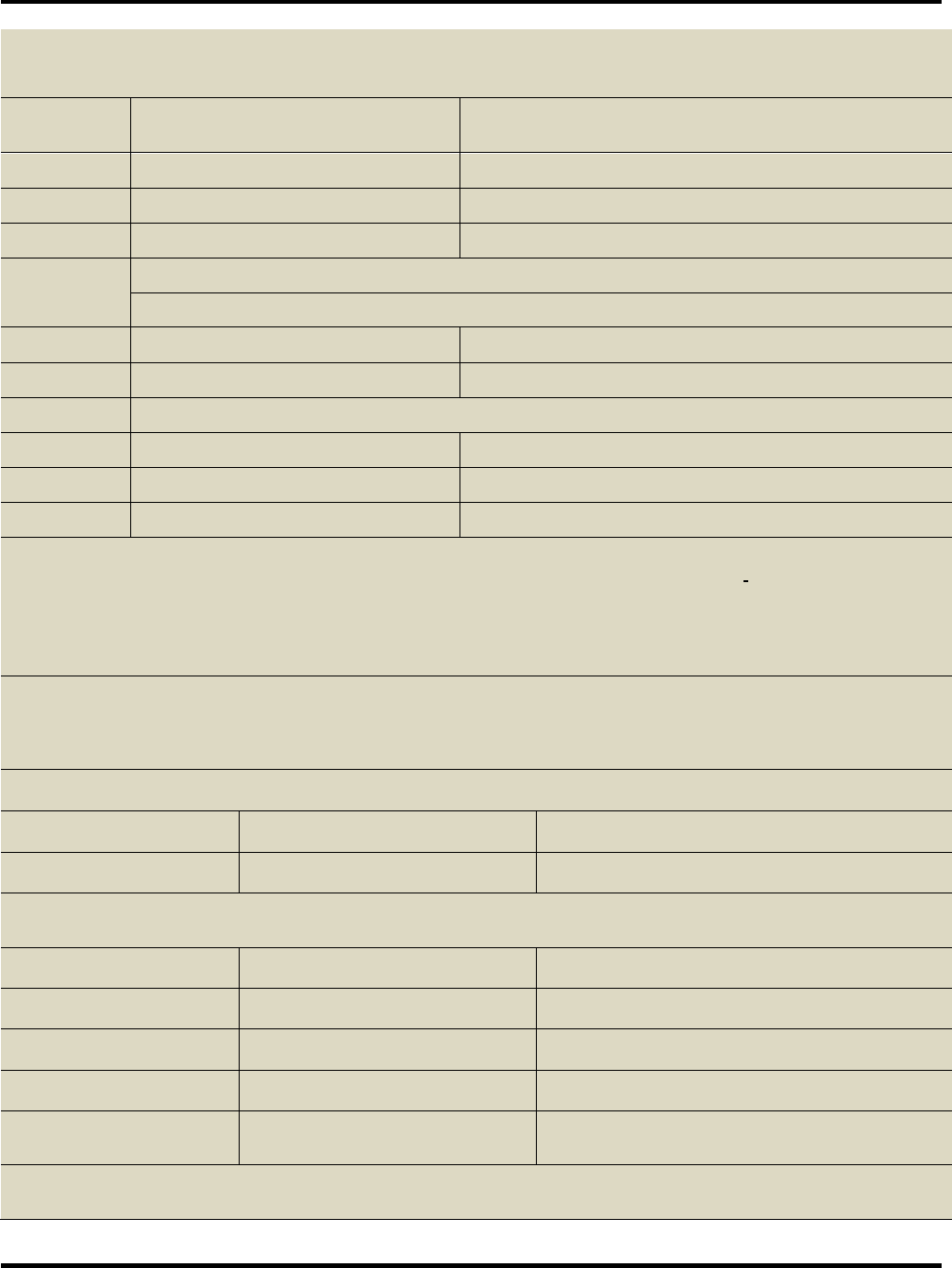
Physical Education
Facility Guidelines (January 2019) 27
Guidelines
Grades
Spaces
Square Footage
K – 6
Multipurpose/Indoor P.E.
3,600 Net Minimum
(Play Area)
4 SF/students over 600 students
6 – 8
Gymnasium
Varies**
Play area
42’ x 74’ Court (54’ x 90’ with safety space*) recommended minimum for school and community use
50’ x 84’ Court (62’ x 100’ with safety space*) desirable for interscholastic play
Seating
400 – 500 SF/100 seats
Recommend sufficient bleachers to seat the student body
9 - 12
Gymnasium
Varies
Play Area
50’ x 84’ Court (62’ x 100’ with safety space*)
Seating
400 – 500 SF/100 seats
Recommend sufficient bleachers to seat the student body
9 – 12
Wrestling (competitive)
3,000 SF
9 – 12
Resistive Exercise (weight room)
2,000 – 3,000 SF
* Clear (no bleachers or intrusions) safety space of 6' on each side and 8' on each end of a basketball court should be
provided to reduce accidents and injury. Applies to both gymnasiums and auxiliary gymnasiums.
**Community use gymnasiums and outdoor fields are not uncommon in elementary and middle schools. Where planned,
consideration should be given to partnering with the local Parks and Recreation to share both initial and
operating/maintenance costs for that portion of the facilities beyond that needed for the educational program.
Windows: Play areas and gymnasiums should have windows or other daylight sources to provide a minimum amount
of natural lighting.
Ceiling Heights
Grades
Ceiling Height
K – 6 Multipurpose
15’ minimum (18’ recommended)
The NC State Building Code will allow an exposed roof structure without fire protection if the structure is at least 20 feet
above the floor and bleacher seats in buildings that otherwise would require a 1 hour rated ceiling assembly.
6 – 8 Gymnasium
20’ – 22’ minimum
9 – 12 Gymnasiums
20’ – 24’ min (25’ recommended)
Support Areas under 850 SF
9’-4”
Dressing, Showers, etc.
10’-0”
P.E. and Athletic Teaching
Areas (weight, team,
wrestling rooms)
12’-0”
Twenty percent (20%) of the gymnasium and playroom ceiling may be lower, provided the NC State Building Code
minimum is met.

Physical Education
Facility Guidelines (January 2019) 28
Comments and Recommendations
K-5 indoor P.E. areas should include additional square footage for an office, storage and toilets for boys and girls. Add
space if a stage is included. The 6-8 gymnasium should include dressing and shower areas, offices and some storage.
Assembly and spectator use may require increased size. The 9-12 gymnasium should include space for two play courts,
spectator seating, dressing and shower areas, office areas, storage and a lobby. Additional P.E. and athletic facilities (such
as an auxiliary gym) may be needed to schedule the program in larger schools.
Although the use of showers has declined over the years, there should be some showers provided for both P.E. and
athletics. To encourage use and maintain modesty, private shower stalls with enclosed dressing areas, small bench and
several clothes hooks should be provided for both boys and girls. Locker and dressing rooms tend to be high abuse areas
and should be visible and/or audible from P.E. teachers’ offices to reduce vandalism and violence.
An auxiliary gymnasium with a minimum of 3,600 sq. ft. is recommended for middle schools with 1,000 or more students.
An auxiliary gym of 6,500 sq. ft. and some bleacher seating is recommended for high schools with 1,200 or more students.
Retractable gymnasium bleachers should be capable of being locked in place, when not in use, to prevent persons from
hiding or engaging in undesirable activity in the space underneath. The NC State Building Code requires guardrails at the
rear and open ends of elevated seating facilities, including tip-and-roll bleachers, where the seating height exceeds 30".
When bleacher seating is provided, wheelchair accessible spaces with adjacent companion spaces are required per NC State
Building Code.
Care should be taken when selecting a floor finish for elementary school multi-purpose rooms. Children of this age may
spend considerable amounts of time sitting on the floor as well as in activities such as dance, basic exercise, gymnastics, ball
handling skills/games and other motor skills development. Because of the wide variety of activities, a highly resilient floor
such as sports carpet, foam backed synthetic sheets or wood may be desirable. Standard vinyl tile may not offer enough
resilience and plain concrete is not recommended.
Resilient flooring such as high-density gym carpet is recommended for wrestling rooms and resistive exercise rooms.
Resistive exercise and wrestling rooms should be located in an area accessible to both genders. Lay out exercise rooms
with 2'-0" clear around extended equipment parts or limbs and allow width for spotters and circulation.
A solid, blank, durable wall is desirable in gymnasiums and play spaces for use as a teaching wall or handball and tennis
practice surface. Windows in physical activity areas should be located to prevent glare. Locker rooms should have a
daylight source for safety and/or emergency lighting. Mirrors, windows, and light covers in toilet and locker rooms should
be impact resistant. Locker rooms and gymnasium toilets should have solid ceilings such as moisture resistant solid gypsum
board or exposed concrete. Lay-in ceilings rarely last more than a few years without damage and provide hiding space for
persons and contraband.
Windows should be placed so that they will not be a hazard if directly impacted by students or loose balls.
All playrooms and gymnasiums are teaching stations and require good acoustics. The ceiling is the best area to treat
acoustically. Many systems have been very satisfied with cement fiber roof decks but less satisfied with “acoustic metal
deck” and/or slotted, insulated concrete block. An allowance in construction bids for post-occupancy acoustic treatment is
recommended.
Methicillin-Resistant Staphylococcus Aureus (MRSA) is a staph infection that can cause skin infections of athletes involved in
high-contact sports and can be spread in locations such as locker rooms, weight rooms and other athletic facilities. K-12
physical education facilities should provide for frequent washing and for sanitizing of personal, portable and fixed
equipment.
Oversized doors should be provided for laundry rooms with commercial equipment and along paths to those rooms from
the exterior.
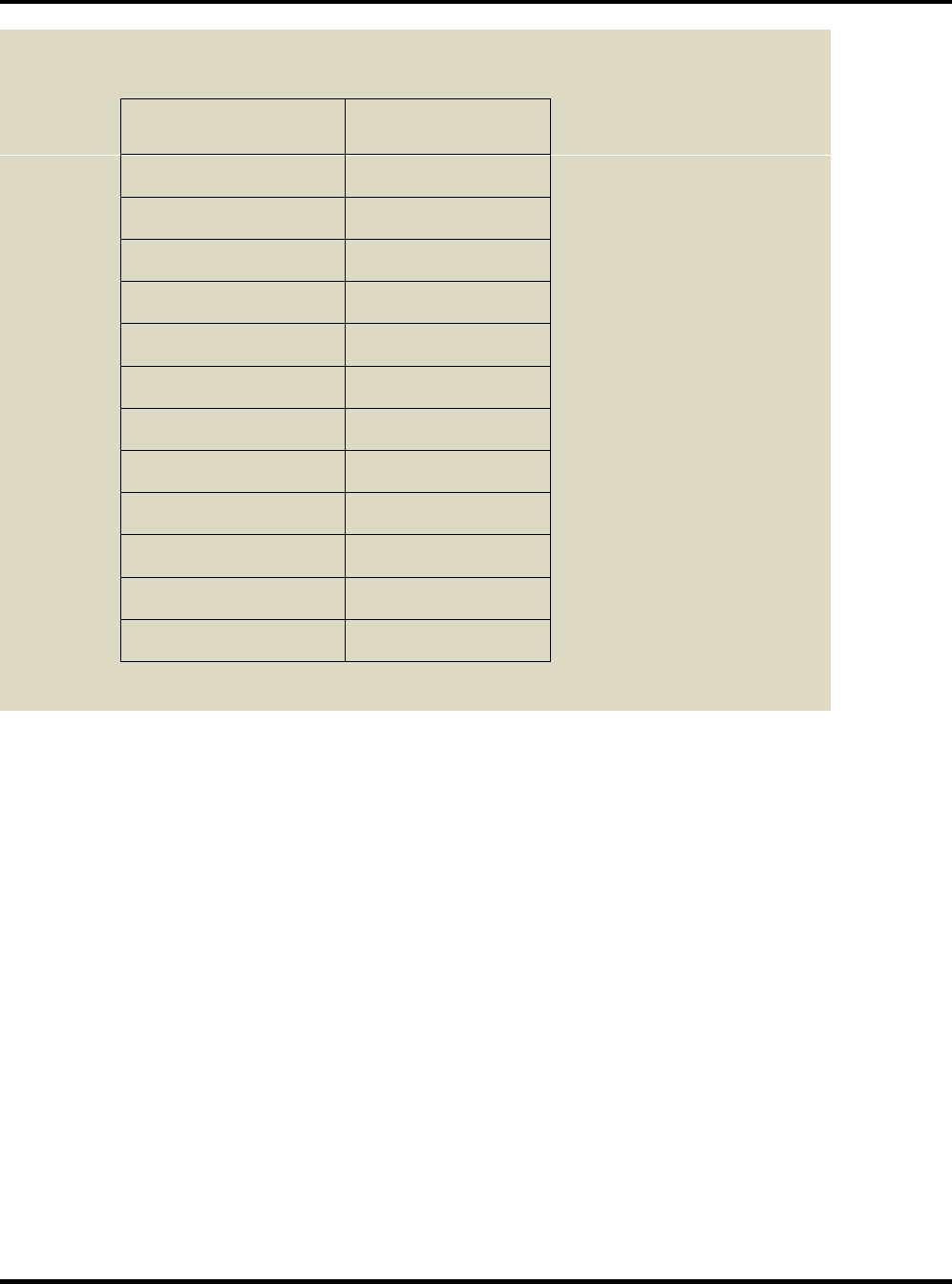
Administration
Facility Guidelines (January 2019) 29
Guidelines
Rooms
Square Footage
Principal
150 – 200
Assistant Principal
120 – 150
Reception Area
200 – 400
Secretary
100 -150
NCWISE K – 5
80 – 120
NCWISE 6 – 8
100 -150
NCWISE 9 – 12
150 – 200
Other Student Services
80 -200
Workroom/Storage
200*
Conference Room
200
Record Storage
100
General Storage
200 *
*A considerably larger area for storage is very desirable.
Comments and Recommendations
Administration areas should be contiguous to main entries, with clear lines of visibility into and out of them. The required
number and size of spaces will vary according to staffing needs. Partitions in Administration areas should be laid out and
constructed to allow for flexible use of available space.
An assistant principal is funded by the State when school enrollment reaches approximately 700. Consideration should be
given to locating the office of an assistant principal remotely from the principal’s office to enhance school building
surveillance.
Doors to all offices should have a viewing panel for security. To address potential liability and safety issues, a vision panel
with blinds should be provided in administration offices and other areas where one-on-one adult/child conferencing is
conducted. Consideration should be given to providing additional space in such areas to accommodate students who are
accompanied by their parents.
At least two unisex toilets are recommended for the administrative staff. Group toilets are appropriate in larger schools or
where guidance personnel and teachers also use these facilities. Individual toilets in private offices are inefficient and
expensive and are therefore not recommended.
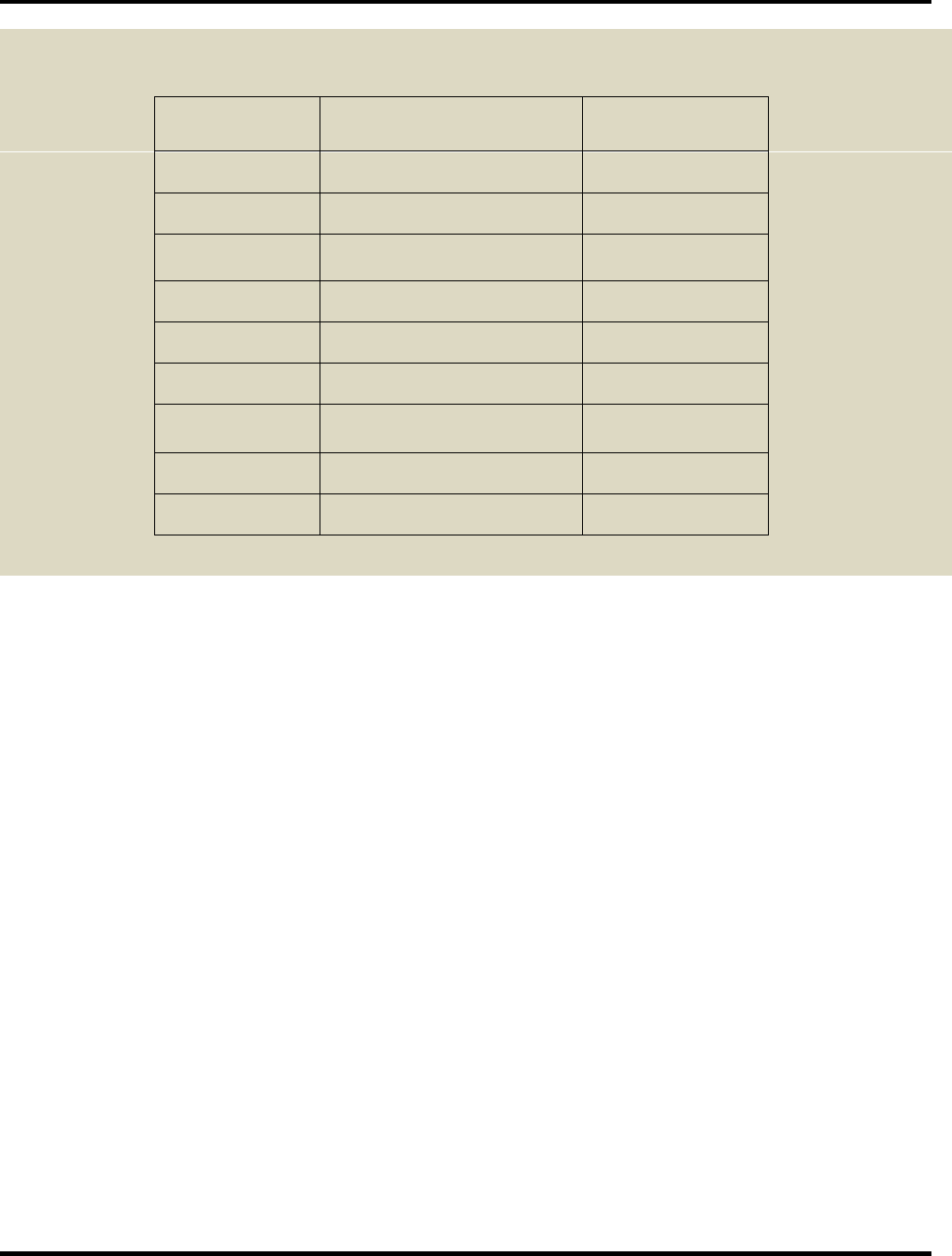
Student Support Areas
Facility Guidelines (January 2019) 30
Guidelines
Grade
Room
Square Footage
K – 5
Guidance
450
6 – 12
Guidance
300
9 – 12
Reception/Career Center
600 – 1200 SF
(Varies)
K – 12
Counselor Office
100 -150
K – 5
Other Student Services
100 -150
6 – 12
Other Student Services
100 -150
K – 8
Health Room
200
9 – 12
Health Room
150
K – 12
Health Room Toilet
50
Comments and Recommendations
Elementary guidance areas serve small-group and individual guidance and should include a private counselor office.
Schools with more than one counselor may need additional space.
The Grade 6-12 guidance room (office) recommendation is for a small school with one counselor. Larger 6-12 schools that
have more than one counselor will require additional counselor offices. Consideration should be given to providing
additional space in guidance offices to accommodate students accompanied by their parents. Having additional space can
be an important asset should confrontational situations arise. To address potential liability and safety issues, a vision panel
with blinds should be provided in all guidance or consultation rooms.
Depending on the size of the school, the reception/career center space may need to be expanded to handle the number of
students who may use catalogs and other materials provided there. The size of a guidance/student services center in a
large high school can be in the 2,000-3,000 square-foot range.
Rooms designated for other student services may house social workers, psychologists or other health professionals.
Student offices may be needed for activities such as student publications, student government and student clubs.
The health room will primarily serve the school nurse and other medical professionals, and may also serve as a temporary
station for sick students. The health room should be located to allow for easy supervision. A large vision panel or window
with blinds is helpful for observation of the health room by office personnel.
Health rooms should include locked storage for equipment and supplies.
A toilet room should be provided adjacent to the health room. The toilet room door should swing outward to prevent an
occupant from blocking the door should he or she become incapacitated. The health room toilet lavatory should include an
eye wash.
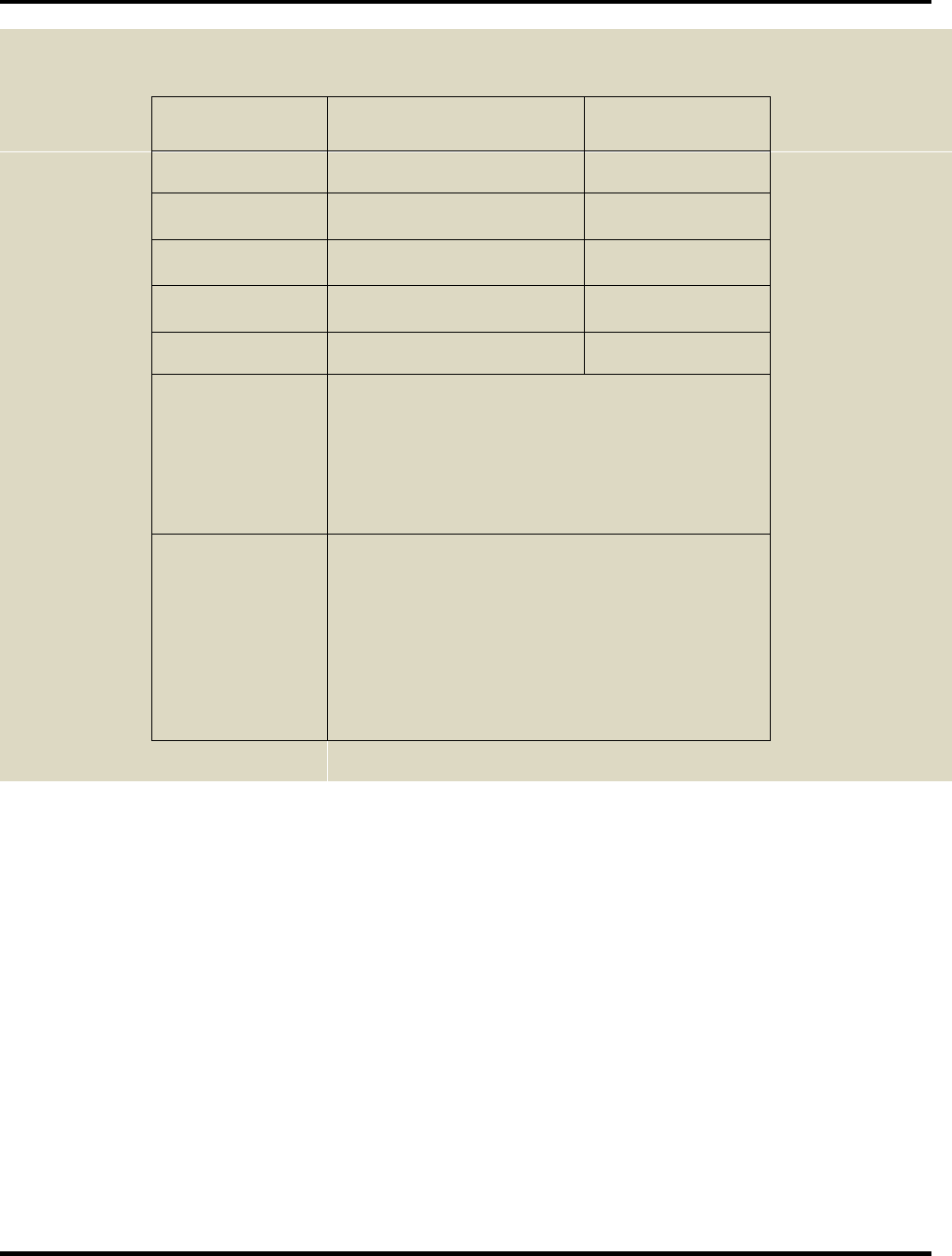
Staff Support Areas
Facility Guidelines (January 2019) 31
Guidelines
Grade
Room
Square Footage
K - 12
Group Teacher Office/Planning
80 – 100 per Teacher
K - 12
Special Assistant and Itinerant
Teacher Office/Work Space
80 – 100 per Teacher
K - 12
Workroom
Varies 300 minimum
0.75 – 1.25 SF/ADM
K – 12
Lounge
Varies 300 minimum
0.75 – 1.25 SF/ADM
Telephones
Faculty use: Each teacher should have access to a
private telephone (preferably in their office or
classroom). Telephones located in common workrooms
or lounges should be enclosed in a sound booth for
student confidentiality (exclusive of Child Nutrition and
Administration).
Staff Toilets
Faculty toilets should be located near classrooms.
Teachers must not have to travel over 200' to reach a
toilet, per the N.C. Plumbing Code. The minimum fixture
count for the staff must be based on Table 403.1 of the
North Carolina State Plumbing Code, and paragraph
403.9.3. Staff toilets should have a parcel shelf, a place
to hang garments, a full-length mirror, and an
appropriate area for grooming.
Comments and Recommendations
Combined or shared areas are recommended for efficient and flexible use of offices/workspaces. Teacher
offices/workspaces should be near, but not in, the classrooms, where feasible. In addition to an appropriately sized desk
and ergonomic chair, the workspace should include tables, shelving and storage.
Teachers, like other professionals, should have access to a private telephone, a networked computer, lockable storage, and
a work area for planning, contacting parents, etc. Where the teacher has a permanently assigned classroom for their
exclusive use, these amenities could be within the classroom. Where several teachers use the same classroom during
different periods of the day, a separate teacher workspace containing these amenities should be provided.
Where separate teacher offices are provided, group office areas for four or more teachers are encouraged, to promote
flexibility and improve space efficiency. Classroom area should not be reduced when separate teacher office facilities are
provided. Additional desk space and, storage space for individual teachers for materials, files, wardrobe and personal items
should be provided.

Staff Support Areas
Facility Guidelines (January 2019) 32
Continued from Previous Page
The efficiency of high schools can be significantly enhanced by providing teacher office/planning areas in an area separate
from but near to the classroom. Classrooms can be assigned for use by different teachers for all periods of the day if
teachers have a separate space for planning, telephoning and other work.
Workspace dividers should have acoustical treatment which will allow telephone and computer use in combined or shared
areas.
Workspace should be provided for instructional, lab, and clerical teacher assistants (one per 285 students in ADM). One
office/workspace per projected itinerant teacher, plus an appropriate number for volunteers and student teachers, is
recommended.
One or more centralized workrooms is/are recommended for copy machines, duplicators, specialized computers, and other
equipment and supplies which are not typically located in teacher offices/workspaces.
Sizes and number of lounges will be determined by faculty size and building plan. Provide limited kitchenette facilities.
Vending machines are inevitable in staff lounges. They should be acoustically isolated, especially when lounges provide
meeting space and/or workspace.
Some schools provide offices and storage rooms for PTA, Community Recreation, Safety Resource Officer (SRO), Bus
Coordinator and other specialty staff.
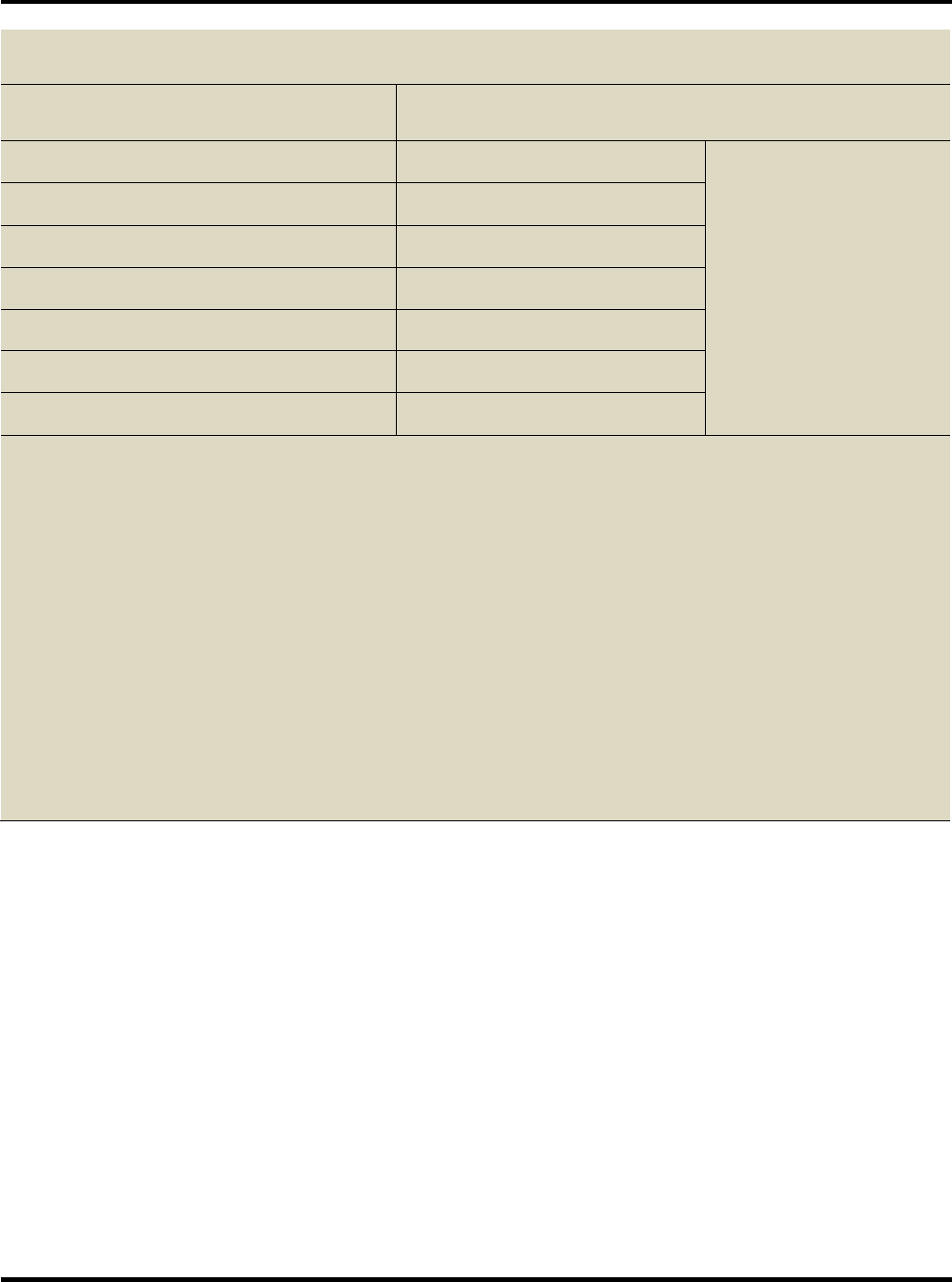
Commons, Circulation and Entries
Facility Guidelines (January 2019) 33
Guidelines
Corridor
Widths (Minimum for safe and efficient movement)
Serving more than Two Classrooms
8’-0”
Serving more than Eight Classrooms
9’-0”
Elementary and Middle School Major Corridors
10’-0”
High School Major Corridors
12’-0”
Lockers along One Wall ADD
2’-0”
Lockers along Two Wall ADD
3’-0”
Entries: Bus rider entries and automobile rider entries should receive equal attention.
Stairs: A single run of stairs should not exceed 8'-0" in height without a landing. The North Carolina State Building Code
limits for height and width are not satisfactory for schools. Width should be 7'-0" or wider to allow concurrent passage
of large numbers of students in both directions, especially for grades 6-12.
Toilets: Group toilet entries should have privacy screening that does not depend on doors. Group toilets for boys should
have at least 2 water closets. Group toilets per Plumbing Code 403.9.5.2 shall have a minimum of 4 flushing type
fixtures.
Ceiling Heights: Corridors: 9’-4”
Doors: Doors which open into a corridor must be recessed or protected by wing walls so that any part of the door swing
does not project into the circulation path more than 7". Except for delivery areas, multiple single doors, rather than
double doors, are recommended. Use oversized doors for exceptional children entries, shops, kitchens and music areas.
Oversized pairs of doors (3'-6" or 4'-0" leaves) with magnetic hold-opens should be used on entrances to stairs, at
corridor smoke/fire doors, etc. for visual and auditory supervision. Avoid mullions between leaves of pairs of doors.
Comments and Recommendations
Corridors in middle and high schools receive a high volume of student traffic during class changes. Wide, generous, well-lit
corridors significantly enhance safety and security. Narrow corridors may lead to an increase in unacceptable behavior.
Dead-end corridors should be avoided.
The minimum corridor width that should be considered is 6'-0”; 8’-0” width is needed if a corridor serves more than two
classrooms. Major corridors serving classroom feeder corridors and/or major spaces such as cafeteria, media center,
auditorium or gym should be even wider. The width of corridors within office suites, guidance areas and P.E. locker rooms,
however, may be 5'-0".
Projections into corridors and deep alcoves along corridors should be avoided. Flush mounted equipment and chamfered
corners help flow and visibility. Corridors light switches should be keyed or remotely located.
Fire-rated doors in corridors that are main egress routes should be equipped with magnetic, wall mounted hold-opens.
Where doors normally remain closed, they should have fire-rated glass panels for visibility.

Commons, Circulation and Entries
Facility Guidelines (January 2019) 34
Continued from Previous Page
Multiple stair towers handle student traffic during class changes better than a few sets of very wide stairs. Central stairs,
however, should be considered since they typically allow for better supervision.
Stairs should be well lighted. Enclosed stairwells should have electronic surveillance with motion detection at main access
points and landings. The area under stairs should be enclosed and unavailable for any use. Stair handrails should be open
for visual observation. Handrails should be fabricated in a manner that discourages sliding and horizontal rails should
incorporate vertical pickets to discourage climbing. Risers should be enclosed on the sides to prevent ankle grabbing.
A commons should be designed as a student social center. Location and design of a commons are more important than its
size. Student entries and areas near the cafeteria are good locations for a commons. Wide corridors in secondary schools
serve a social function better than a student commons during class changes.
Locker commons located at major corridor intersections work well, as do areas with half-high lockers spaced to avoid
crowding and countertops for placing bookbags, if those areas can be easily supervised. Two tier lockers may be too small
for accommodating bookbags plus coats, PE clothes, etc. and can cause conflicts when students are trying to access both
levels simultaneously. Consider lockers with integral combination locks that can have their combinations changed yearly
rather than student supplied (and frequently lost) loose locks. Perimeter lockers should be mounted flush to the walls to
minimize opportunities for students to hide on top of them or attempts to gain access to ceiling areas.
Classrooms, water fountains and toilet rooms should be organized for ease of monitoring by staff. Visual access to the
corridor, and in some instances to the building’s exterior, is desirable. Group toilets should be available from classrooms
and should be located on main circulation paths between classrooms and major support spaces (cafeteria, media center,
gymnasium, etc.) for access and visibility. Group toilets for each gender with five (5) to seven (7) flushing fixtures are most
efficient. Lay-in ceilings are discouraged in bathrooms because of vulnerability to abuse and moisture, and because they
provide hiding places for contraband. Solid ceilings are recommended.
Many schools have reduced social problems and maintenance by eliminating entry doors to group toilets and using screen
walls to create a maze entry for privacy. Reinforced masonry privacy partitions should be used around water closets and
urinals to minimize vandalism. Natural lighting is desirable in all areas. Light switches located in the toilets and corridors
should be key operated or should be located in administration areas or equipment rooms that are not accessible to
students. Large event toilet rooms should provide secondary access and should remain locked or be reduced in size during
normal school operation. Hardware should permit doors to be locked open for event use.
Toilet and urinal partitions should be structurally sound, attached to floor and wall and should be braced overhead to or
attached to the ceiling. Partition walls should not exceed 5'-6" in height and should have a 12-inch clearance above the
floor to allow visual surveillance. Toilet room hand dryers, vending equipment, and trash containers should be heavy duty,
recessed, fire resistant, and lockable.
Placing mirrors over sinks is discouraged because they promote socialization, which can lead to hair-clogged traps and sinks
being torn from the wall when used as seats. A single full length mirror located to avoid reflections to the exterior, but near
the exit, works well and satisfies the accessibility code. Mirrors, windows, and light covers should be impact resistant. The
NC Building Code allows an exception for lavatories to be visible from the corridor for bathrooms serving grades K-5. DPI
recommends that the teacher be able to monitor the student’s hand washing process for these grades.
Metal detectors may be required at building entrances. Covered areas at all exterior doors and covered walks between
separate buildings are recommended. Consideration should be given to installing an automatic door opener with H/C
button at the primary entrance used by disabled students and visitors. Many disabled students do not possess the strength
to open an exterior door equipped with closers.

Commons, Circulation and Entries
Facility Guidelines (January 2019) 35
Continued from Previous Page
Narrow windows or sidelights around doors enhance safety by permitting someone to see who is on the other side before
opening a door and allowing observation of circulation spaces. Where such windows are used, door hardware and/or
glazing products should prevent the opening of a door through a broken pane.
Retractable (foldable) partitions should have windows or some other element that allows observation into the space
beyond when extended. When retracted, partitions should be stored in permanent, lockable niches.
Access to elevators should be limited to authorized individuals, but access procedures should not place undue burden on
persons with disabilities. Elevators should be located in lobbies or other areas that allow for higher-than-normal natural
surveillance. Video surveillance in elevators can deter undesirable activity.

Child Nutrition - Cafeterias
Facility Guidelines (January 2019) 36
Guidelines
Dining Room Seating Area
Grades
Square Footage per Student
*Per Student dining area includes 2 sq. ft. for circulation.
15-20 sq. ft. per student may be desirable for a more
relaxed dining environment.
K – 6
12 – 14*
5 – 8
12 – 14*
7 – 9
14*
9 - 12
14*
Dining Area Ceiling Heights
Minimum below 3,000 SF
12’-0”
Minimum 3,000 SF or above
14’-0”
Serving: 20% - 25% of Dining Area
Kitchen: The total area for grades K-12 can vary from 856 sq. ft. per 100 meals served to 2,880 sq. ft. per 1,500 meals
served.
Lunches Served
Square Footage
100
856
250
1,261
500
1,518
750
1,938
1,000
2,208
1,250
2,566
1,500
2,880
Other Planning Resources: Facility Design for School Nutrition Programs, National Food Service Management Institute,
Univ. of Mississippi
Comments and Recommendations
The dining area size is determined by dividing the number of participating students by the number of seatings and
multiplying that value by the square footage required per student {area = (no. of students ÷ number of seatings) x (sq. ft. /
student)}. A very small school may have only one seating. A very large school may have as many as four seatings. For a
typical school, three seatings make the best use of cafeteria facilities. A program of continuous serving and seating
(requiring space for about 2.5 seatings) may be most efficient but would require additional planning.
The meals served-to-area ratios are relative to a complete lunch and are a valid basis for any public school child nutrition
program that is operated in a self-contained cafeteria. The term “kitchen” includes all the usual support areas needed for
preparing food for school students and staff.
Single, designated control points with clear sight lines should be positioned near the entrances and exits to cafeterias. By
providing ample space between serving counters and between dining tables, overcrowding can be avoided and free
circulation in cafeterias can be maintained. Vending machines should be located adjacent to or inside cafeterias or in other
well-monitored spaces rather than in isolated areas.

Child Nutrition - Cafeterias
Facility Guidelines (January 2019) 37
Continued from Previous Page
The minimum guidelines for child nutrition facilities are based on a traditional program that includes a full-service kitchen
and seating to accommodate the entire student body in shifts (multiple seatings). The guidelines are not appropriate for
schools that utilize central kitchens or satellite food preparation areas. Likewise, dining room area could be reduced for
schools with open lunch periods that do not serve the entire student body. For these atypical situations, the local board of
education should provide a description of the child nutrition program that must be accommodated. Refer to Public School
Laws of NC, Article 17. Supporting Services, Part 2 Food Service, 115C-263 and 115C-264.
The Department of Health and Human Services, Division of Environmental Health, Environmental Health Services Section
(http://www.deh.enr.state.nc.us/ehs/food/plan2.htm) must review and approve all plans for child nutrition projects. The
following are excerpts from their requirements:
1. If areas are provided for customer self-service, via food buffet/salad bars, then sneeze guards must be provided to
protect all unwrapped food or drink from the direct line of the customer’s mouth to the unprotected food. Unprotected
food must be intercepted by glass or similar type shields. The minimum standard for food shields as recommended by
NSF shall be followed for this facility. Food shields should be down sized for middle school children in order to be
effective.
2. When a dumpster is used, provisions must be provided for the washing of the dumpster. A dumpster pad of adequate
size and facilities for cleaning the dumpster should be provided or an approved contracting service that has the facilities
for cleaning the dumpster may be accepted. A contract for cleaning the dumpster is accepted as long as the manager
has the control to decide when the dumpster is to be cleaned by the servicing company or when the dumpster is to be
replaced with a clean dumpster by the service company. When the dumpster is to be cleaned on site then the waste
water will be required to be discharged to the sanitary sewer system.
3. Painted concrete masonry walls are accepted when properly finished. The following comments shall apply:
The concrete masonry joints of concrete masonry walls shall be struck slightly or smoothly to achieve a contoured, easily
cleanable depression of no greater than 1/8 of an inch to the center of the joint. If exposed concrete masonry walls are
planned for this facility, they must be properly finished.
All concrete masonry walls for toilets, showers, janitor’s closets, can wash area, all storage rooms and all rooms where
food is stored, prepared or cooked shall be carefully finished to be easily cleanable and nonabsorbent.
All pores of each concrete masonry unit of the walls must be sealed by the application of a minimum of two (2) coats of
approved block filler. Contractors who apply block filler to masonry walls tend to accomplish this task by spraying.
Spraying of block filler requires using a spray nozzle that is specified by the manufacturer of the block filler. After being
sprayed the block filler must be rolled with napped rollers specified by the manufacturer to achieve the desired
consistency of texture of the block before paint is applied. Because some blocks are more porous than others,
additional coats of block filler may be needed if two (2) coats do not adequately seal the pores.
An alternative to the use of spray-on block filler is the sponge troweling Portland cement or drywall compound over the
wall in order to fill in the pores of the block. Depending on the type of block used (fine, medium or course aggregate)
this may be the preferred method for filling in the pores of the blocks.
Contractors are encouraged to check with and get approval from the local health department after block filler is applied
and before final paints are applied to the concrete masonry wall.

Child Nutrition - Cafeterias
Facility Guidelines (January 2019) 38
Continued from Previous Page
4. Floor trenches are recommended in front of the cooler and freezer doors to prevent waste liquids from spillage or
during cleaning from entering into the traffic areas.
Equipment Installation Recommendations
1. Equipment not readily movable (i.e. equipment without casters or rollers) or sealed to adjacent surfaces shall be spaced
to allow access for cleaning. The amount of space required between and behind equipment depends on the size of the
equipment and the accessibility needed for cleaning the equipment and adjacent surfaces.
The following are equipment spacing recommendations for stationary equipment:
A. If access is available from both ends of the equipment and the total equipment length is four feet or less, the
equipment should be spaced at least six inches from walls and other equipment.
B. If access is available from both ends of the equipment and the total equipment length is over four feet but less than
eight feet, the equipment should be spaced at least 12 inches from walls and other equipment.
C. When the total equipment length is eight feet or more, the equipment should be spaced at least 18 inches from
walls and other equipment.
D. A minimum of six inches of space should be provided between items of equipment to allow access for cleaning.
Additional space may be required for large equipment when six inches is not adequate to provide access.
2. Equipment placed directly on the floor, such as counters display cases, cabinets, proofers, ovens, and retarders shall be
effectively sealed to the floor using silicone, metal flashing, vinyl covered base, or other approved material. Metal kick
plates which are readily removable will not be required to be sealed to the floor, provided the base of the equipment is
sealed to the floor or the areas behind the kick plates are easily cleanable.
3. Equipment attached to walls, such as lavatories, preparation sinks, utensil washing sinks, dish tables, counters, and
cabinets shall be effectively sealed to the wall to prevent splash, debris accumulation, and vermin harborage. Note: any
combination of low profile or pan head bolts, screws, rivets, silicone sealers, or flashing that effectively closes the
opening between the equipment and the walls in a smooth and sanitary manner is acceptable.
Other Recommendations:
1. Deep fat fryers are not recommended, in keeping with nutrition guidelines.
2. A door bell and vision glass should be provided at the kitchen exterior door and loading area and monitored security is
recommended.
3. Space and electrical capacity should be provided for future installation of accessory vending or preparation equipment
both within the kitchen and dining areas as directed by staff.

Building Support Areas
Facility Guidelines (January 2019) 39
Guidelines
Rooms
Square Footage
Mechanical Rooms
Varies
Electrical Rooms
Varies
Custodial Rooms
Varies
Storage Areas
Varies
Book Storage
Varies
General Storage
Varies
Receiving
Varies
Comments and Recommendations
Sizes and locations of support area rooms are determined by need.
Where mechanical equipment is located on the roof or a mezzanine, permanent stairs are recommended. Permanent
access is required by the NC State Building Code for equipment located more than 16 feet above grade level. Ladders are
difficult to traverse and by NC OSHA rules may only be used by personnel with personal toolbelts while maintaining three
points of contact. Large tools, equipment, materials and parts must be elevated by a separate safe method and cannot be
carried up a ladder.
All support areas need ventilation.
Louvers in interior doors are not recommended; undercut doors or transom louvers are recommended instead.
A well-ventilated storage area for yard maintenance equipment and combustible materials should be provided. A building
separate from the main building is preferred. A two-hour fire separation is required by the NCSBC.
Adequate space above mechanical equipment for ceiling installation and maintenance should be provided.
Separate boiler and furnace rooms with 2-hour-rated separation, with no openings except to the outside of the building
(NCSBC 423.1 and 1015.3). Boiler rooms greater than 500 square feet require two exterior exits.
Adequate illumination for reading mechanical equipment controls and gauges should be provided.
The installation of up-to-date technology infrastructure for use by all students, faculty and staff is encouraged. When funds
are not available for the installation of a complete system, it is suggested that the capability to install these systems at a
later date be provided by the use of empty conduits and cable trays, allocated space for head-end, file servers and other
equipment.
Skylights or clerestory windows on roofs should be tamper-proof and should be positioned well clear of any means of
climbing down to the floor inside the building.

Specialized Construction
Facility Guidelines (January 2019) 40
Most school building projects involve what is generally described as conventional construction. They include structures
that are constructed of steel, concrete, masonry, wood and other conventional construction materials by conventional
construction methods. There are, however, school building projects that are less conventional in nature due to the
intended use and size of a structure, the construction materials to be used, and/or the construction methods required. For
the purposes of this publication, these projects are described as specialized construction. Following are descriptions of the
most common types of specialized school building construction projects.
Pre-Engineered Metal Building Systems
In general, a pre-engineered metal building system (MBS) is a type of specialized building structure that consists of rigid
steel frames that support light gauge standing seam metal roof panels fastened to steel purlins and light gauge metal wall
panels fastened to steel girts. The primary advantage of a metal building system over a conventional steel-framed structure
is its relative flexibility with regards to bay sizes and heights. An MBS may be purchased by a local school board as part of a
new school construction project, an addition or renovation project, or as a stand-alone building project. It can be used to
meet a number of school facility needs including, but not limited to, classroom space, gymnasium, automotive shop,
maintenance shop, and equipment storage. DPI School Planning, however, recommends against the use of an MBS for all
but non-instructional purposes.
Additional site-specific information regarding pre-engineered metal building systems, including design guidelines, is
provided in a document entitled “PRE-ENGINEERED BUILDINGS – Relating to the Construction and Maintenance of Public
Schools in North Carolina.” A copy of this document is provided on the DPI website and can be accessed as follows:
https://www.schoolclearinghouse.org/pubs/PreEngineeredBuildings.pdf.
Mobile / Modular Buildings and Modular Construction
North Carolina G.S. 115C-521, Erection of School Buildings, addresses the use of relocatable or mobile classroom units by
public schools. Following is an excerpt from that Statute:
"Upon determination by a local board of education that the existing permanent school building does not have sufficient
classrooms to house the pupil enrollment anticipated for the school, the local board of education may acquire and use
as temporary classrooms for the operation of the school, relocatable or mobile classroom units, whether built on the
lot or not, which units and method of use shall meet the approval of the School Planning Division of the State Board of
Education, and which units shall comply with all applicable requirements of the North Carolina State Building Code and
of the local building and electrical codes applicable to the area in which the school is located. These units shall also be
anchored in a manner required to assure their structural safety in severe weather. The acquisition and installation of
these units shall be subject in all respects to the provisions of Chapter 143 of the General Statutes."
Mobile/Modular Buildings - temporary, freestanding, relocatable classroom and toilet units - are a type of specialized
school building construction. They are typically comprised of two or more transportable units that are joined on-site to
create single or multiple classrooms and/or toilets. Even though considered to be temporary structures, mobile/modular
buildings must comply with all Building Code regulations and other legal requirements applicable to permanent structures
that are conventionally constructed on-site. Bidding, purchasing and installation requirements for mobile/modular
buildings are similar to those for conventional construction.
Modular Construction is another type of specialized school building construction. It differs from mobile/modular building
construction in that modular building components, shop fabricated of steel, concrete, wood or other materials, are
transported to and erected on a site where foundations and underground utilities have already been installed. The
components can be as large as an entire building section fabricated by a mobile/modular manufacturer or they can be
smaller elements such as wall panels, roof panels, etc. When fully assembled and finished on-site, buildings of modular
construction are considered permanent structures, even though technically they can be disassembled and removed or
relocated. If the assembled building forms more than one classroom, or has hallways, toilets, etc., then it must comply with
all the General Statutes related to construction and must undergo complete State and local plan reviews.

Specialized Construction
Facility Guidelines (January 2019) 41
Continued from Previous Page
General Requirements for Freestanding Mobile/Modular Units
Bidding procedures used for the purchase of mobile/modular units, whether formal or informal (depending on dollar value),
must be in accordance with General Statutes for permanent, site-built structures. Refer to documents entitled “Selected
Laws Relating to the Construction and Repair of Public School Facilities in North Carolina” that are posted on the DPI
website (https://www.schoolclearinghouse.org/pubs/SelectedLaws2015.pdf and /SelectedLaws2016).
Mobile/modular units must meet requirements of the current edition of the NC State Building Code (including
amendments) for Educational Occupancy. They must also meet requirements of applicable Plumbing, Mechanical, and
Electrical Codes, local zoning ordinances and other applicable legal provisions. Shop drawings for each unit must bear the
Approval Stamp from a third-party certification agency approved by the NC Department of Insurance. Manufacturers must
be approved for commercial construction by the DOI’s Manufactured Building Section. Listings of approved third-party
certification agencies and approved modular manufacturers are available from the Department of Insurance, Manufactured
Building Section (https://www.ncdoi.com/OSFM/Manufactured_Building.aspx).
Design, construction and placement of mobile/modular units must meet locale-specific code provisions such as design loads
for wind and snow.
Heating devices placed in units must not be fossil fuel-fired.
In general, mobile/modular units that meet applicable Code requirements for functionality and safety are considered to be
in compliance with School Planning review guidelines.
Multiple relocatable classroom units should be placed on-site with enough separation to permit proper visual surveillance.
Spaces between units should be secured with chain link fencing or similar material to prevent access by persons who intend
to hide there. Visibility all around units must be maintained.
Design guidelines and site-specific information regarding new and relocated mobile/modular units are provided in the
“General Design Information” section of this publication’s Appendix.
Fieldhouse, Concession and Other Smaller Construction Projects
Examples of this type of specialized construction include, but are not limited to, the following:
▪ ticket booths
▪ stadium toilets
▪ concessions
▪ dugouts
▪ weight rooms
▪ field storage buildings
▪ fieldhouses
▪ press boxes
▪ shelters
▪ playground equipment
▪ greenhouses
▪ other small structures
▪ outdoor bleachers (see following
pages)
These structures are often designed without the aid of an architect or engineer and are often funded and built by booster
clubs or PTA’s. Members of such organizations are typically unfamiliar with many aspects of the Building Code or other
laws and regulations pertaining to construction of public buildings and structures. The NC General Statutes allow for design
of new small buildings and structures and major repairs to existing buildings without involvement by a licensed architect or
engineer provided that the value of new construction or repairs (if competitively bid and constructed) does not exceed the
following limits: a) $135,000 for the construction of new buildings or additions to existing buildings; b) $100,000 for the
repair of buildings where such repair affects life safety systems; c) $135,000 for the repair of buildings where such repair
includes major structural change in framing or foundation support systems; or d) $300,000 for the repair of buildings where
such repair does not include major structural change in framing or foundation support systems (Note: these values can be
changed periodically by General Statutes; they are current as of this printing).

Specialized Construction
Facility Guidelines (January 2019) 42
Continued from Previous Page
With regards to specialized construction, all structures with value in excess of the applicable amounts listed above must be
designed by an architect or engineer licensed to practice in the state of North Carolina. School Planning strongly
recommends that design services be provided by an architect and/or engineer for ALL structures, regardless of value.
Architects and engineers are familiar with the construction process as well as the laws and regulations pertaining to
building construction, therefore using their services will provide greater protection for the public. It should be noted that
NC General Statutes 133-1 and 133-2 require that project architects and engineers be in the employ of owners and
prohibits project designers from being employed by or having financial interest in manufacturers or suppliers of pre-
engineered / pre-fabricated structures.
Regardless of the value of structures that fall within the category of smaller construction, project design documents must
be submitted to DPI School Planning for review and comment. Additionally, a building permit must be obtained from the
local building authority, inspections must be performed by the local building inspector, and a Certificate of Occupancy must
be obtained from the local building authority. Drawings that are prepared by a party other than a licensed architect or
engineer must include the name and address of that party.
Force account labor (i.e. use of school maintenance staff for all or part of construction) is a legal method of construction for
smaller construction projects as long as General Statutes are followed regarding dollar limits ($50,000 labor or $125,000
total costs), structural size and licensed tradesmen. Use of Career and Technical Education student and volunteer labor is
discouraged due to liability issues in the event of an accident, and the perceived negative image of "forced labor." The
school system should notify its attorney and insurance agent and discuss these issues if the use of student or volunteer
labor for construction of a project is contemplated.
Design guidelines and site-specific information regarding fieldhouse, concession and smaller construction projects are
provided in the “General Design Information” section of this publication’s Appendix.
Seasonal Use Buildings
Many smaller buildings are used only during a particular athletic season and remain unoccupied the remainder of the year.
In order to reduce mold/mildew and freezing problems, as well as to facilitate easy cleaning, the following steps are
recommended:
▪ Slope all water piping to allow full drainage in off-season.
▪ Provide adequate high and low natural ventilation to keep air circulating during non-use.
▪ Construct interior walls, floors and ceilings with durable, easy-to-clean materials.
▪ Slope floors 1/4" per foot to facilitate cleaning with a steam or hot water hose.
Equipment Storage Buildings
Any building (or area of a building) that is used to store tractors or other types of gas-powered equipment should have
adequate high and low natural ventilation to minimize the build-up of gasoline fumes. Any space in a building that is used
for such storage must have a two-hour fire rated separation between it and other spaces within that building.
Stadium Restrooms
The number of fixtures required by the North Carolina State Plumbing Code (NCSPC) for K-12 school stadiums is based upon
the number of bleacher seats. Those numbers can be significant (see the NCSPC Table 403.1) if a large number of bleacher
seats are provided. Whenever additional permanent bleachers are installed, additional restroom fixtures are required by
the Plumbing Code as well. School Planning recommends the following with regards to stadium restroom design:
▪ For large stadiums, provide separate Home and Visitor restrooms to reduce conflicts.
▪ In restrooms with more than eight flushing fixtures, provide two means of egress, both having a maze entry.
▪ Locate restrooms where they can be easily observed and supervised by security personnel or adult staff.
▪ Locate restrooms no more than 400 feet from the closest bleacher exit from each set bleachers that the facility serves,
as required by the NCSPC.

Specialized Construction
Facility Guidelines (January 2019) 43
Continued from Previous Page
Concession Buildings
Cooking on site will classify the concession as a commercial kitchen and require substantial, costly investment in kitchen
equipment. School Planning recommends selling only food items that are prepared remotely, pre-packaged and kept warm
(as needed) prior to sale. Coordinate concession requirements with the local Health Inspector.
Elevated Press Boxes
Large press boxes are required to meet the requirements for accessibility by the handicapped. Whenever possible, make
use of topography to allow small ramps to the press box from the rear, with potential additional access to the top of the
stadium bleachers. The NC State Building Code (Section 1104.3.2 - Press boxes, of the 2018 edition) addresses the following
exceptions to requirements of handicap accessibility:
• An accessible route is not required to press boxes that have a single point of entry from the bleachers, provided
that the aggregate area of all press boxes for each playing field is 500 square feet or less;
• An accessible route is not required to free-standing press boxes that are elevated over 12 feet above grade,
provided that the aggregate area of all press boxes for each playing field is 500 square feet or less.
Where providing accessibility is not possible, contact the Office of the State Fire Marshal to determine more specific size
limitations for which accessibility is not required.
Outdoor Bleachers
Per the North Carolina State Building Code (Section 1029.1.1 of the 2018 edition), bleachers and grandstands that are not
building elements shall comply with the current edition of ICC 300 (International Code Council, “Standard for Bleachers,
Folding and Telescopic Seating, and Grandstands” ). It should be noted, however, that certain requirements of the NCSBC,
particularly those for exits, take precedence over ICC 300. For the purposes of this guideline publication, the terms
“grandstand” and “bleacher” shall hereinafter be considered interchangeable.
Plans (construction documents, shop drawings, etc.) for permanent bleachers purchased and installed for use at
athletic/play fields of K-12 schools must be reviewed by the School Planning Section of the North Carolina Department of
Public Instruction per General Statute 115C-521. For the purposes of this guideline publication, “Permanent Bleachers” are
defined as any bleacher configuration consisting of more than 5 rows of seats. Bleacher configurations with 5 rows of seats
or less are considered “Portable Bleachers.” Plans for portable bleachers are not required to be submitted to School
Planning for review.
Bleachers may be purchased by local school boards as a part of a new school project, as part of an addition or renovation
project, or as a stand-alone bleacher project designed by a North Carolina licensed architect and/or engineer. All of these
project scenarios require plan review by DPI School Planning if they involve the installation of permanent outdoor
bleachers. General Statute 133-1 requires that project architects and engineers be in the employ of owners and prohibits
project designers being employed by or having financial interest in manufacturers or suppliers of pre-engineered structures.
Although general layouts and other design information may be fully developed when bid documents are submitted to
School Planning for review, structural designs for pre-engineered structures or systems used for public school bleachers are
often incomplete. Upon review of a set of “incomplete” bid documents, School Planning may issue a Conditional Certificate
of Review, which allows mobilization and site preparation to begin prior to completion of final structural design. Review of
a bleacher project is not considered complete until School Planning has received final design of foundations and other
structural systems and is satisfied that they have either been properly designed by, or reviewed and approved by, a North
Carolina registered structural engineer.
Design guidelines and site-specific information regarding outdoor bleachers are provided in the “General Design
Information” section of this publication’s Appendix.

Designing Safer Schools
Facility Guidelines (January 2019) 44
The State Board of Education and the Department of Public Instruction believe in enhancing safety and discouraging
violence and crime through careful consideration of the design of school buildings and sites. By applying principles of
CPTED (Crime Prevention Through Environmental Design) and incorporating design features that reduce or eliminate
hazardous conditions and areas prone to conflict, a safe, functional and orderly environment can be established. School
Planning endorses the concept that students in a safe environment gain psychological advantage for learning and for
positive behavior. The “Facilities Guidelines” have been developed to support this advantage.
Additional information and references are provided in School Planning Publications entitled “Safe Schools Facilities Planner,
Improving School Climate and Order Through Facilities Design”, “Design of Schools to Resist Violent Attack”, and “The School
Site, Land for Learning”.
CPTED Principles
Campus crime and violence can be significantly reduced through the application and interaction of the following seven key
components of CPTED (Crime Prevention through Environmental Design).
1. Access Control: Controlling campus access, either through natural or formal components, is a basic concept of
creating a safe school climate. Access by non-students during, as well as after, school hours should be carefully
controlled, as should the timely and orderly access by students, visitors, staff and service personnel.
Campus Perimeter: Design the campus so that visitors and guests must pass through a particular point or entrance
which is clearly visible to passersby and administration.
Entrances and Exits: Minimize the number of entrances and exits to the campus and direct traffic flow, both
vehicular and pedestrian, to eliminate confusion and congestion and provide ease of observation. Design parking
areas to limit and control access. Place student parking areas where clearly visible from administration and
consider breaking up very large lots into smaller, more manageable ones.
Visitor Parking: Clearly identify visitor parking with proper signage and set up visitor traffic, both vehicular and
pedestrian, in a way that it can be easily supervised from the main office or by assigned security personnel.
Visitor Screening: Clearly worded and placed signage should direct visitors to the main office or designated visitor
reception area where they can be screened, using uniform visitor screening procedures, to ensure that they have
legitimate business on campus.
2. Natural Surveillance
Formal Gathering Areas: Gathering areas should be formally identified in locations with natural surveillance and
access control or assigned to locations out of view of the would-be offender. Informal areas then become off-limits
and subject to automatic scrutiny. Clear spatial definition will cause unauthorized users to feel at greater risk and
staff to assume greater challenging powers.
Natural Supervision: Enhance natural supervision by eliminating architectural barriers. Ensure open sight lines
through the design and proper placement of buildings, landscaping components, lighting, and access control. Clear
the under-story and low branches in wooded areas; maintain visibility of play fields and tennis courts from major
site circulation routes.
3. Formal Surveillance
High-risk Areas: Design high-risk areas to accommodate natural surveillance to the extent possible and to facilitate
formal supervision where required. Such areas may include the main entrance or campus perimeter–especially
where problems with intruders are typical. Toilet rooms and corridors, stairways, and locker clusters are often key

Designing Safer Schools
Facility Guidelines (January 2019) 45
Continued from Previous Page
trouble spots. Commons areas and courtyards frequently have similar problems. Remote locations, such as
parking areas and outside play courts, may create additional risks.
Remote Surveillance: Where limited staff availability or a high number of identified problem areas generate a
need for other, more formal surveillance options, security specialists should be consulted on equipment
specifications, placement, operation, and management.
4. Territoriality: Territoriality is the personalization of space assigned to each person to emphasize the perception of
ownership, translating to identification of territories within a school campus, assignment of internal territories to
“proprietors,” and assignment of general supervision and care responsibilities that go with “ownership” of identified
spaces.
Delineation of Space: Space should be clearly delineated among the various areas of the campus to encourage
territoriality and better control. For example, it should be clear when one is moving from the fine arts wing to the
science department to the math department, or from one “house” to another in the lower grades. Smaller spaces
may be assigned to individual teachers or staff. For instance, the locker area immediately outside a classroom door
may be identified with that classroom teacher by means of color, pattern or other design features. Doorways and
vision panels may need to be designed to facilitate natural surveillance of these areas from within the classroom.
5. Defensible Space: Environmental concepts can contribute to the productive management of schools by providing
clearly marked transitional zones that indicate movement from spaces designated for public, combined, and private
use.
Access Points: Reduce access points to parking areas to decrease the perception that they are public spaces;
reduce the possible escape routes for potential offenders; and increase the perception that they are risky for the
potential intruder. Use gates to close off unnecessary entrances during low-use times to control access and
reinforce the perception that the parking areas are private.
6. Target Hardening: Effective target hardening maintains a balance between the development and implementation of
appropriate security measures and visually creating a prison or fortress. It must include the vigorous pursuit of
identifying, apprehending, and prosecuting criminals, to the end that the school campus becomes unattractive as a
target for entertainment or challenge.
Target Hardening: Design facilities with the idea of making the perpetrator’s objective difficult to attain and
controlling crime by slowing the perpetrator’s progress. Reduce the number of doors that are not observable from
drives and parking; avoid deep recesses and potential hiding areas.
7. Program Interaction: Effective program interaction can be achieved through a combination of designing facilities
that enhance both natural and formal supervision and the development and utilization of a close partnership among
law enforcement and emergency service personnel, administration, staff, and students.
Enhanced Natural Surveillance: Activities which are easily supervised can be assigned to areas where unauthorized
infringement might normally occur. Natural surveillance for these activities will be enhanced through the increased
perceptions of safety for the legitimate user and risk for the potential offender. Activities which are more difficult
to supervise can be assigned to areas where infringement is typically less likely to occur.
Conflict Reduction: Provide separate entrance and exit patterns to spaces with concentrated high-volume use,
such as cafeterias and corridors, to reduce time required for movement into and out of spaces and to reduce the
opportunity for personal conflict. Separation of student traffic flow can help define orderly movement and save
time, and the illegitimate user will feel at greater risk of detection.

Designing Safer Schools
Facility Guidelines (January 2019) 46
Continued from Previous Page
Communication: Design communication systems to overcome distance and isolation. Two-way intercom systems
and telephones are even more critical for remote modular units (trailers) or isolated buildings.
Modifications: Redesign problem spaces and uses of spaces to provide natural barriers for conflicting activities. As
an example, where congestion and conflict are likely to occur when classes are entering and leaving a cafeteria at
the same time using the same entrance, separate the entrance and exit so that different traffic routes are utilized
for moving from and returning to instructional areas.
Clear Borders: Provide clearly defined borders for controlled space. Design features such as changes
in color, volume, or cased openings can be effective in defining boundaries.
Interior Arrangement: Consolidate program areas that have compatible functions and similar threat levels and,
separate higher risk areas from higher value areas.

High Performance Buildings
Facility Guidelines (January 2019) 47
In recent years much attention has been focused on improving the environment, reducing energy usage, using
renewable/recyclable materials, improving air quality, daylighting, solar heating, and the conservation of resources. With
regards to school building construction, most of these topics have been unified under the broad heading of “High
Performance Buildings”. School Planning encourages the design of High Performance Buildings commensurate with value
engineering, building longevity and durability.
Guidelines for High Performance Buildings have been developed by NCDPI (see https://www.schoolclearinghouse.org/
pubs/HPGuidelinesJune%202012ver3.pdf). The Collaborative for High Performance Schools (CHPS, http://www.chps.net)
maintains best practices and assessment tools. The US Green Building Council "LEED" (Leadership in Energy and
Environmental Design) (http://www.usgbc.org/LEED) program is a "Green Building Rating System". A version of LEED
specifically for new schools has since been developed. Local district guidelines can be found at:
http://www.chccs.k12.nc.us/board/041502HIGHPE1.pdf (Chapel Hill/Carrboro) and at: https://www.wcpss.net/Page/251
(Wake County).
The referenced guidelines incorporate principles and techniques that present a unified approach to site selection as well as
building design, construction and commissioning. It is extremely important that all aspects of high performance design be
incorporated at the very beginning of the planning process.
Schools present a somewhat unique situation with regards to incorporating many principles of high performance building
design. For example, school facilities must last for fifty or more years and school systems generally do not have funds
available to cover the costs required to maintain and repair systems that do not perform as expected, or for to pay for
alterations to systems that are experimental in nature. The use of experimental or non-time proven materials, methods or
systems is therefore discouraged. Photo voltaic systems, passive/active solar systems, specialized HVAC and other
mechanical systems are of no value (and may actually hinder a building's performance) unless they are properly designed
and installed. Materials and equipment of specialized systems should have proven records of long service life with minimal
maintenance. Additionally, since school staff generally do not have the expertise, training or time available to properly
operate manual controls, specialized systems should be provided with properly designed automatic controls.

Plumbing and Mechanical
Facility Guidelines (January 2019) 48
PLUMBING
Toilet Facilities for Classroom Areas
Group toilet rooms containing seven flushing fixtures each for both boys and girls are recommended as an optimum size.
This is based on the ability of the toilet room to accommodate a full class of students in a reasonable time, yet not be so
large that vandalism and other issues arise. Rather than increase the size of toilet facilities to eight or more flushing
fixtures, a safer and more functional solution is to increase the number of toilet rooms. These rooms should be
appropriately placed in the building.
Carefully consider the location of toilet facilities to best serve the needs of students. The building code maximum of 200
feet may be too far, especially for elementary and middle schools. Keep in mind that this distance is also applicable to
future modular or relocatable units. Because of this, it may be prudent to identify locations for such units and oversize the
nearest toilet facilities so that the modular units can be legally installed without significant extra cost. Toilet rooms should
also be located on the path to playfields, cafeteria, media center, etc. All facilities should be arranged so they are easily
supervised by faculty and staff from the corridors.
Toilet Facilities for Cafeterias
Cafeterias are often used after hours for meetings, assemblies, dances, performances, etc. For this reason, toilet facilities
must be available and sized based on the building code occupancy factor for cafeteria floor area per person. Other toilet
rooms constructed for classroom areas can be used to partially or completely fulfill the cafeteria requirement if they are
within the prescribed distance and are accessible.
Toilet Facilities for Gymnasiums & Auditoriums
It may be prudent to locate the gymnasium and auditorium near to each other so that they can share the larger toilet
facilities. These facilities should be sized to accommodate the larger of the two spaces, less any other facilities that are
near enough and accessible to serve a part of the need. Even with some sharing, these event toilets often are quite large
and potentially susceptible to vandalism or other undesirable student activities. Two means of exit, at opposite ends of the
toilet room, will improve traffic flow and enhance supervision.
Toilet Facilities for Stadiums
The number of fixtures required for stadiums is even greater than for gymnasiums, due to the very large seating capacity.
Stadiums often serve a much higher amount of people than the student population. The situation may be compounded by
the distance of the stadium from the main building, among other factors. These factors frequently preclude the use of the
main building toilets for athletics or other stadium events. Consider separate facilities for home and away populations.
Two means of exit, at opposite ends of the toilet room, will improve traffic flow and enhance supervision.
High-Temperature Hot Water Needs
The greatest need for hot water and the highest temperature requirement is in the kitchen. For this reason, it is
recommended that separate generating equipment be installed to provide hot water for the kitchen alone. If possible, this
heater should be solar thermal or fossil fuel fired, rather than electric, to reduce operating cost.

Plumbing and Mechanical
Facility Guidelines (January 2019) 49
Continued from Previous Page
Moderate-Temperature Hot Water Needs
All hot water used for hand washing, showers, etc. should be set at a maximum of 110 degrees Fahrenheit to prevent
scalding.
The showers serving the gymnasium locker rooms also have a relatively high demand factor. Because of the distance from
other areas requiring hot water, it may be beneficial to generate it separately.
Health codes require that group toilet rooms adjacent to the cafeteria have hot water for hand washing prior to eating.
These codes also require hot water within a specific temperature range be provided to Pre-K rooms.
The art room, photographic dark room, and some special vocational spaces may have limited need for moderate
temperature hot water.
The health room and classrooms for very young or exceptional children subject to accidents may benefit from hot water for
enhanced sanitation during clean-up.
Toilet Facilities for Faculty/Staff
The number of toilet facilities for faculty/staff is governed by plumbing code, using a multiplier of 1.75 times the number of
classrooms to account for support staff, visitors and aides. Because the number of faculty/staff is low in relation to building
area, the 200-foot distance code requirement is frequently the governing factor. For this reason, in all but the largest
schools, unisex, restrooms may be appropriate if the total occupant load within 200 ft is 15 people or less.
Showers
Where the use of showers is encouraged or required, one shower for every four people in the largest Physical Education.
class may be a reasonable guideline. As a minimum, at least three showers for each gender should be provided. Personal
hygiene is encouraged in Health and Physical Education.
When designing showers, consider modesty for both boys and girls. A shower stall of at least 3 ft by 6 ft will allow a shower
area and a small separate area for dressing (with a bench and clothes/towel hooks), all within a privacy curtain. Such an
arrangement may encourage the use of showers after physical activity.
Miscellaneous Considerations
• The traps of floor drains in toilet rooms, mechanical rooms/mezzanines and elsewhere should be primed. Automatic
primers should be avoided. Make provisions for priming of drains with hose bibs or clear water fixture drains.
• Countertop lavatories are discouraged. Individual wall hung lavatories are recommended.
• Many school systems place lavatories so that they are open to view from the hall for supervision, especially in
elementary and middle schools.
• To allow repairs without turning off water to the entire building, isolation cut-off valves should be provided to isolate
each wing of the building and each group toilet room, locker area, and kitchen. Where these valves are above ceilings,
they must be accessible and should be located no more than 12 inches above the ceiling.

Plumbing and Mechanical
Facility Guidelines (January 2019) 50
Continued from Previous Page
• K-12 physical education facilities should provide for frequent washing and for sanitizing of personal, portable, and fixed
equipment to prevent illness, staph infections, etc.
• Exact locations of underground water and sewer lines should be indicated on the property records and Construction
Record Drawings to simplify future maintenance or expansion.
• All gang toilets should have floor drains.
• 24 in. or wider chases with an access door between back-to-back toilet rooms will allow maintenance of piping without
costly demolition and rebuilding of walls. Consider locating janitor rooms at chase access locations.
• Where water is provided in outbuildings, such as concession stands, stadium toilets, field houses, etc., slope all water
piping to allow full drainage for a main cut-off and waste valve/drainage point to simplify winterization.
MECHANICAL
Heating Fuel Selection
Fuel selection should be based on a combination of factors including cost, efficiency, availability, safety, systems
maintenance, and ease of handling, among others.
System Type Selection
HVAC (heating, ventilating, and air conditioning) systems can be a major source of problems and complaints in school
buildings. They are also a major energy consumer. For these reasons, and to provide comfort conditions, sufficient thought
and planning must go into selecting, designing, and installing the optimum HVAC system for each building. Reasonable first
cost, operating cost, ease of operation, and maintenance must be considered in the selection.
Refer to Energy Guidelines for NC Public Schools for guidelines in the selection process of the “best” HVAC system for each
project. “Best” is considered the system type that provides the lowest life cycle cost over a minimum 25-year period.
Design Conditions and Recommendations:
Recommended System
The following components of a main system are recommended because they provide long-term reliability, excellent room
temperature control, low operating cost, moderate first cost, low room noise level, and ease of maintenance:
• Central Air-Cooled Chiller(s)
• Natural Gas Fired Central Condensing Boiler(s)
• 4-Pipe Chilled Water/Hot Water Variable Volume Piping System
• Air Handling Units (AHUs) in localized Mechanical Rooms or Mezzanine Areas Providing a Separate Zone for Each
Individual Classroom

Plumbing and Mechanical
Facility Guidelines (January 2019) 51
Continued from Previous Page
Table M1 outlines possible alternatives to the recommended systems:
Table M1
ALTERNATIVE
COMPONENT/SYSTEM
ADVANTAGES
DISADVANTAGES
Same system except each
AHU serves 2-5 classrooms
Slightly lower first cost
Having more than one classroom on a
single thermostat is a compromise in
comfort.
Fan Coil Units or unit ventilators
mounted above ceiling in each
classroom or corridor with ductwork
and diffusers
(this system should only be considered
for existing building renovations where
space is limited)
Individual room control
Moderately lower cost than AHUs
Does not occupy floor space
Noisy
Difficult to service (requires ladder)
Difficulty routing condensate drain line
Moderate life of unit
Unit ventilators, console or exposed
below/at ceiling
(this system should only be considered
for existing building renovations where
space is limited)
Individual room control
Slightly lower cost than ASUs
No ductwork required
Noisy
Fresh air is difficult for interior spaces
Take up space under windows
Care must be taken to avoid freeze-up
Unsightly if piping is not concealed
Better filtration not possible
Water-cooled Chiller (in lieu of air-
cooled)
Good performance and reliability
Energy efficient
High first cost
Maintenance of cooling tower
VAV system with separate zone for
each classroom (typically, one large
VAV for each wing)
Excellent individual room control.
Higher first cost
High maintenance cost
Hydronic Heat Pumps
Relatively low first cost
Individual room control
Only one uninsulated pipe loop required
Energy savings during heating/cooling
Multiple compressors to maintain
Cooling tower maintenance
Noisy if mounted in/above classroom
Geothermal (ground-coupled)
Hydronic Heat Pumps
Individual room control
Good reliability
Very low operating cost
No above-ground outdoor equipment
Renewable energy source
Drilling of wells and ground loop piping
Requires a lot of land
Multiple compressors to maintain
Cooling tower service in hybrid systems
Noisy if mounted in/above classroom
Notes:
• As you approach smaller zone/individual room control, both initial and maintenance costs increase.
• As you approach large zone/whole building with one control, reliability increases, and initial and maintenance costs
decrease; however, potential problems from temperature variation in rooms increases.

Plumbing and Mechanical
Facility Guidelines (January 2019) 52
Continued from Previous Page
Spaces Where Separate Systems Should be Considered
The Media Center and Administration Area are operated during summer months when traditional-calendar schools are
closed. For this reason, separate system(s) to cool these spaces should be considered. A split system DX or split system
heat pump is recommended. Heating may be tied into the central system or be a part of the separate system.
Consider split DX systems, or at least exhaust, for electrical and data rooms with heat-generating equipment.
The Main Head-End Room for computer equipment often generates so much heat that it must be cooled in both summer
and winter. This space should also have a separate system. A split-system DX system is recommended. A ductless split
system for a small computer room may also be appropriate.
Types of Equipment That Are Not Recommended
Rooftop Units: Very difficult to maintain. Frequent cause of roof leaks. Add significantly to cost of re-roofing. Potentially
shorter service life due to poor maintenance/harsh environment. Noisy if placed over classrooms. Fresh air picked up at
roof level can be very hot in summer and may be introduced into the building.
2-pipe chilled water/ hot water piping systems: These systems do not provide the ability to heat and cool simultaneously,
which is particularly important in the spring and fall. This results in poor temperature and humidity control and
uncomfortable conditions.
Bypass air and/or variable temperature/variable volume systems: Any system that reduces airflow for certain spaces to
zero to allow the system to heat and cool other space does not meet the NCSBC. The Mechanical Code requires a
continuous flow of fresh air to all occupied spaces.
Wall-hung self-contained heat pumps: Actual cost of installation may be deceptive due to high cost for electrical
improvements. Often very noisy. Loss of windows/daylight. Poor aesthetics. Poor air distribution within classroom. Poor
service life. Poor outside air control.
Window type air conditioners: Very noisy. Generally, not appropriate for use in schools.
Recommended Locations for Equipment
Whenever possible, equipment should be floor-mounted in a separate mechanical room accessible from the exterior. This
makes maintenance simple, without disruption of school activities.
When equipment is placed on a loft or mezzanine, permanent stairs to the mezzanine, with space for hoisting equipment,
should be provided. Mechanical mezzanines should be isolated for sound and equipped with curbs and floor drains located
to accommodate condensate piping.
Consider system maintenance, repair, and replacement in locating mechanical equipment.
Miscellaneous Considerations
• Consider dedicated outside air systems.
• Provide humidity control for occupied and un-occupied periods.
• Consider energy recovery from building relief/exhaust air to precondition fresh air.

Plumbing and Mechanical
Facility Guidelines (January 2019) 53
Continued from Previous Page
• Use monitoring of space CO2 to reduce fresh air volume whenever there is a fall in CO2 levels
• High-efficiency air filters should be specified to enhance indoor air quality. Filters should have a minimum efficiency
rating of MERV8.
• Classrooms should be designed for a maximum noise criterion of NC-30, with individual items of equipment being
selected at or below NC-25.
• Good control of humidity is very important in media centers for prevention of mildew on books.
• It is important that air and water flows be balanced properly. The use of a certified air and/or balancing contractor is
highly recommended to ensure a properly balanced system.
• Adequate space for mechanical equipment must be provided. Consider space requirements (for inspection,
maintenance, and replacement of equipment) early in the design process.
• It is inadvisable to place Air Handling Units in boiler rooms. Locate boiler rooms at or above grade with outdoor access
only. Boiler rooms should have an emergency shutoff at the exit.
• Specify increased insulation thickness for all HVAC ductwork, piping, and equipment. Ductwork should not be located
outside of the insulated envelope of the building. Avoid interior duct liner.
• Carefully consider the use of air transfer ducts and where they transfer to and from (classrooms, teacher work rooms,
science rooms, hallways, etc.). Transfer to and from certain rooms will require fire dampers.
• Elevator machine rooms require HVAC per NC Mechanical Code.
• Specify sealing of ductwork seams, joints, and connections with permanently pliable water-based mastics or sealants
with a low volatile organic compound (VOC) content.
• Minimize long duct runs and unnecessary turns and curves to keep static pressure losses to a minimum and, in turn,
reduce the fan's energy consumption. Duct fitting should be specified to meet SMACNA guidelines.
• Include in the specifications the requirement of a building commissioning program to ensure good IAQ, energy-
efficiency, good temperature, and humidity control.
• Use building pressurization to limit the infiltration of moist and hot outside air into the building interior.
• Avoid over sizing heating and cooling equipment. Consider daylighting, etc. in the heating/cooling load design process.
• Use adjustable-throw diffusers where high ceilings, 10’-0” and above, are used.
Additional Information and Resources:
Engineering Checklist for School Facilities, School Planning Section, NC Department of Public Instruction.

Electrical and Lighting
Facility Guidelines (January 2019) 54
Electrical System Voltages
480Y/277 volt systems (with transformers for 208Y/120 volt uses) should be provided when connected loads exceed 500
KVA. A cost analysis may warrant maintaining the existing voltage system with addition/renovation projects. Try to avoid
the use of older systems with 240/120 volt high legs. Do not over-design electrical services beyond what is needed,
especially in new work where service size is usually more than ample for future loads.
Service Entrance
The impact of the short circuit interrupting capacity of the electrical utility at the secondary terminals of its transformer
MUST be used when designing service entrance equipment and panels. Consider placing this capacity on a plaque on the
main panelboard for future reference. Using several service entrances connected to the same transformer (i.e., a
separate service for chillers or additional buildings resulting in a smaller main service) may save on installation costs
without compromising safety or maintenance.
Wiring Systems
Generally, it is recommended that copper conductors be used for all wiring. At times when the cost of copper is
prohibitive, feeders greater than 100 amperes may be copper-clad aluminum with mechanical connectors in situations
where the Owner and Designer find it to be beneficial and a proper maintenance protocol is established by the owner.
Electrical Panels
Verification should be made that the panels, conductors, and the over-current protection for each is coordinated. All
panels and circuit breakers shall indicate interrupting capacity, voltage, and phase. Each panel schedule should indicate
connected load for each phase and a load summary.
Grounding
The proper grounding electrode system should be included with the correct sizes for the grounding “electrode
conductors.” Connections to ground rods and a second grounding point are required, such as the building steel or
metallic water piping in contact with the earth for at least a ten-foot length, and other metal systems such as natural gas
that are required to be bonded at the service equipment. This applies to service entrance panels and step-down
transformers. Refer to the National Electrical Code (NEC), Section 250. Bonding and grounding diagrams should be
included. Where a ground rod is used as the primary grounding electrode for the service, it is recommended that
multiple rods be used to ensure below 25 ohms path to ground.
Illumination
See recommended illumination levels in the Appendix. Incandescent fixtures should be avoided due to high operation
cost and short lamp life. LED lighting or compact fluorescent fixtures should be installed where incandescent fixtures
have been used traditionally for wall washing, display cases and down lighting in traffic patterns. Linear LED or
Fluorescent lighting fixtures of the T-8 variety and electronic ballasts are generally used in classrooms. LED, Metal halide
and linear fluorescents are acceptable lighting sources for gyms and high bay shops. LED, and Metal halide, can be a
good choice for parking lots (based on owner preference and budget). Parking lots are suitable locations for solar
powered lighting. Sports field lighting is usually metal halide, LED lights are also available for this application. Where
color rendition and brightness control may be critical, such as drama class settings in auditoriums, incandescent spot
lighting fixtures (track lights) may be used. Where LED fixtures are used make sure lumens and color temperature are
identified to make sure that equivalent fixtures are provided. Include integral surge protection for LED fixtures used on
the exterior of a building. Solar tube systems are a good source to provide daylighting to fixtures in interior spaces that
can be indistinguishable from conventional fixtures. Refer to the State of NC Solid State Lighting Guidelines when LED
fixtures are used.

Electrical and Lighting
Facility Guidelines (January 2019) 55
Continued from Previous Page
Light-emitting diodes (LED) exit lighting fixtures are recommended because of their very long life and very low
operational cost. Incandescent exit fixtures should be avoided. Locations of exit and emergency lighting fixture are
critical. See the North Carolina State Building Code. Include both normal and emergency exterior exit discharge lighting
at all exits.
Energy Controls
Electronic controls are recommended for lighting in corridors, rest rooms, gymnasiums and common areas. Remote
switches or keyed switches is another option. If remote switches are used these switches should be located in areas
accessible only to designated staff.
Whenever possible use building energy management systems or dedicated lighting control systems for building lighting.
Make sure Energy code required building shut-offs are included in corridors, classrooms and common areas. Other
refinements such as motion detectors and lighting level controls can be used to turn off lights or lower lighting levels.
Standard switching is recommended in Electrical and mechanical spaces. See HVAC section for other energy controls.
Use caution when using complex lighting or daylight controls to insure owner has adequate funds and expertise to
maintain the systems.
Emergency and Standby Power Systems
An emergency power source is required for critical systems such as exit signs, fire alarm systems, means of egress
illumination, emergency voice/alarm communications systems, and elevator car lighting. Standby power is to be
provided for smoke management systems, fire pumps, egress elevators, and emergency power loads. These systems are
to be designed in accordance with applicable building codes, NEC, and in close consultation with local building officials
and fire marshal. Coordinate needs with Emergency Management when facilities have potential use as shelters.
Fire Alarm System
See the North Carolina State Building Code for required locations of fire alarm pull stations and horns. Construction
drawings should be of sufficient clarity to indicate location, nature and extent of work proposed per NCSBC 907.1.1.
Verify that enough horn/strobe lights are provided for sufficient coverage. Strobe lights are required in rest rooms and
all public and common areas such as classrooms and conference rooms. Identify candela ratings on plans. Make sure
there is adequate sound levels for audio appliances especially in remote and loud areas such as mechanical spaces, and
lofts. Connect duct detectors for air handling units to the fire alarm system and design to shut down or provide a
supervisory signal as required by the local building official and fire marshal. Provide connections for the kitchen fire
extinguishing system to the fire alarm system and the shunt trip mechanisms to disconnect the cooking equipment and
the kitchen hood fans (NFPA). Provide a Fire alarm riser and system operational matrix for all new and major changes to
fire alarm systems.
Communications Systems
Thoughtful planning is required to accommodate sufficient numbers and proper locations of computers, telephones, TV,
intercom/paging/radio and other integrated communication equipment. Consider fiber optic cabling for building entrance
cabling. Isolation transformers, surge suppression and lightning protection devices should be used to protect all electronic
equipment and the panels to which they are connected. Sufficient wire ways should be installed and located for ample
expansion. Cable tray over lay-in ceilings in corridors is the most common method for routing communications and

Electrical and Lighting
Facility Guidelines (January 2019) 56
Continued from Previous Page
computer cables. Provide riser diagrams for all communication systems that clearly identifies proposed scope of work. If
intercom/public address systems are used for announcements (normal and emergency) make sure that all occupied
areas of the building are covered by the system. All sound reinforcement systems should include ADA listening
components and devices.
Technology Infrastructure
Advances in technology occur rapidly and the price of today's technology drops rapidly as time passes. One way to deal
with this is for the electrical contractor to provide only the pathways (cable trays, conduit and boxes) for technology in
his contract and to bid the actual cabling and infrastructure equipment near the end of the construction period.
Miscellaneous
Verify, with the actual equipment installed, properly sized circuit breakers, feeders and connections to elevators;
mechanical and plumbing equipment such as boilers, chillers, pumps, air handling units, heat tape, fan coil units and
water heaters; kitchen equipment such as steamers, ovens, fryers, mixers, dishwashers, booster heater for the
dishwashers, exhaust and make-up fans in the hood, fly fans, serving lines, freezer and refrigerator compressors and
evaporators; and shop equipment and computers, intercom/paging/radio, telephone system, energy management
system, intrusion equipment and TV.
Disconnect switches are required for all motors, water heaters and large laundry equipment. The fifty feet and “in sight
of” rules apply for all.
Additional Reference
Engineering Checklist for Public School Facilities, School Planning Section, NC Department of Public Instruction

Appendix
Facility Guidelines (January 2019) 57
Appendix

General Statute 115C-521, Erection of School Buildings
Facility Guidelines (January 2019) 58
General Statute 115C-521, Erection of School Buildings
(a) It shall be the duty of local boards of education to provide classroom facilities adequate to
meet the requirements of G.S. 115C-47(10) and 115C-301. Local boards of education shall submit their
long-range plans for meeting school facility needs to the State Board of Education by January 1, 1988,
and every five years thereafter. In developing these plans, local boards of education shall consider the
costs and feasibility of renovating old school buildings instead of replacing them.
(b) It shall be the duty of the boards of education of the several local school administrative school units of
the State to make provisions for the public school term by providing adequate school buildings equipped with
suitable school furniture and apparatus. The needs and the cost of those buildings, equipment, and apparatus,
shall be presented each year when the school budget is submitted to the respective tax-levying authorities. The
boards of commissioners shall be given a reasonable time to provide the funds which they, upon investigation,
shall find to be necessary for providing their respective units with buildings suitably equipped, and it shall be the
duty of the several boards of county commissioners to provide funds for the same.
Upon determination by a local board of education that the existing permanent school building does not have
sufficient classrooms to house the pupil enrollment anticipated for the school, the local board of education may
acquire and use as temporary classrooms for the operation of the school, relocatable or mobile classroom units,
whether built on the lot or not, which units and method of use shall meet the approval of the School Planning
Division of the State Board of Education, and which units shall comply with all applicable requirements of the
North Carolina State Building Code and of the local building and electrical codes applicable to the area in which
the school is located. These units shall also be anchored in a manner required to assure their structural safety in
severe weather. The acquisition and installation of these units shall be subject in all respects to the provisions of
Chapter 143 of the General Statutes. The provisions of Chapter 87, Article 1, of the General Statutes, shall not
apply to persons, firms or corporations engaged in the sale or furnishing to local boards of education and the
delivery and installation upon school sites of classroom trailers as a single building unit or of relocatable or
mobile classrooms delivered in less than four units or sections.
(c) The building of all new school buildings and the repairing of all old school buildings shall be under the
control and direction of, and by contract with, the board of education for which the building and repairing is
done. If a board of education is considering building a new school building to replace an existing school building,
the board shall not invest any construction money in the new building unless it submits to the State
Superintendent and the State Superintendent submits to the North Carolina Historical Commission an analysis
that compares the costs and feasibility of building the new building and of renovating the existing building and
that clearly indicates the desirability of building the new building.
No board of education shall invest any money in any new building until it has (i) developed plans based upon
a consideration of the State Board's facilities guidelines, (ii) submitted these plans to the State Board for its
review and comments, and (iii) reviewed the plans based upon a consideration of the comments it receives from
the State Board.
No local board of education shall contract for more money than is made available for the erection of a new
building. However, this subsection shall not be construed so as to prevent boards of education from investing
any money in buildings that are being constructed pursuant to a continuing contract of construction as provided
for in G.S. 115C-441(c). All contracts for buildings shall be in writing and all buildings shall be inspected, received,
and approved by the local superintendent and the architect before full payment is made therefor. Nothing in this
subsection shall prohibit boards of education from repairing and altering buildings with the help of janitors and
other regular employees of the board.
In the design and construction of new school buildings and in the renovation of existing school buildings that
are required to be designed by an architect or engineer under G.S. 133-1.1, the local board of education shall
participate in the planning and review process of the Energy Guidelines for School Design and Construction that

General Statute 115C-521, Erection of School Buildings
Facility Guidelines (January 2019) 59
are developed and maintained by the Department of Public Instruction and shall adopt local energy-use goals for
building design and operation that take into account local conditions in an effort to reduce the impact of
operation costs on local and State budgets. In the design and construction of new school facilities and in the
repair and renovation of existing school facilities, the local board of education shall consider the placement and
design of windows to use the climate of North Carolina for both light and ventilation in case of power shortages.
A local board shall also consider the installation of solar energy systems in the school facilities whenever
practicable.
In the case of any school buildings erected, repaired, or equipped with any money loaned or granted by the
State to any local school administrative unit, no board of education shall invest any money until it has (i)
developed plans based upon a consideration of the State Board's facilities guidelines, (ii) submitted these plans
to the State Board for its review and comments, and (iii) reviewed the plans based upon a consideration of the
comments it receives from the State Board.
(c1) No local board of education shall apply for a certificate of occupancy for any new middle or high
school building until the plans for the science laboratory areas of the building have been reviewed and approved
to meet accepted safety standards for school science laboratories and related preparation rooms and
stockrooms. The review and approval of the plans may be done by the State Board of Education or by any other
entity that is licensed or authorized by the State Board to do so.
(d) Local boards of education shall make no contract for the erection of any school building unless the site
upon which it is located is owned in fee simple by the board: Provided, that the board of education of a local
school administrative unit, with the approval of the board of county commissioners, may appropriate funds to
aid in the establishment of a school facility and the operation thereof in an adjoining local school administrative
unit when a written agreement between the boards of education of the administrative units involved has been
reached and the same recorded in the minutes of the boards, whereby children from the administrative unit
making the appropriations shall be entitled to attend the school so established.
In all cases where title to property has been vested in the trustees of a special charter district which has
been abolished and has not been reorganized, title to the property shall be vested in the local board of education
of the county embracing the former special charter district.
(e) The State Board of Education shall establish within the Department of Public Instruction a central
clearinghouse for access by local boards of education that may want to use a prototype design in the
construction of school facilities. The State Board shall compile necessary publications and a computer database
to distribute information on prototype designs to local school administrative units. All architects and engineers
registered in North Carolina may submit plans for inclusion in the computer database and these plans may be
accessed by any person. The original architect of record or engineer of record shall retain ownership and liability
for a prototype design. The State Board may adopt rules it considers necessary to implement this subsection.
(f) A local board of education may use prototype design from the clearinghouse established under
subsection (e) of this section that is a previously constructed project approved by the School Planning Division of
the Department of Public Instruction and other appropriate review agencies. The local board may contract with
the architect of record to make changes and upgrades as necessary for regulatory approval.
(G.S. 115C-521 Page 3)
(g) For prototype schools under this section, local boards of education shall be exempt from the designer
selection procedure in Article 3D of Chapter 143 of the General Statutes and may enter an agreement with the
original design professional of the prototype to supply design services for future construction of the prototype
school.

General Statute 115C-521, Erection of School Buildings
Facility Guidelines (January 2019) 60
(h) Each local board of education shall adopt a policy governing change orders to any construction or repair
work for which a contract has been awarded in accordance with G.S. 143-128, 143-128.1, 143-128.1A, 143-
128.1B, 143-128.1C, or 143-129. The policy shall address, at a minimum, all of the following:
(1) The process by which a proposed change order is submitted by the contractor for approval, including
any request for expedited review.
(2) The individual or individuals with responsible authority for approving change orders of a particular
category or work or amount, or a combination thereof, and the corresponding descriptions and dollar
limits.
(3) The process by which any change order that must be reviewed and approved by the local board is
submitted to the local board.
(4) The process by which the local board is notified of all change orders submitted to the individual or
individuals identified with responsible authority to approve those orders, and the resulting actions taken.
(1955, c. 1372, art. 15, ss. 5-7; 1969, c. 1022, s. 1; 1981, c. 423, s. 1; c. 638, s. 1; 1983, c. 761, s. 93; 1985, c.
783, s. 3; 1987, c. 622, s. 14; 1993, c. 416, s. 1; c. 465, s. 1; 1993 (Reg. Sess., 1994), c. 775, s. 6; 1995, c. 8, s. 1;
1996, 2nd Ex. Sess., c. 18, ss. 18.17(c), (d); 1997-222, s. 3; 1997-236, s. 1; 2009-59, s. 3; 2013-401, s. 7; 2016-58,
s.1; 2016-126, 4
th
Ex. Sess., s.24)
115C-521.1. Building standards for preschool students.
A public school that voluntarily applies for a child care facility license may use an existing or newly
constructed classroom in a public school for three- and four-year-old preschool students without modifications
to the classroom or building if the classroom:
(1) Has at least one toilet and one sink for hand washing;
(2) Meets kindergarten standards for overhead light fixtures;
(3) Meets kindergarten standards for floors, walls, and ceilings; and
(4) Has floors, walls, and ceilings that are free from mold, mildew, and lead hazards.
A public school that voluntarily applies for a child care facility license shall meet all other requirements for
child care facility licensure. (2009-123, s. 1)

Feasibility and Cost Analysis, as required by G.S.115C-521
Facility Guidelines (January 2019) 61
The 1993 session of the General Assembly of North Carolina passed House Bill 1001, “AN ACT TO ENCOURAGE LOCAL
BOARDS OF EDUCATION TO RENOVATE OLD SCHOOL BUILDINGS INSTEAD OF REPLACING THEM.” This Act modified General
Statute 115C-521. The modification, as presented in paragraph c) of G.S. 115C-121 (see Appendix section above), states the
following: “If a board of education is considering building a new school building to replace an existing school building, the
board shall not invest any construction money in the new building unless it submits to the State Superintendent and the
State Superintendent submits to the North Carolina Historical Commission an analysis that compares the costs and
feasibility of building the new building and of renovating the existing building and that clearly indicates the desirability of
building the new building.”
To comply with the provisions of this Bill, any public school project that involves the replacement of an existing school
building with a new building requires submission of completed feasibility and cost analysis forms to the School Planning
Section of NCDPI with the first project plan review submittal. FEASIBILITY AND COST ANALYSIS forms developed by DPI can
be downloaded from the DPI website (https://www.schoolclearinghouse.org > PUBLICATIONS & GUIDES > Forms & Funds >
“Feasibility and Cost Analysis”). These forms are provided as a guide. Other formats may be used, but comparisons must
be based on useful life and cost per student. The North Carolina Historical Commission requests that a small scale site plan
identifying the building, as well as photographs of the building, be included with the analysis forms that are submitted.
Also posted on the DPI website is an example of how the DPI FEASIBILITY AND COST ANALYSIS forms are to be completed.
Additional assistance regarding feasibility and cost analysis can be obtained by contacting DPI personnel. The address for
submitting project plans, analysis forms and other related information is as follows:
NCDPI School Planning
NC Education Building, 7th Floor
6319 Mail Service Center
Raleigh, NC 27699-6319
(919) 807-3554
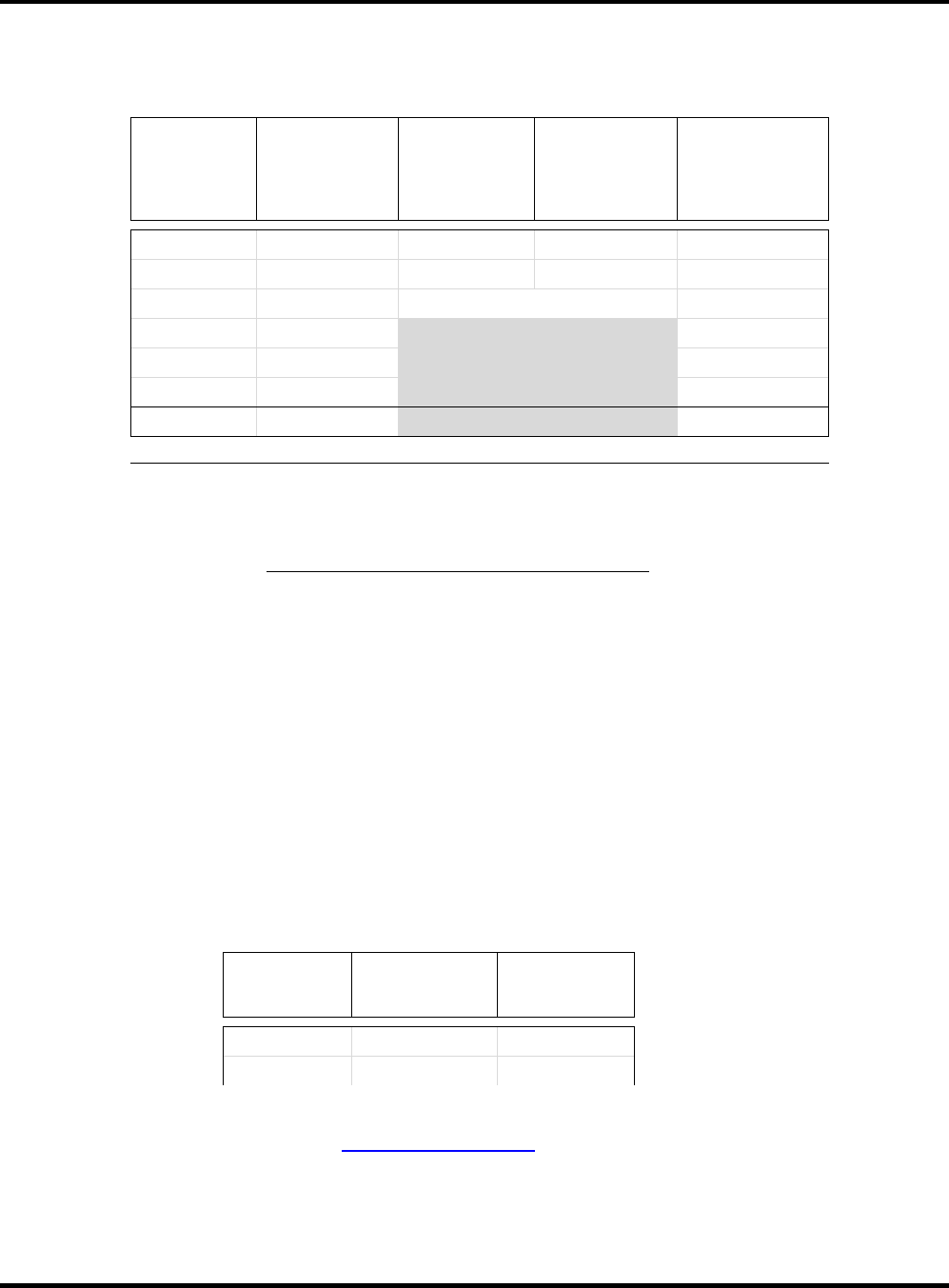
Class Sizes and Teacher Allotment Ratios
Facility Guidelines (January 2019) 62
State Regular Classroom Teacher Allotment Ratio (Executive Order 24, July 24, 2002)
REGULAR CLASSROOM TEACHER ALLOTMENT RATIOS
2018-19
Grade Span
Teacher
Allotment
Ratio
Class Size
(LEA
Average)
Individual
Class Size
Maximum
Recommended
Class Size
(Note 1)
(Note 2)
(Note 3)
(previous levels)
K
1:18
18
21
--
1
1:16
16
19
--
2 - 3
1:17
17
20
--
4 - 6
1:24
26
7 - 8
1:23
Any (See
note 4)
26
9
1:26.5
26
10 -- 12
1:29
29
Teacher Allotment Ratio includes the individual classroom teacher plus other support
faculty/staff who serve more than just a single classroom.
Note 1:
from State Initial Allotment Formulas, FY 2018-19, on DPI website
http://www.ncpublicschools.org/fbs/allotments/state/
Note 2:
Average class size in K-3 shall not exceed the funded allotment
ratio: NC GS 115C-301.c
Note 3:
An individual class size in K-3 shall not exceed the allotment ratio
by more than three students: NC GS 115C-301.c.
Note 4:
S.L. 2013-363, Section 3.3.(a) removed previous class size limitations
in grades 4-12, and provided that "local school administrative
units shall have the maximum flexibility to use allotted teacher
positions to maximize student achievement."
Maximum Legal Class Sizes
A class may exceed the allotment ratio by up to three students, provided the LEA average does not exceed the allotment
(G.S. 115C - 301(c)).
Pre-kindergarten Recommendations
Age
Staff/Child
Ratio
Maximum
Group Size
3 years*
1:10
20
4 years**
1:9
18
* NC General Statutes 110-91(7). Age 3 and younger is "child care," under GS 110-91.
**Pre-Kindergarten, Age 4. “Child Care in North Carolina” published by NC Child Care Resource &
Referral Council. June 2018.
Toilets: NC Building Code, Table 2902.1 requires 1 water closet per 15 children. Therefore, a
Pre-K classroom for more than 15 children would require access to 2 water closets.

Class Sizes and Teacher Allotment Ratios
Facility Guidelines (January 2019) 63
The maximum daily load for teachers teaching only in grades 7-12 is 150 students. Current State Board policy establishes
the maximum class size at 50 students in selected areas such as music, physical education and similar classes, with the
exception of activities such as band and choral music. Keyboarding classes are subject to normal class size limits.
The maximum legal class size is a guide for determining the number of toilet fixtures required (see NC State Plumbing
Code).
Teacher allotment ratios are a good guide, in the absence of more accurate information, for determining the population of
individual classrooms, designing furniture layouts, etc. Note that by the use of local funds, or through the flexibility in the
ABCs of Public Education, many local administrative units may reduce class sizes significantly below these allotment ratios
or increase certain class sizes up to the maximum legal class size.
Session Law 2009-451, the State Budget Act, modified class size requirements for fiscal years 2009-2010 and 2010-2011:
“Notwithstanding G.S. 115C-301 or any other law, local school administrative units shall have the maximum flexibility to use
allotted teacher positions to maximize student achievement in grades 4-12. Allocation of teachers and class size
requirements in grades K-3 shall remain unchanged.”

Stairwell Sign for Multi-Story Elementary Schools
Facility Guidelines (January 2019) 64
Post this sign at all stairwells at level of exit to grade. Size approx. 12" x 18" green letters on white background.

General Design Information
Facility Guidelines (January 2019) 65
Handicap Accessibility Standards
All schools, whether of new construction or existing construction being renovated, must meet the requirements for
accessibility by the handicapped. Accessibility requirements are now part of the International Building Code from which the
NC State Building Code is modeled (re: Chapter 11 – Accessibility). Resources for specific requirements can also be found at
the United States Access Board website (http://www.access-board.gov/ada/).
Each teaching station should have an area that meets the Accessibility requirements of the North Carolina Building Code. In
regular classrooms, this can be accomplished by rearranging the student work surfaces. Laboratories and other specialized
areas may need one station modified for accessibility. Programs for exceptional children may entail design features that
exceed the building code requirements. See the DPI publication Exceptional Children Facilities Planner
(https://www.schoolclearinghouse.org/pubs/exchild.pdf).
Space Profiles
Upon request, School Planning can provide a computerized space profile for a given enrollment (Pre-K-5, 6-8 & 9-12).
These profiles calculate and list the number, types and areas of all the classrooms and other spaces found in a typical school
for a given student population.
Ceilings
2x2 acoustical tile lay-in ceilings are most often used and are acceptable. School Planning recommends the use of gypsum
board for ceilings in small spaces, in areas with low-ceilings, in toilets and dressing rooms, and in unsupervised areas.
Ceilings placed over multi-purpose rooms and gymnasiums should be impact-resistant. Where ceilings are not placed over
these rooms or other similarly large, open spaces, noise reduction can be achieved by installing cementitious fiber roof deck
or acoustical metal roof decking.
Walls
School Planning recommends that walls be constructed of masonry because they generally require less maintenance than
walls constructed with gypsum board over stud framing. An exception would be in administration and guidance areas,
where stud-framed walls covered with gypsum board could provide greater space-use flexibility. If gypsum board walls are
constructed, then double layering the gypsum board or installing abuse-resistant sheetrock is recommended for increased
durability. Installation of chair railing and corner guards is also recommended.
Floors
Primary classrooms should have a good grade of mildew resistant carpet, since many activities take place on the floor. For
flexibility, large area rugs that can be removed for periodic cleaning are useful. Resilient tile is recommended for other
classrooms and for wet areas in carpeted rooms. Multipurpose rooms and gymnasiums should have resilient floors such as
wood, synthetic or high density carpet. Carpeting is often desirable in corridors for acoustical control. There should be a
separate area of carpet at outside doors so that it can be replaced easily. Terrazzo is often used in corridors when durability
is desired.
Construction Materials
School Planning strongly discourages the use of wood or other combustible material (NCSBC Type III or Type V construction)
in new school buildings or school additions that do not have sprinklers to fully protect the structure. Exceptions can be
made for Type IV (heavy timber) construction. Wood structural systems can be designed and constructed to meet
structural and fire code requirements, especially if used in sprinklered buildings. A primary concern, however, is the
potential for wood construction to be exposed during subsequent repair procedures, renovations, modifications or
structural additions, which could compromise the structural and fire resistive integrity of the original construction.

General Design Information
Facility Guidelines (January 2019) 66
New and Relocated Modular/Mobile Units
Construction documents are to be developed and submitted to the School Planning Section of DPI for review and comment,
and to the local building inspections department for approval and permitting. Documents are to include the following:
1. Site plans showing:
a. Proposed locations for units and any joining of multiple units.
b. Distances to both student and staff toilets (200-foot maximum).
c. Distances between units and to adjacent buildings.
d. Adequate number of toilet facilities, as required by building code for the entire campus. Note: This may require
the installation of modular toilet units.
e. Electric feeders, disconnects, etc., as required by code.
f. Domestic water and waste services.
g. Telephone, intercom, MATV, computer and other electronic systems.
h. Smooth-surface walkways from permanent buildings that meet handicap code requirements and provide ADA
access. Provide canopies over walkways between buildings where required.
i. Confirmation that units are constructed by a DOI-approved manufacturer and certified by an approved third-party
agency.
2. Foundation plans:
a. Provide foundation plans showing the location of masonry piers and tie down anchors, size of masonry piers and
their footings.
b. All footings shall rest on undisturbed soil or compact fill having a minimum allowable bearing capacity of 2000 psf.
c. The bottom of footings for masonry piers shall be at a depth that is below the local frost line, but no less than 12”
below finished grade.
d. Masonry piers should be laid in Type S mortar. Alternately, masonry piers may be dry-stacked if all four sides are
properly coated with surface bonding cement and the first course above the footing is set in a bed of mortar.
Under no circumstances can masonry piers be placed on the surface of existing asphalt pavement.
e. Provide concrete footings to anchor and support posts of ramps, steps and platforms.
f. Foundations for mobile/modular units must designed for site-specific conditions and must comply with the
requirements of the NC State Building Code in force on the date of installation. School Planning strongly
recommends that a local design professional be engaged to provide foundation design services.
g. Foundation plans and details developed by a local or third party engineer must bear the engineer’s seal and
signature with current date.
3. Building Plans:
a. Provide architectural drawings from manufacturer showing compliance with NC State Building Code, including
accessibility provisions, Fire Code and Plumbing Code. Drawings are to bear the seal and signature, with current
date, of an architect or engineer licensed to practice in North Carolina.
b. Provide manufacturer’s plumbing, mechanical and electrical drawings bearing the seal and signature, with current
date, of an engineer licensed to practice in North Carolina.
4. Other considerations:
a. Connections between mobile/modular units and to permanent buildings should be indicated on building plans.
Though not required by Code, School Planning recommends two-way intercom systems for safety, computer
networking, telephone systems, and MATV connections between all units and the permanent school structures.
b. Multiple classroom and large modular buildings require particular attention to life safety systems, Fire Code
provisions, and to plumbing and electrical connections during on-site assembly.
c. Heating and air-conditioning units should be inspected, tuned and balanced before occupancy, especially if they
are in a mobile/modular unit that has been moved from another location.

General Design Information
Facility Guidelines (January 2019) 67
Fieldhouse, Concession and Smaller Construction Projects
Construction documents Fieldhouse, Concession and smaller projects are to be developed and submitted to the School
Planning Section of DPI for review and comment. Documents are to include, at a minimum, the following (as applicable to
type of project):
• Site Plan showing relationship to playfields, drives, walks, parking areas and other buildings; site improvements.
• Dimensioned Floor Plan(s) showing room layouts and usage, walls, windows, doors, finishes, built-in equipment,
and other features to fully describe the building interior.
• Exterior Elevations showing windows and doors, wall and roof cladding materials, roof drainage, control joints and
other features to fully describe the building exterior.
• Cross Section(s) through structure showing construction materials and details. Cross section(s) should include
dimensions for ceiling height above finished floor, eave height, roof slope, etc.
• Enlarged details and wall sections as needed to fully describe the building architecturally for bidding purposes and
construction.
• Foundation Plan showing footings and slab-on-grade. Provide footing schedule if spread footings are required.
• Upper Level Floor Framing Plan (if needed) and Roof Framing Plan showing types(s) and size(s) of framing
members (beams, girders, joists trusses, columns), decking, lateral force resisting system elements, wall
construction (framed or masonry), lintel and header schedules. Provide seismic reinforcing for masonry walls used
as part of the seismic force resisting system.
• Notes, details and sections as needed to fully describe the structural elements and systems for bidding purposes
and construction. Include Structural Design Data as well as member connection and member bearing details.
• Plumbing Plan(s) showing fixtures, piping, riser diagrams and other features to fully describe the required
plumbing system for bidding purposes and construction.
• Mechanical (HVAC) Plan(s) showing equipment, ductwork and other features to fully describe the required
mechanical system for bidding purposes and construction.
• Electrical Plan(s) showing light fixtures (including emergency lighting if required), circuiting and other features to
fully describe the required electrical system for bidding purposes and construction.
• Other drawings as necessary to fully describe the building construction.
If a project features a pre-engineered structure, shop drawings of the building system, produced by the successful bidder,
are to be submitted to DPI School Planning as a final step in the review process. School Planning may issue a “Certificate of
Review” for the project without submission of such shop drawings under special circumstances.
Outdoor Bleachers
Following are general guidelines for the design of outdoor bleachers that are to be installed at public school facilities:
1. Bleachers with more than 5 rows shall be anchored to a continuous, level 4” minimum thick concrete slab under the
full footprint of the bleachers. The concrete shall have a minimum 28-day compressive strength, fc’, of 3000 psi, and
shall be reinforced with 6x6 w2.9 x w2.9 welded wire fabric (minimum). Slab control joints and bleacher anchorage
details shall be shown on the construction document(s) and/or shop drawing(s) for the bleachers.
2. The support frames of bleachers with 5 rows or less may be placed on strip footings or leveled “mud sills”. School
Planning recommends, but does not require, placement of a continuous concrete slab within the footprint of bleachers
with 5 rows or less.
3. Lateral bracing shall be provided in both directions in the support frames of bleachers.
4. Where aluminum and steel elements must be fastened together, neoprene pads shall be installed between them to
prevent contact and minimize the possibility of corrosive reaction due to dissimilar metals.

General Design Information
Facility Guidelines (January 2019) 68
5. Secure the approval of the local Building Authority (or inspector) for bleacher construction during the Design Phase of
the project.
6. The North Carolina Department of Insurance, Office of the State Fire Marshal, must review and approve plans for
outdoor bleacher projects that involve 1,000 or more seats and all projects over 20,000 square feet in area.
7. Damaged hot-dipped galvanized coating should be repaired with galvanized repair paint in accordance with ASTM A780
and manufacturer’s written instructions.
8. Any field modifications to the bleachers shall be carried out under the direction or supervision of the engineer of
record.
9. Installation of chain link fencing is recommended for closing off the ends and backs of bleachers as a means of limiting
access to the areas below them.
Construction documents are to be developed and submitted to the School Planning Section of DPI for review and comment.
Documents are to include, at a minimum, the following:
• Site Plan drawn to scale showing relationship of bleachers to playfields, drives, walks, parking areas, other
buildings and site improvements. Site Plan should also show locations of restrooms and distances between
bleachers and restrooms. Include number of fixtures provided by each restroom.
• Bleacher Plan(s) drawn to scale showing seating layout, aisles, ramps, steps, railings, guards, handicapped seating
cutouts, dimensions and relationships to adjacent site features and improvements.
• Cross section through bleacher/stadium construction showing all elements, including but not limited to, seat/foot
boards, railings/guards, foundations, concrete slab under footprint, and other features as needed to fully describe
the project. Include dimensions such as riser height, row spacing, heights above grade, railing/guard heights, etc.
• Enlarged details of conditions as needed to fully describe the project for bidding purposes and construction.
• Bleacher/grandstand shop drawings produced by the successful bidder. Shop drawings shall be submitted to DPI
School Planning for review as a final step in the review process and for securing a “Certificate of Review.”

Deviation from the NC Public School Facilities Guidelines
Facility Guidelines (January 2019) 69
School Planning will evaluate plans for general compliance with the “Guidelines.” Note that the “Guidelines” may not be
applicable to facilities with non-traditional educational programs. Such facilities will be evaluated on the basis of their
individual educational program. When deviations are identified during the review process, School Planning will prepare a
“Deviation from the North Carolina Public School Facility Guidelines” form for inclusion in the permanent file for the
individual school property, with a copy forwarded to the designer and the local administrative unit. The completed form will
describe the nature of the deviation. Deviations identified are available for reporting to the State Board of Education each
quarter. Additional comments by School Planning may be submitted to the State Board along with the deviation form, if
the issues are not clearly addressed.
A copy of the deviation form is provided on the following page.
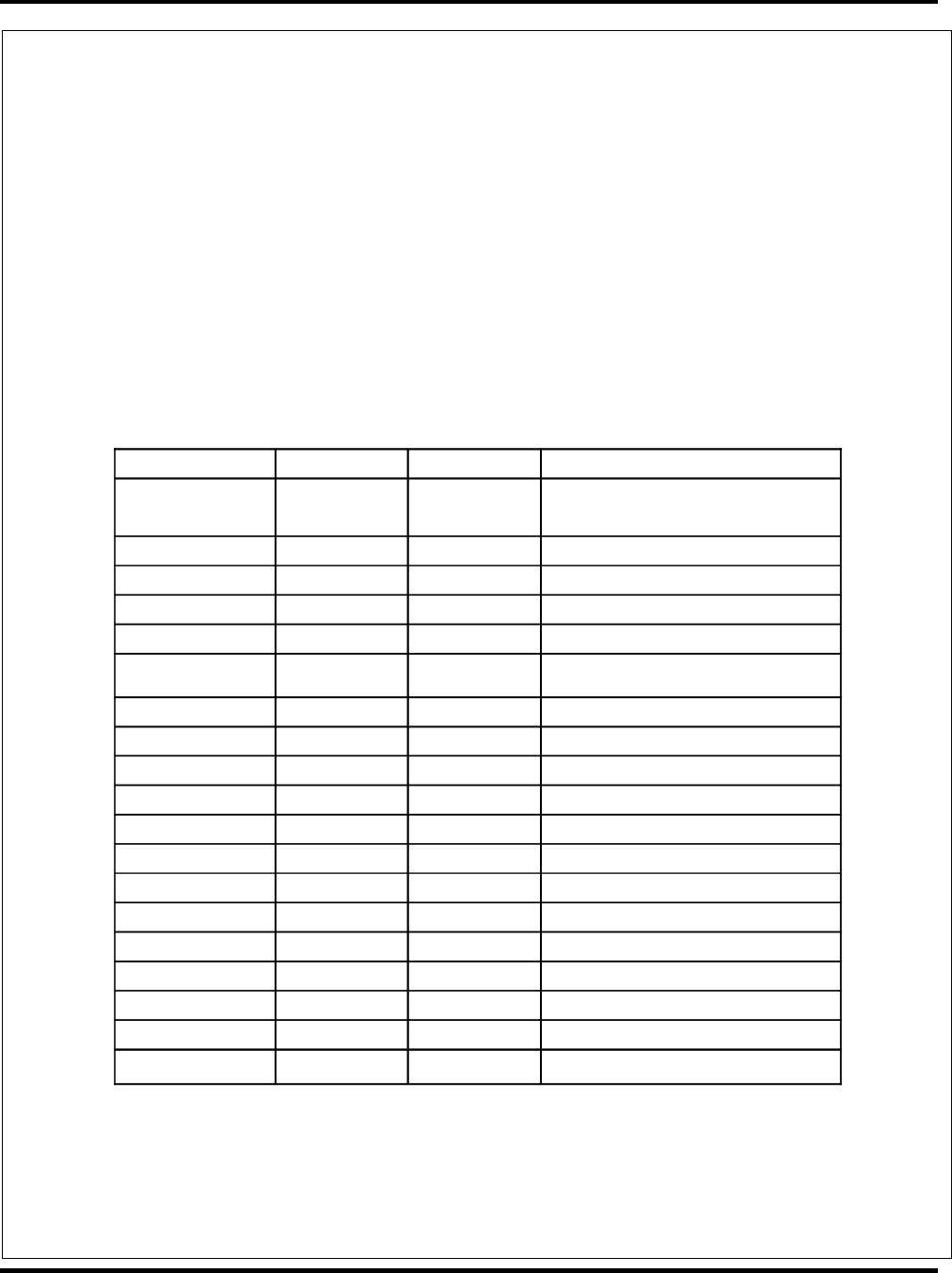
Deviation from the NC Public School Facilities Guidelines
Facility Guidelines (January 2019) 70
Deviation From the
North Carolina Public Schools Facility Guidelines
Date:
Local Board of Education:
Designer:
School Facility & Project:
The items noted below are significantly less than the guidelines adopted in the "North
Carolina Public Schools Facility Guidelines." The failure to construct facilities equal to
or better than these guidelines may result in the inability to provide an effective
educational progra m, reduced function of the facility, impaired performance of building
systems or other significant problems.
A copy of this notice is being placed in the permanent file for this school facility.
Guidelines Amount Show n Comments/Explanation
Site No pedestrian /
vehicular conflicts
Drive/parking
encircling school
buildings
Drive and parking is across path of travel to play
fields for afternoon practice w hich is a major safety
hazard
K Regular Classrooms 1200 sq. ft.
1-3 Regular Classrooms 1000 sq. ft.
4-8 Regular Classrooms 850 sq. ft.
9-12 Regular Classrooms 750 sq. ft.
Science
Classrooms/Labs
Exceptional Children
Music
Visual Arts
Theater
Dance
Workforce Development
Media Center
Physical Education
Staff Offices
Circulation
Other (Itemize)
pc: ____________Board of Education
____________Superintendent
____________Designer
____________Project File

Recommended Lighting Systems, with Illumination Levels
Facility Guidelines (January 2019) 71
INTERIOR LOCATIONS
Work Surface Illumination in Maintained Foot-
Candles**
TYPE OF LIGHTING FIXTURES (1)
Task Area /
Recommended fc
General Area
Recommended
fc
Weighted
Average
fc
Auditoriums
Seating Area
0%/na
100%/20
20
Fluorescent (Dimming or Multiple
Switching)
Stage Set-Up
0%/na
100%/20
20
Fluorescent
Concerts on Stage
65%/50
35%/30
43
Fluorescent
Drama with Accents
Variable
Variable
Incandescent (Tracks with Dimming
Equipment)
Lobby
10%/25
90%/15
16
Cafeterias
Kitchen/Serving Area
50%/75
50%/40
58
Fluorescent
Dining Room
50%/50
50%/30
40
Fluorescent
Cashiers
50%/75
50%/40
58
Fluorescent (Task Lighting)
Dish Washing
50%/75
50%/40
58
Fluorescent (Listed for Wet Locations)
Classrooms
General
65%/50
35%/30
43
Fluorescent
Art
65%/50
35%/30
43
Fluorescent
Computer
65%/50
35%/30
43
Fluorescent
Drafting
65%/50
35%/30
43
Fluorescent
Home Economics
65%/50
35%/30
43
Fluorescent
Computer Areas in
Classrooms
65%/50
35%/30
43
Fluorescent indirect or parabolic lens
General Laboratories
30%/75
70%/50
57.5
Fluorescent
Speech/Lip-reading
65%/50
35%/30
43
Fluorescent
Music
65%/50
35%/30
43
Fluorescent
Sewing
50%/100
50%/30
65
Fluorescent (Task Lighting)
Shops
25%/75
75%30
41
Fluorescent (Higher Levels Can be
Used for Detail Works)
Typing
65%/50
35%/30
43
Fluorescent indirect or parabolic lens
Corridors and Stairwells
(Use Remote or Keyed Switching)
Corridors
0%/ na
100%/15
15
Fluorescent
Stairways
0%/na
100%/20
20
Fluorescent
Trophy Cases
100%/15
0%/ na
15
Compact Fluorescent
Gymnasiums - Use Multiple Switching to Obtain Various Levels
Competition between
Schools
0%/na
100%/75
75
Metal Halide, Fluorescent
Physical Education
0%/na
100%/50
50
Metal Halide, Fluorescent
Lockers and Showers
100%/40
0%/na
40
Fluorescent Listed for Wet locations)
Elementary
(Multipurpose)
0%/0
100%/30
30
Metal Halide or Fluorescent
Mechanical, Electrical
& Boiler Rooms
0%/na
100%/30
30
Fluorescent (Industrial Fixtures) or
Incandescent if on while
“Temporarily” Occupied
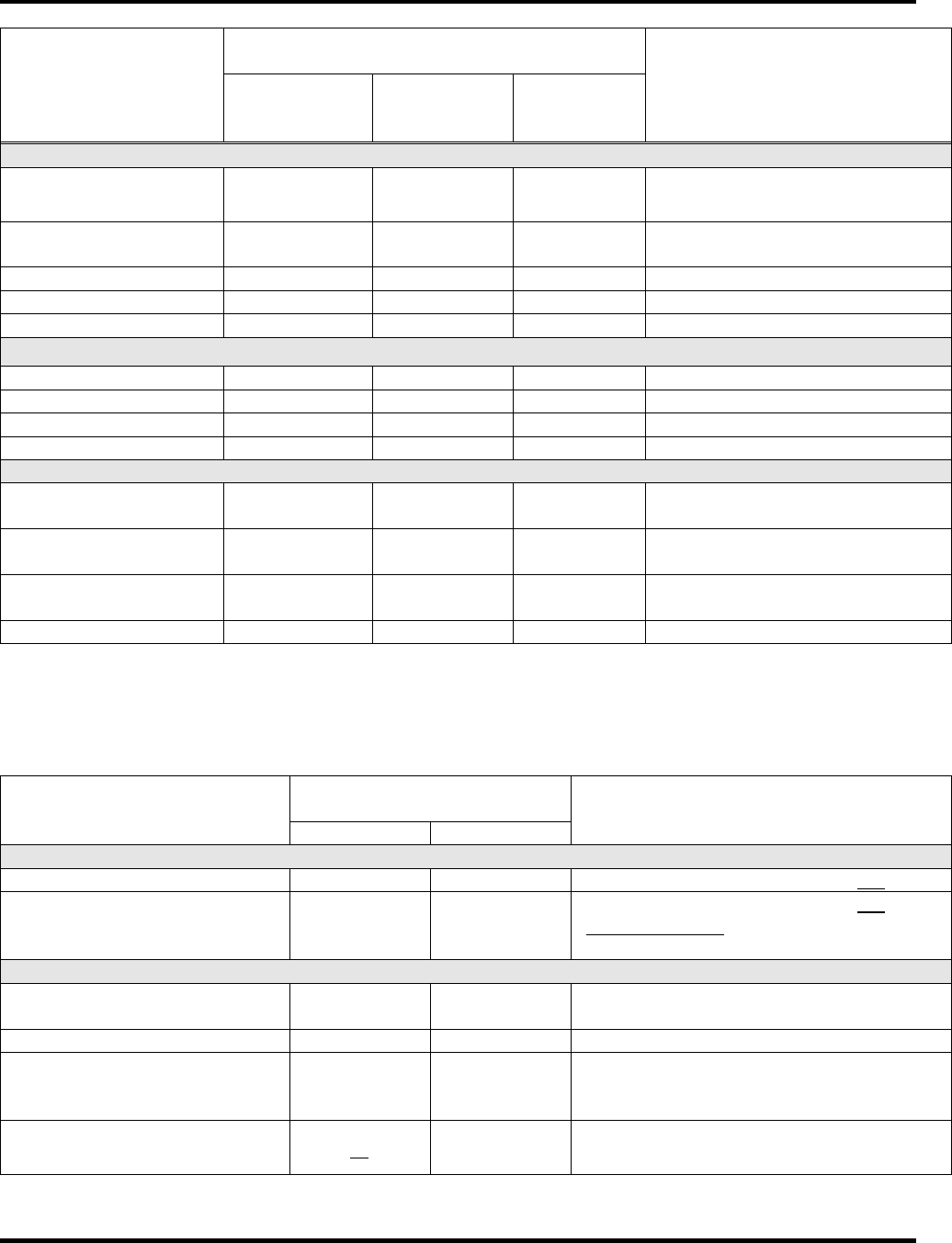
Recommended Lighting Systems, with Illumination Levels
Facility Guidelines (January 2019) 72
INTERIOR LOCATIONS
Work Surface Maintained Illumination in Foot-
Candles**
TYPE OF LIGHTING FIXTURES (1)
Task Area /
Recommended
fc
General Area /
Recommended
fc
Weighted
Average
fc
Media Centers
Reading Room, Check
In/Out
90%/50
10%/30
48
Fluorescent
Book Stacks, Magazine
Racks
80%/50
20%/20
44
Fluorescent
Office Areas
80%/50
20%/30
46
Fluorescent
Storage
100%/20
0%/na
20
Fluorescent
AV Repair
20%/50
80%/20
26
Fluorescent (Task Lighting)
Offices
General Office Work
80%/50
20%/30
46
Fluorescent
Close Work
50%/100
50%/30
65
Fluorescent (Task Lighting)
Teacher Workroom
80%/50
20%/30
46
Fluorescent
Conference Room
50%/50
50%/30
40
Fluorescent
Storage Rooms, Pipe Chases,
Attics, Crawl Spaces
100%/20
0%/na
20
Fluorescent (or Incandescent if on
“Temporarily” While Occupied)
Swimming Pools
0%/na
100%/50
50
Metal Halide or Fluorescent (Listed
for Wet Location)
Washrooms/Group Toilets
10%/50
90%/20
23
Fluorescent (Use Remote or Keyed
Switching)
Washrooms/Faculty Toilets
10%/50
90%/20
23
Fluorescent
(1) LED Fixtures can be considered for many applications but may add additional cost. Consider having an alternate for LED to allow
financial flexibility.
Exterior Locations (All Fixtures shall be listed for Wet Locations and Outdoor Use)
EXTERIOR LOCATIONS
Work Surface Maintained
Illumination in Foot-Candles*
TYPE OF LIGHTING FIXTURES
Minimum
Maximum
Building Exterior
(For Security Purposes)
1
1 1/2
High Pressure Sodium, Metal Halide, LED
Parking Lots and Walkways
1
1 1/2
High Pressure Sodium, Metal Halide, LED
(Consider solar LED. Compact Fluorescent can
be used for walkways)
Sports Complexes***
Soccer/Football Stadium
Badminton/Volley Ball/
30
50
Metal Halide
Tennis Courts
20
30
Metal Halide
Baseball/Softball
Outfield
Infield
20
30
30
50
Metal Halide
Metal Halide
Separate Running Tracks (Not a Part
of a Football or Baseball Stadium)
20
20
Metal Halide
* Based on IESNA Recommendations ***Refer to NCHSAA for state play-off lighting standards.
**Based on NEIS LPD (Lighting Power Density) Models

Review of Projects by NC DPI School Planning
Facility Guidelines (January 2019) 73
Types of Projects Reviewed
Types of Projects Not Reviewed
All New Construction, Renovations, Additions
New athletic fields, grandstands, press box, field
houses, concession stands, dugouts, etc.
New and Relocated Modular classroom units, ramps,
steps, walkways, etc. including foundations
Repair or replacement of structural systems
New dropped (lay-in) ceiling in existing schools
Replacing Windows and/or Doors
Hazardous material abatement in existing buildings
where building systems are affected
Upgrade or replacement of fire alarm system
Demolition of existing school building
Demolition of buildings other than school buildings
Reroofing, over-roofing
Roof patching or maintenance.
Relocating partitions; adding or deleting doors
Any repair or maintenance, such as replacing flooring,
patching walls, repainting, etc.
New Parking or Drives
Repairing asphalt, potholes, etc. or resurfacing existing
Improvements required by ADA
Additions of simple ramps, etc. or signage
Change-out of plumbing fixtures or change in type of
fixtures
Plumbing replacements in-kind; replace faucets or other
minor components
New domestic water heating system, or upgrade
Water heater replacement with same type and size.
New HVAC systems; new boilers; new chillers; changes
in type of system; demo and replacement of air
distribution system, etc.
HVAC equipment replacement in-kind; small air handling or
condensing units (5 ton or less); air diffusers and grills; fan,
heaters, etc.
Upgrade or redesign HVAC control system
Replacement of HVAC control components
New energy conservation system
Repair of existing insulation
Complete replacement of exist HVAC or plumbing
piping systems; extension of existing system
Repair of existing piping
Major components of Power Distribution System
Adding electrical outlets to existing systems
New lighting systems (interior or exterior)
Replacing or adding lighting fixtures to existing systems
New Installations or Major changes to Technology
systems, security systems, CCTV, etc. including
complete replacement of systems or in cases where life
systems are affected.
Minor Renovations to technology systems (tel/data,
intercom, security, CATV etc.)
New system affecting health, or welfare of students or
personnel such as fire suppression, emergency power
generation, etc.
Replacement of isolated safety components with new
elements meeting code and similar to those currently in
service.
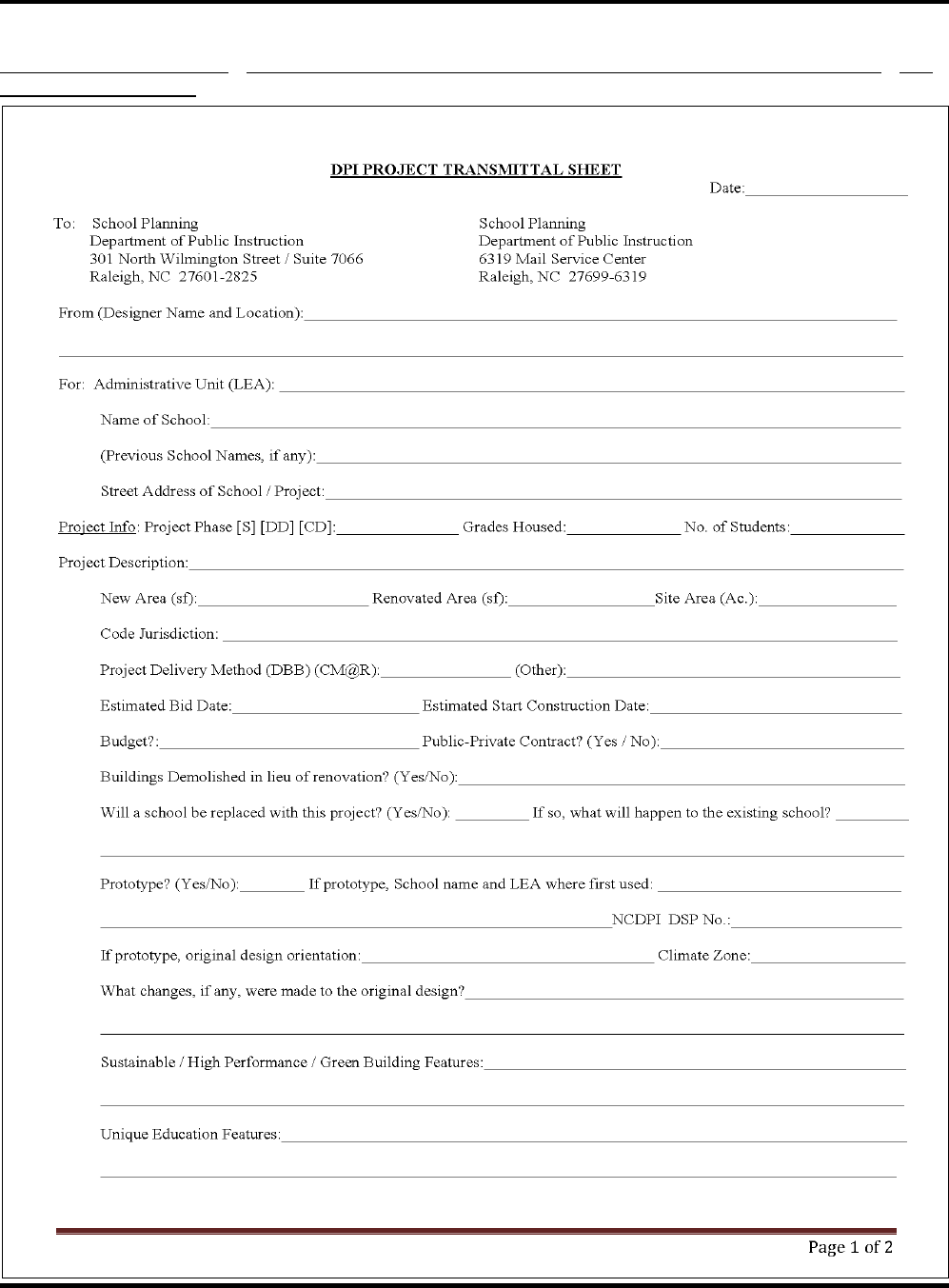
DPI Project Transmittal Sheet
Facility Guidelines (January 2019) 74
This document is available in MS Word format on the DPI School Planning website (https://www.schoolclearinghouse.org >
PUBLICATIONS & GUIDELINES > School Planning: Facilities Guidelines, Publications, Planning Guides, Space Profiles > Plan
Review Transmittal Sheet).
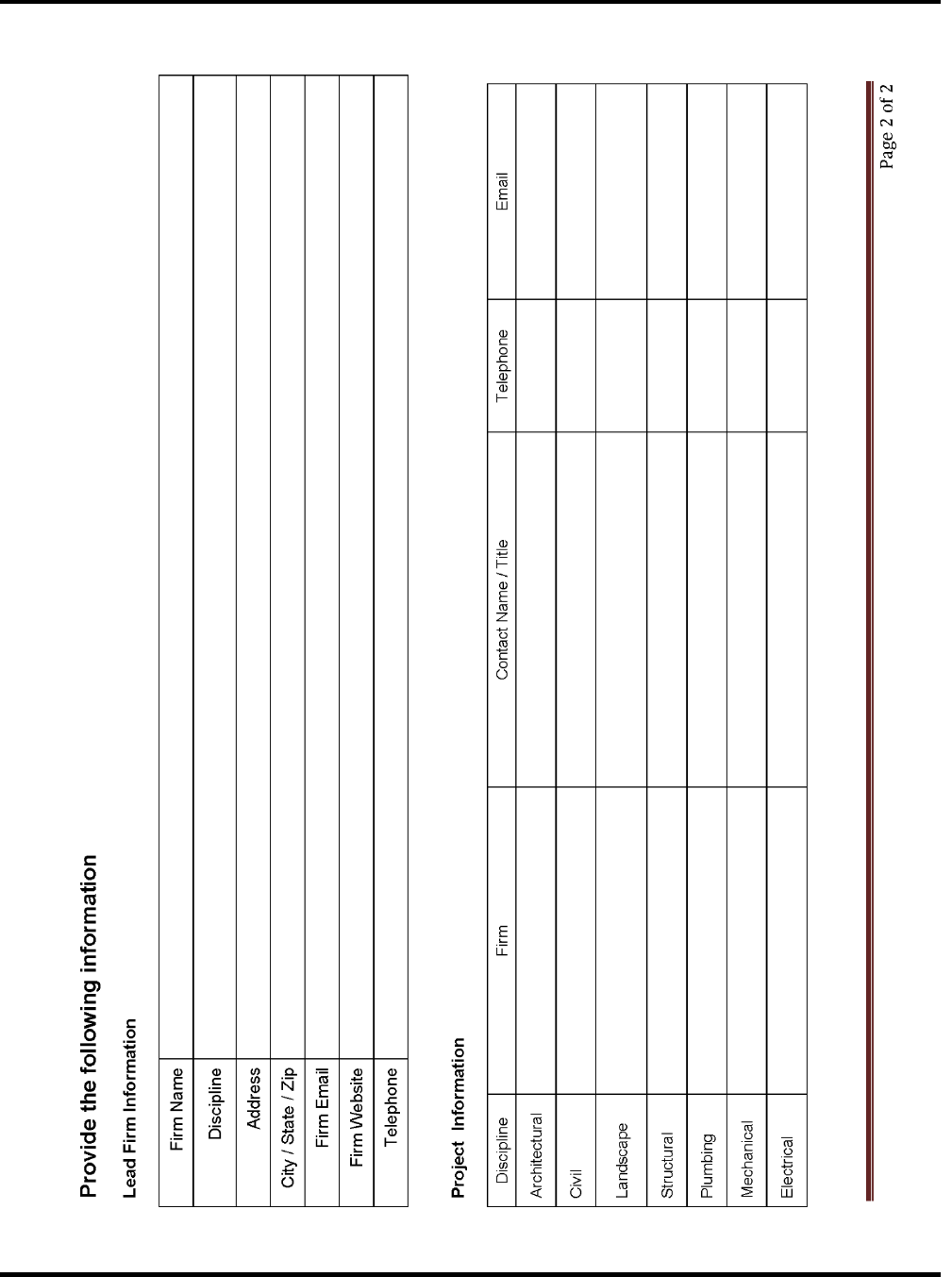
DPI Project Transmittal Sheet
Facility Guidelines (January 2019) 75

Definitions and Abbreviations
Facility Guidelines (January 2019) 76
ADA: Americans with Disabilities Act
ADM: Average Daily Membership
AFF: Above Finished Floor
DEQ: North Carolina Department of Environmental Quality (formerly Department of Environment and Natural
Resources, DENR)
DPI, NCDPI: North Carolina Department of Public Instruction
DSP NO. A unique, permanent number assigned by School Planning for each real estate property owned by an LEA.
The number is formatted as 000-9999 where the first three numbers indicate the LEA number and the last
four digits the property number. This number is different from the DPI assigned "School Number" and
never changes.
G.S. General Statute
HVAC: Heating, ventilating and air conditioning
LEA: Local Education Agency (the local school system administrative unit, county or city)
NCSBC: North Carolina State Building Code
OSFM: Office of the State Fire Marshal, North Carolina Department of Insurance
P.E.: Physical Education
RLV: Reading, Listening, Viewing Room (the main room in a media center)
SBE: State Board of Education
Sq. ft., SF Square foot (a common unit of area measurement consisting of 144 square inches or a square measuring
12 inches (1 foot) in each direction)
SIMS: Student Information Management System (formerly NC WISE)
NC WISE: North Carolina Window on Student Education (replaced by SIMS)
NCHSAA: North Carolina High School Athletic Association

1996 Public School Facilities Task Force Members
Facility Guidelines (January 2019) 77
Mr. Kenneth R. Harris, Task Force Chairman, Member, State Board of Education
Mr. Paul D. Boney, AIA, Boney Architects
Dr. John McKnight, Associate Superintendent, Pitt County Schools
Dr. Norma H. Sermon-Boyd, Superintendent, Jones County Schools
Mr. Ed Regan, NC Association of County Commissioners
Dr. Ed Dunlap, NC School Boards Association, Inc.
Mr. Douglas Y. Perry, PE, Douglas Y. Perry Associates, PA
Mr. Spencer Graves, Wake County Public Schools
Dr. Reginald Teague, Winston-Salem/Forsyth Schools
Dr. John Griffin, Superintendent, Cumberland County Schools
Mr. Marshall Roberts, AIA, Buncombe County Schools
Dr. Thomas Ledbetter, Assistant Superintendent, Henderson County Schools
Mr. Harlan H. Boyles, State Treasurer
